Europe, Part 3: Across Germany into Prague
— Europe — 10 min read
April 21 - 25, 2011
After my month-long stay in Paris, where the trip changed directions, I was ready to hit the road and head for Africa. Instead of the original plan of going down the west coast, I was now heading for Egypt and the east coast of the mother continent. There was a ferry to catch from Venice in two weeks time heading for Alexandria and before that I planned to visit an old friend and meet some new ones as I made my way down to the Mediterranean.
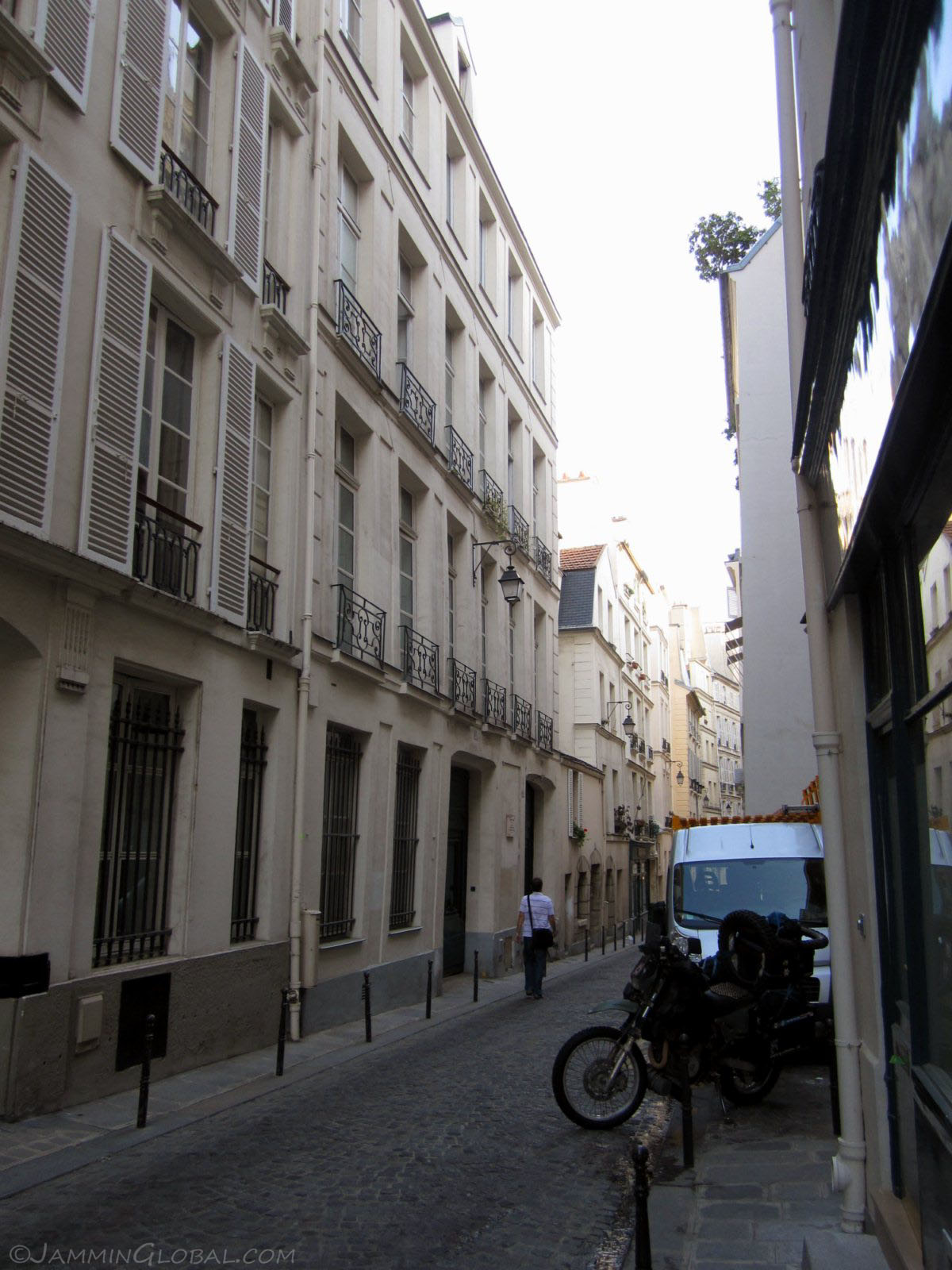
Leaving the narrow streets of Paris that I called home for a few weeks and heading back into the saddle.
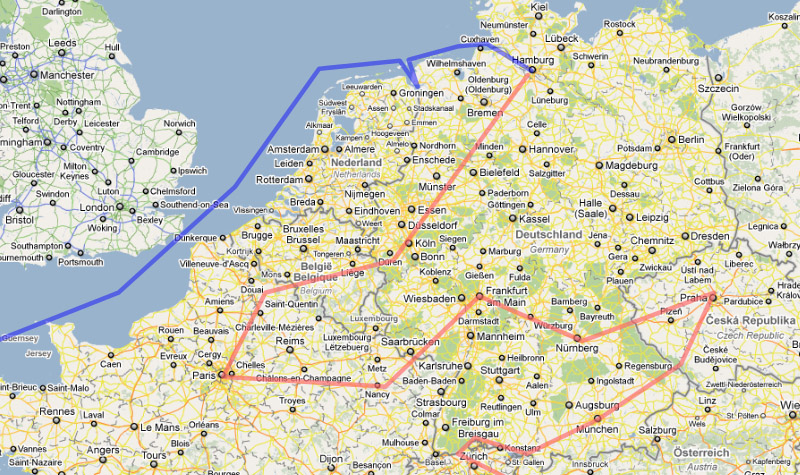
My route across Europe. Besides the one day jaunt from Hamburg to Paris, it happened to be about two months since I traveled with sanDRina (counting the month-long sea voyage from Argentina). I was heading to Prague to meet an old friend for the weekend. Click on it to go to the interactive version in Google Maps.
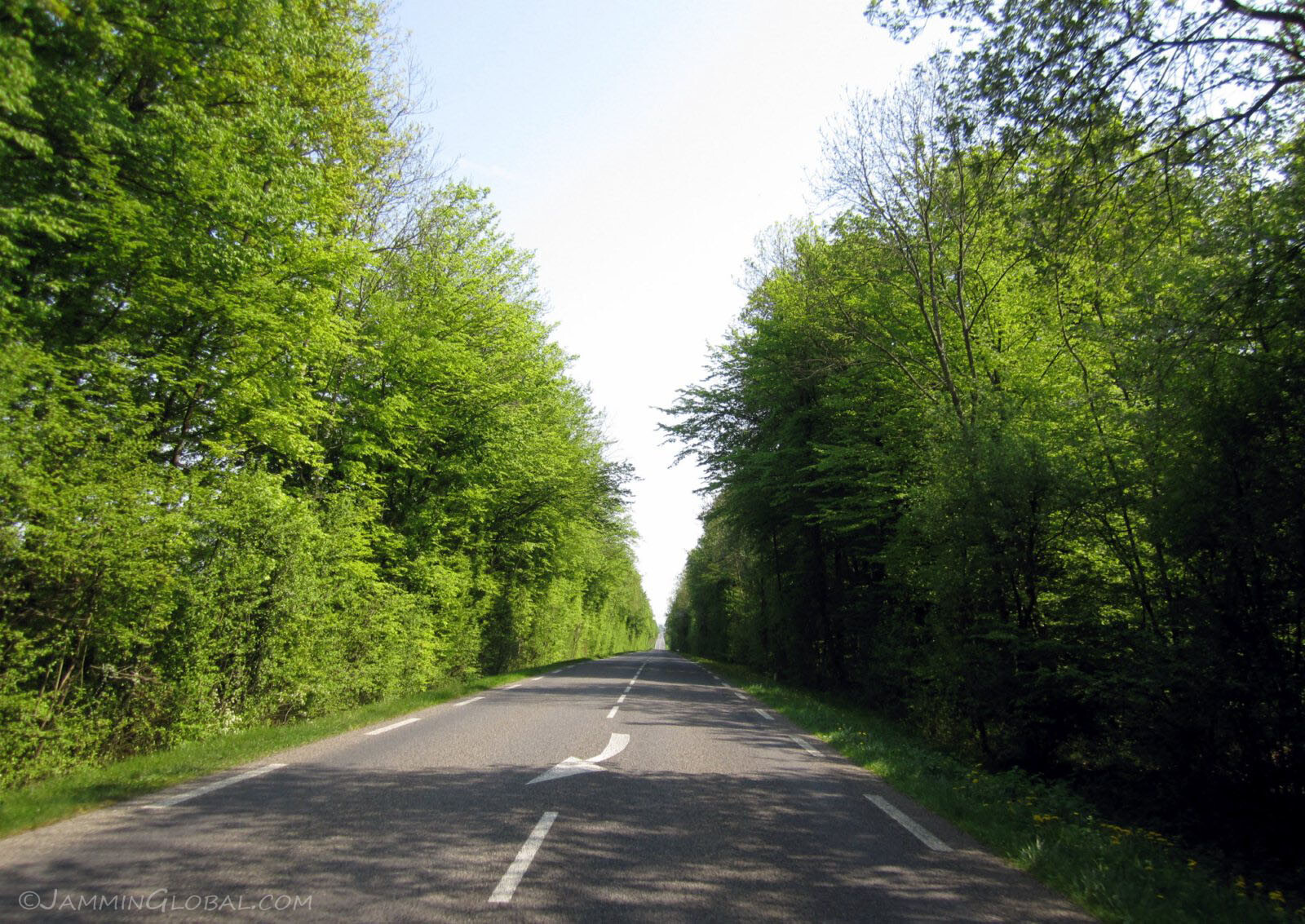
With time on my side, I didn't need to take the expensive French Autoroute tolled highway and quite enjoyed the secondary roads heading east to Germany. Note the directional arrow in the center of the road, indicating an upcoming curve. I guess they didn't want to spoil the view with metal signs.
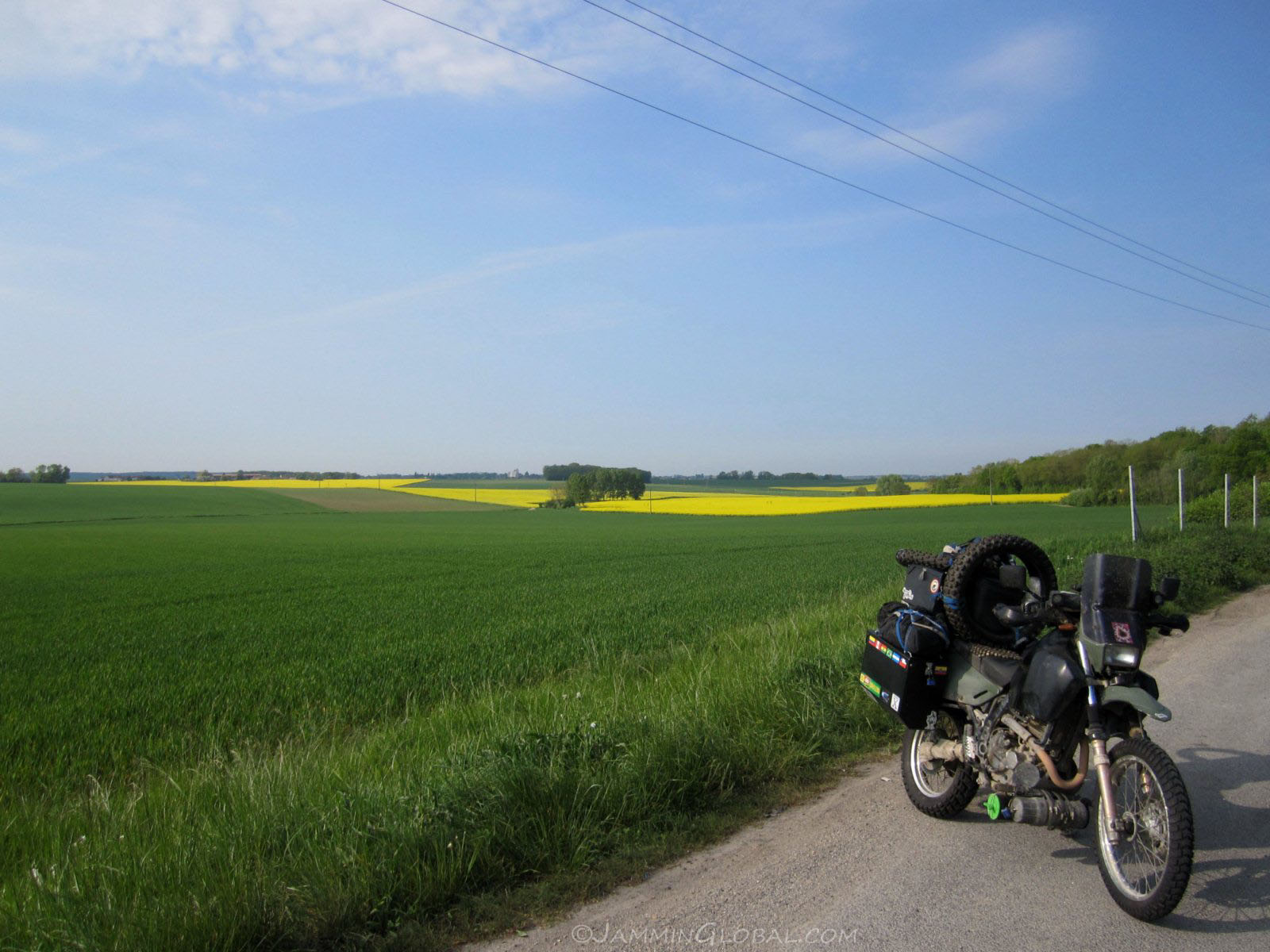
Taking a break from the hectic overtaking near some fields. It appeared many other drivers had the same idea of bypassing the Autoroute and the secondary roads were packed with trucks and madly overtaking French compact cars.
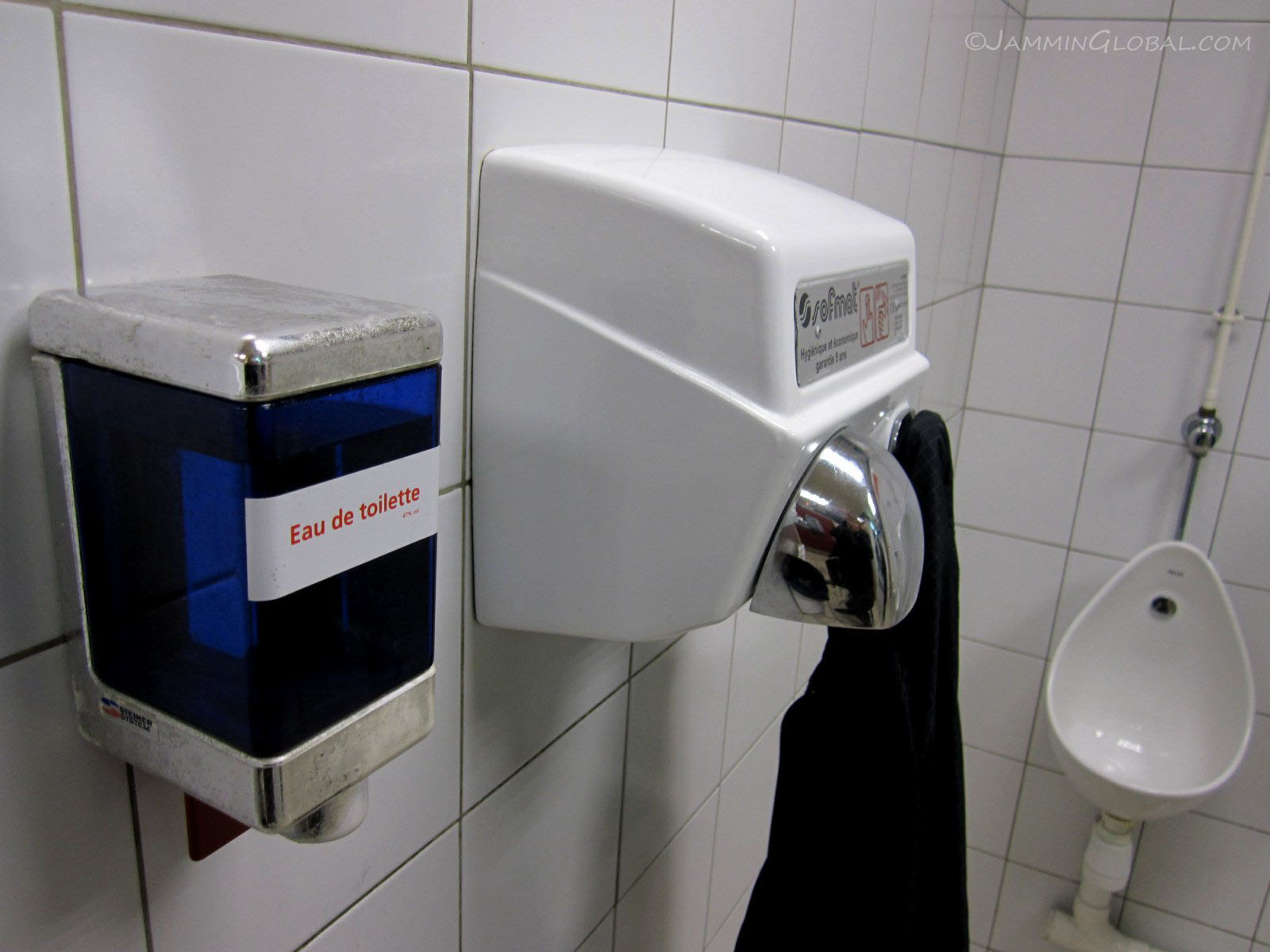
At a rest stop; now you see where the phrase 'eau de toilette' comes from. It translates as 'water from the toilet' and refers to cologne that you use to freshen up in the bathroom, not water from the bowl. The French have made toilet water sound so chic.
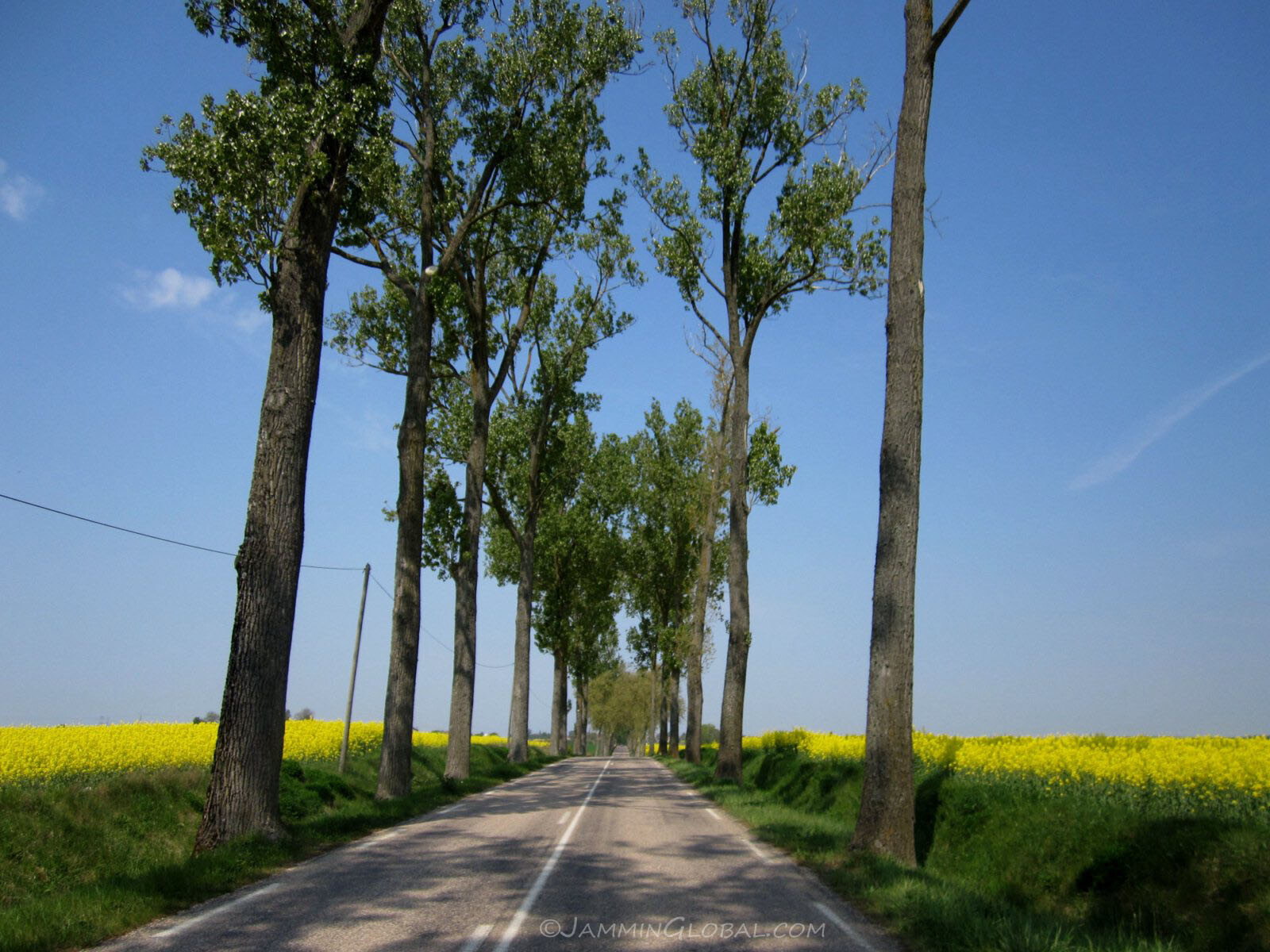
From the movies, I had this image of a road cutting through fields lined with tall trees as being very French and here I was. I was smiling.
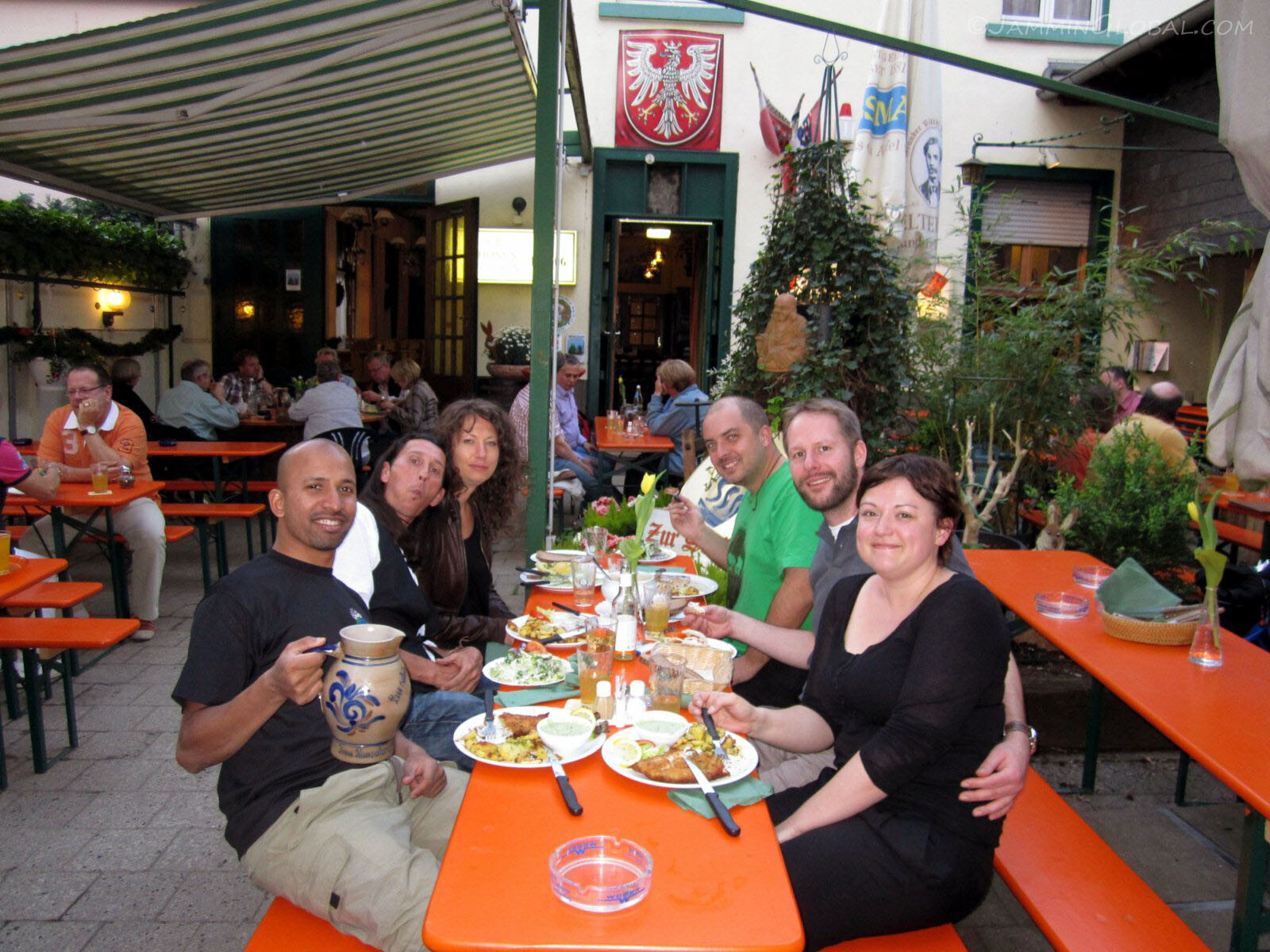
On my way to Prague, I stopped for the night in Frankfurt and through Thomas in Switzerland, I was put in touch with Silke and Oli (far right), who live here and rode two-up through South America a while back and were glad to host a passing traveler for a night. Dave in the green shirt is a current traveler on a DRZ400 and just happened to be staying with them. I would see him again soon. The couple on the left are friends of Silke's. Thursday evenings are meant for drinking Apfelwein (apple wine) in Frankfurt. It's the local liquor of choice and is comparable to a strong cider.
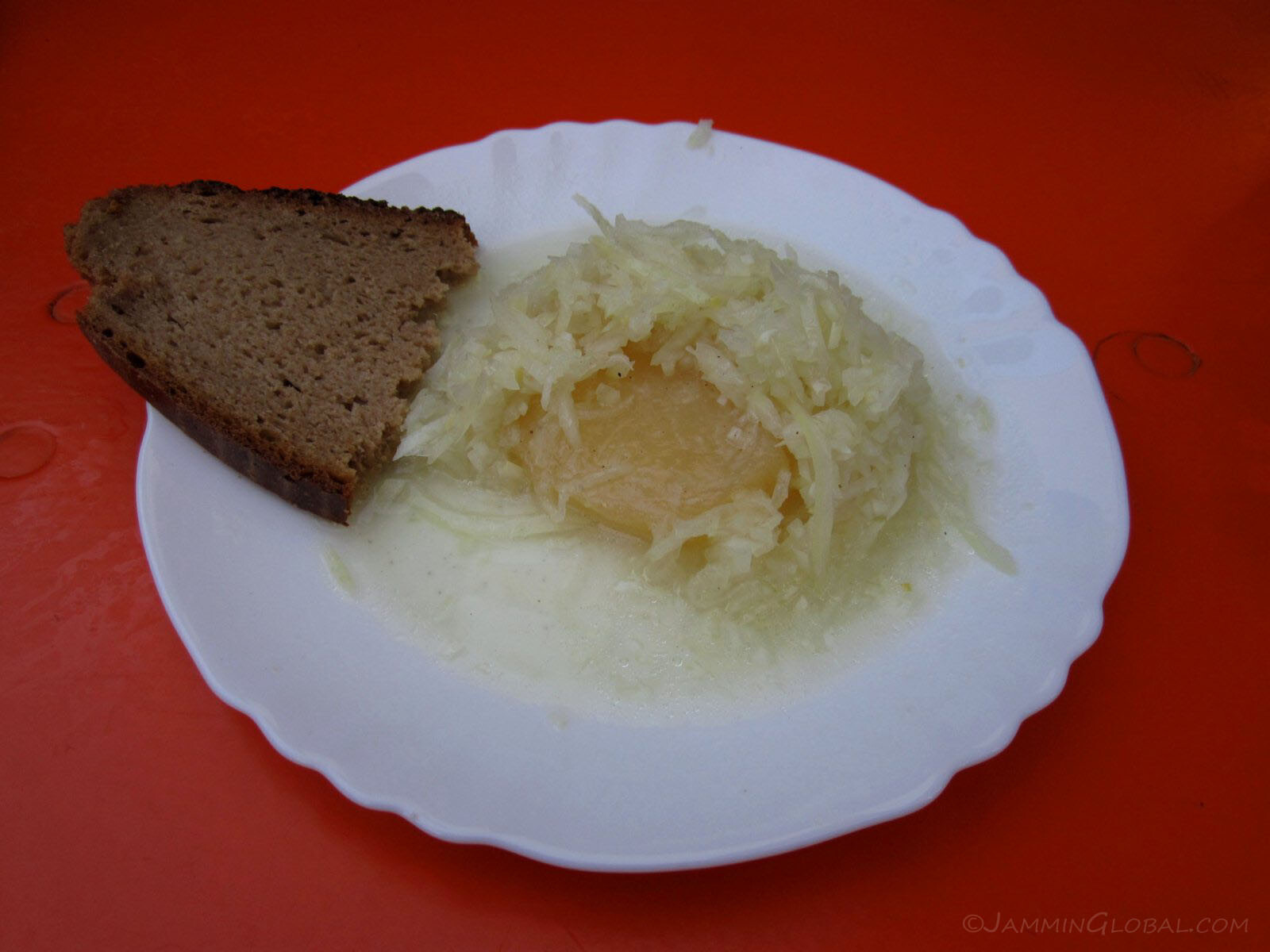
Along with the Apfelwein, we had some regional food. This dish is called 'Handkäse mit Music,' which means hand cheese with music. It's a marinated sour milk cheese with a pungent aroma served with lots of onions and here with rye bread. Usually people outside of the Hesse region of Germany don't like this, but it went down quite well with me. The 'music' part refers to the gas that most patrons produce after consuming all the onions.
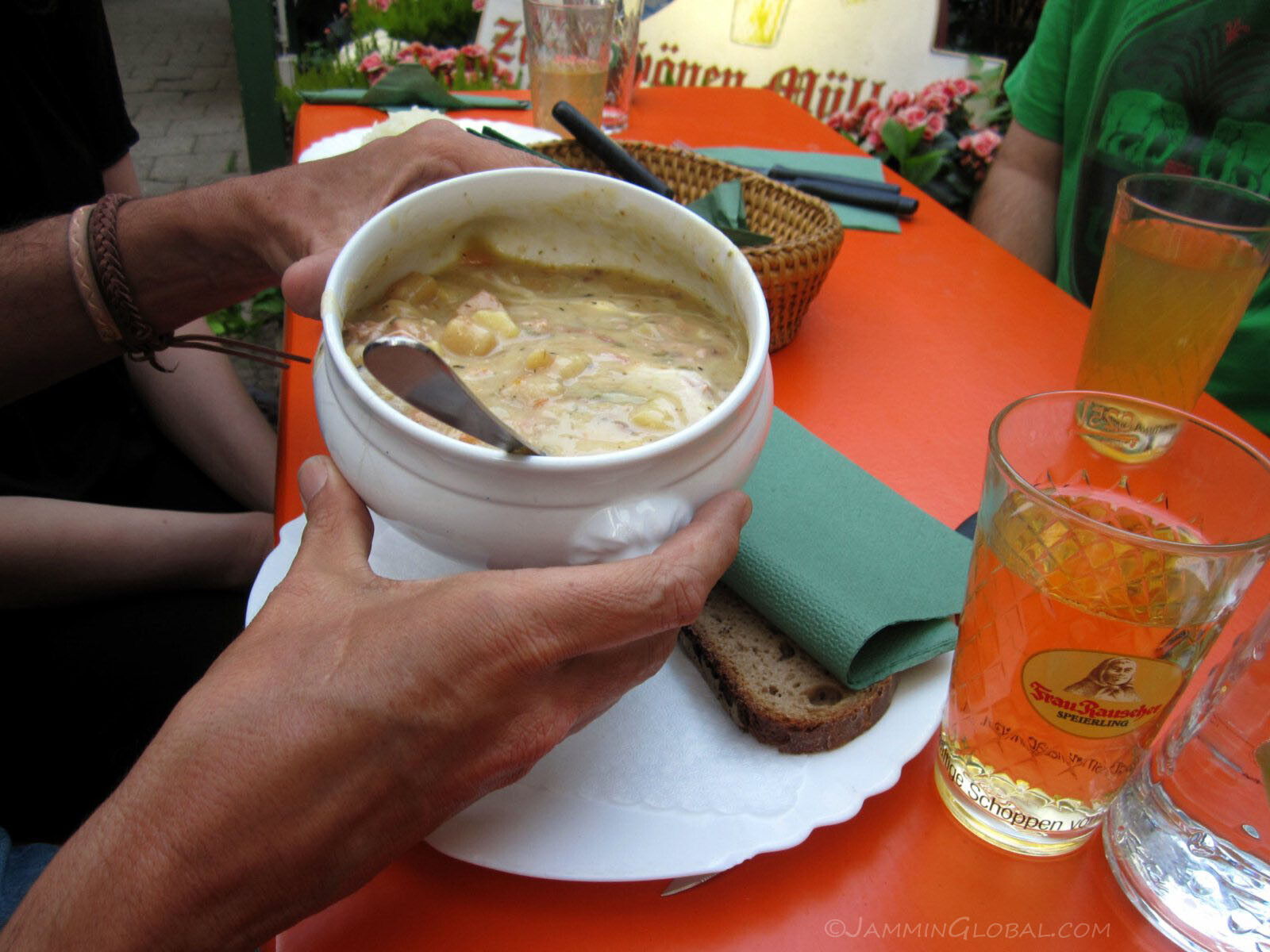
Germans love their potatoes and this is some tasty 'Kartoffelsuppe' (potato soup).
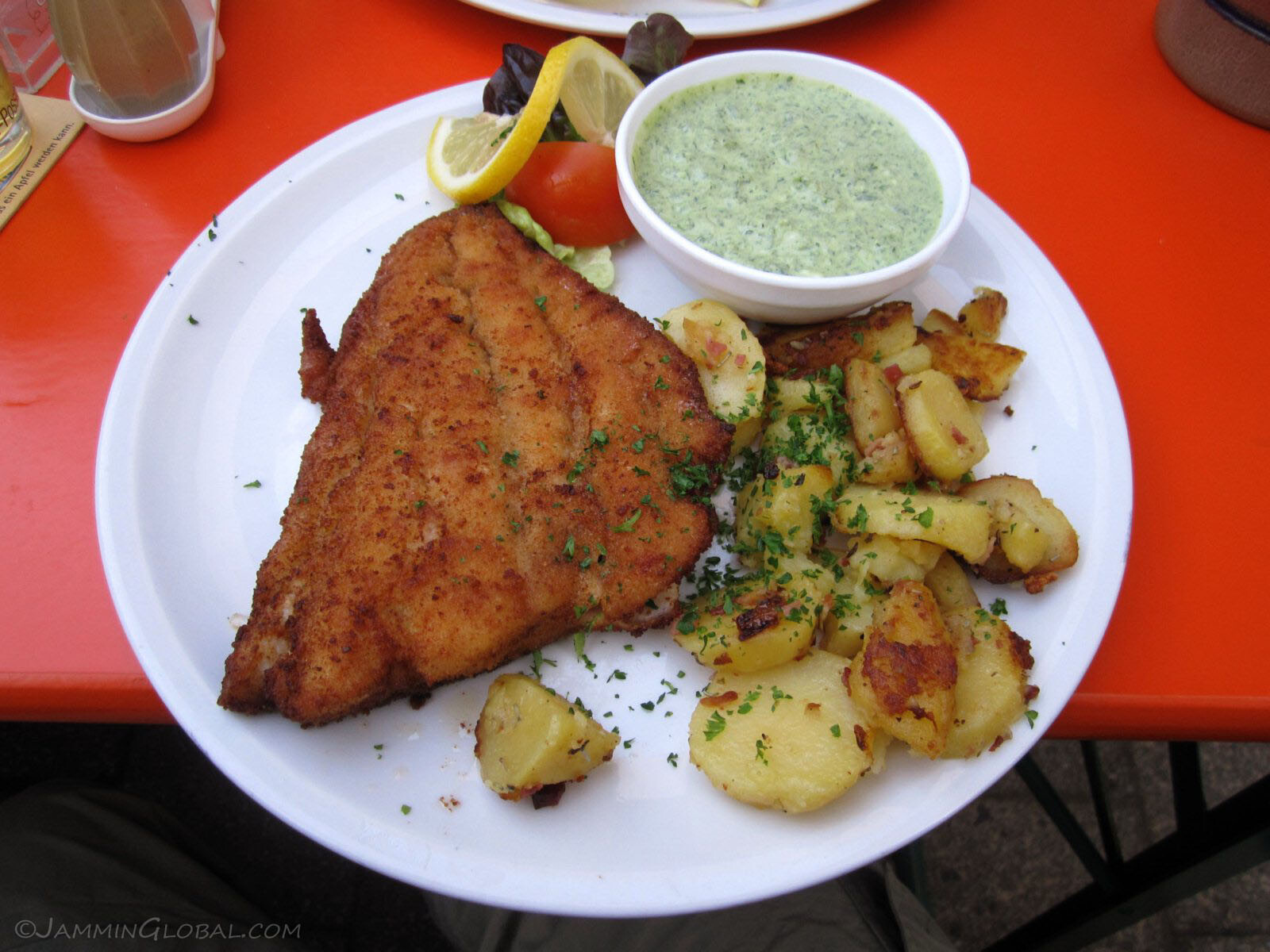
The specialty of the evening was the fried fish served with 'Grüne Soße,' which is Frankfurter for Green Sauce. It's made with seven herbs from a base of eggs and sour cream and is served cool to be refreshing. They even have a monument in the city to their Green Sauce, highlighting its importance to the region.
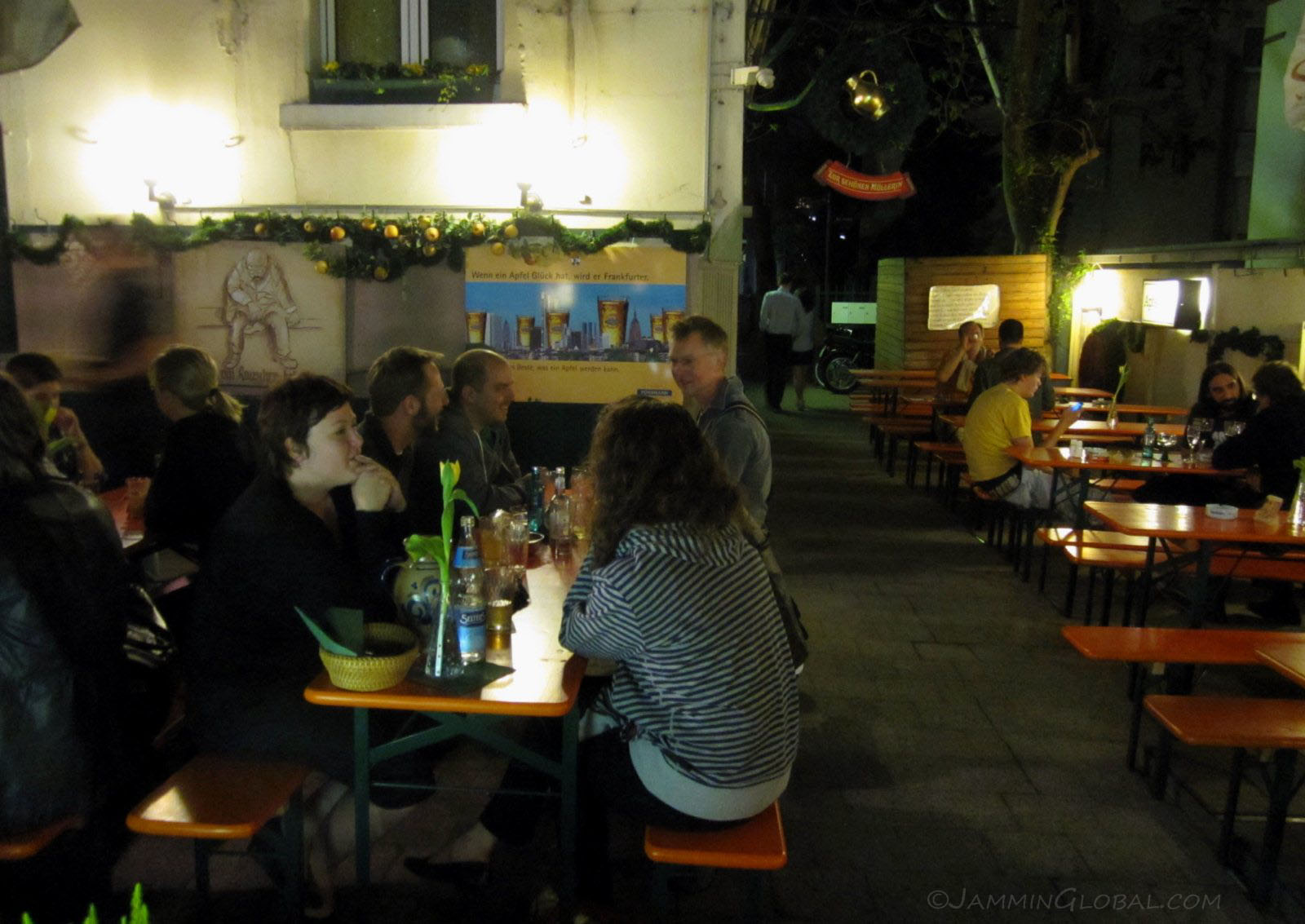
We spent the evening at Zur schönen Müllerin, a typical outdoor place to enjoy Apfelwein and beer. In Bavaria, they would call it a beer garden.
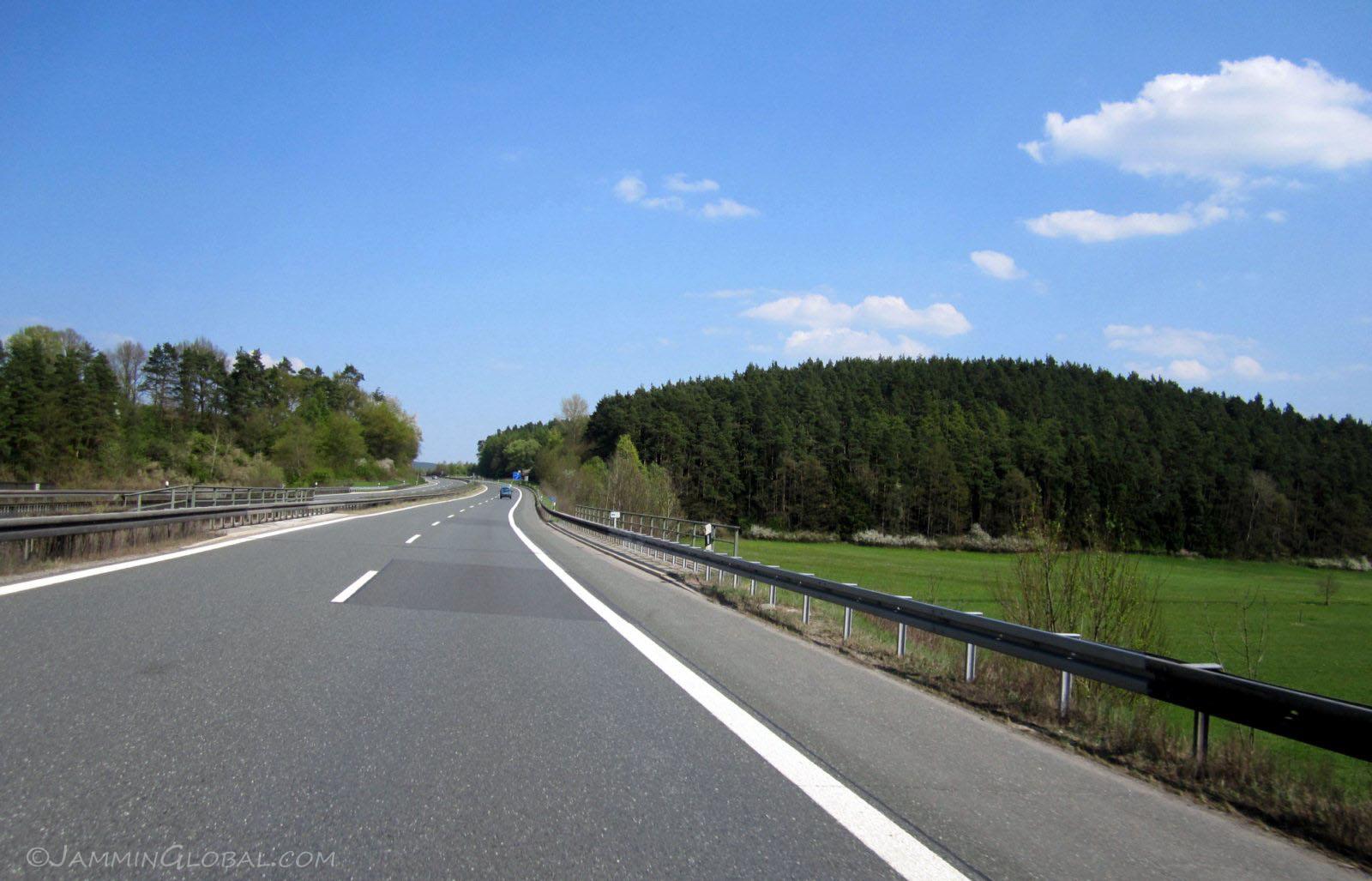
After a nice evening exchanging South American travel stories, I got back on the AutoBahn (the best highway experience in the world) and cut east across to the Czech Republic.
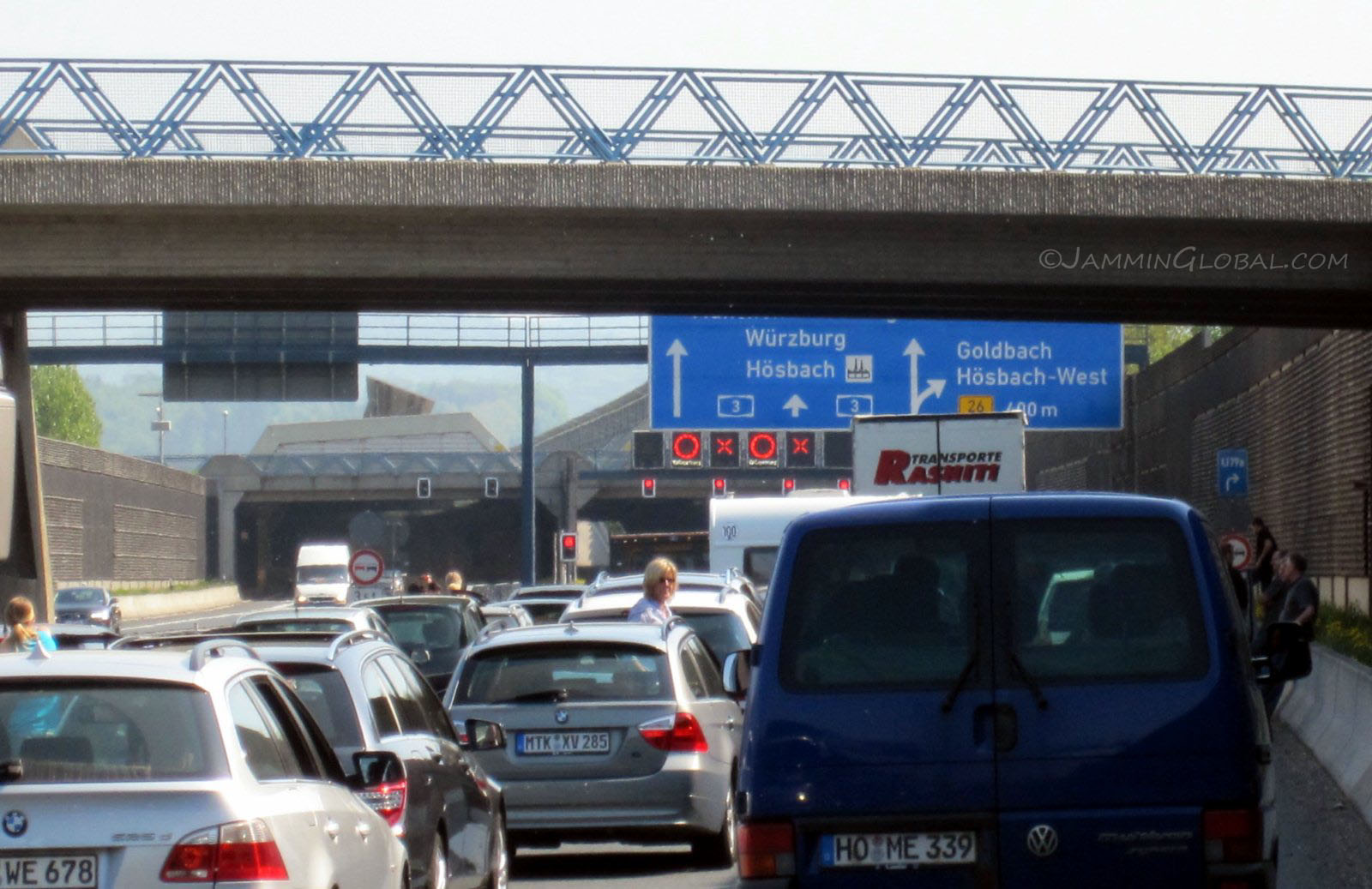
It was the Friday of Easter Weekend and traffic was heavy leaving the city. After a while, it started slowing down, backing up and then came to a halt. I was surprised when the supposedly well-behaved German drivers started heading down the shoulder to cut ahead. Ok, I followed, but that too soon came to a halt. It looks like there was some construction work going on in the tunnel or could've been an accident. Note the number of BMW station wagons.
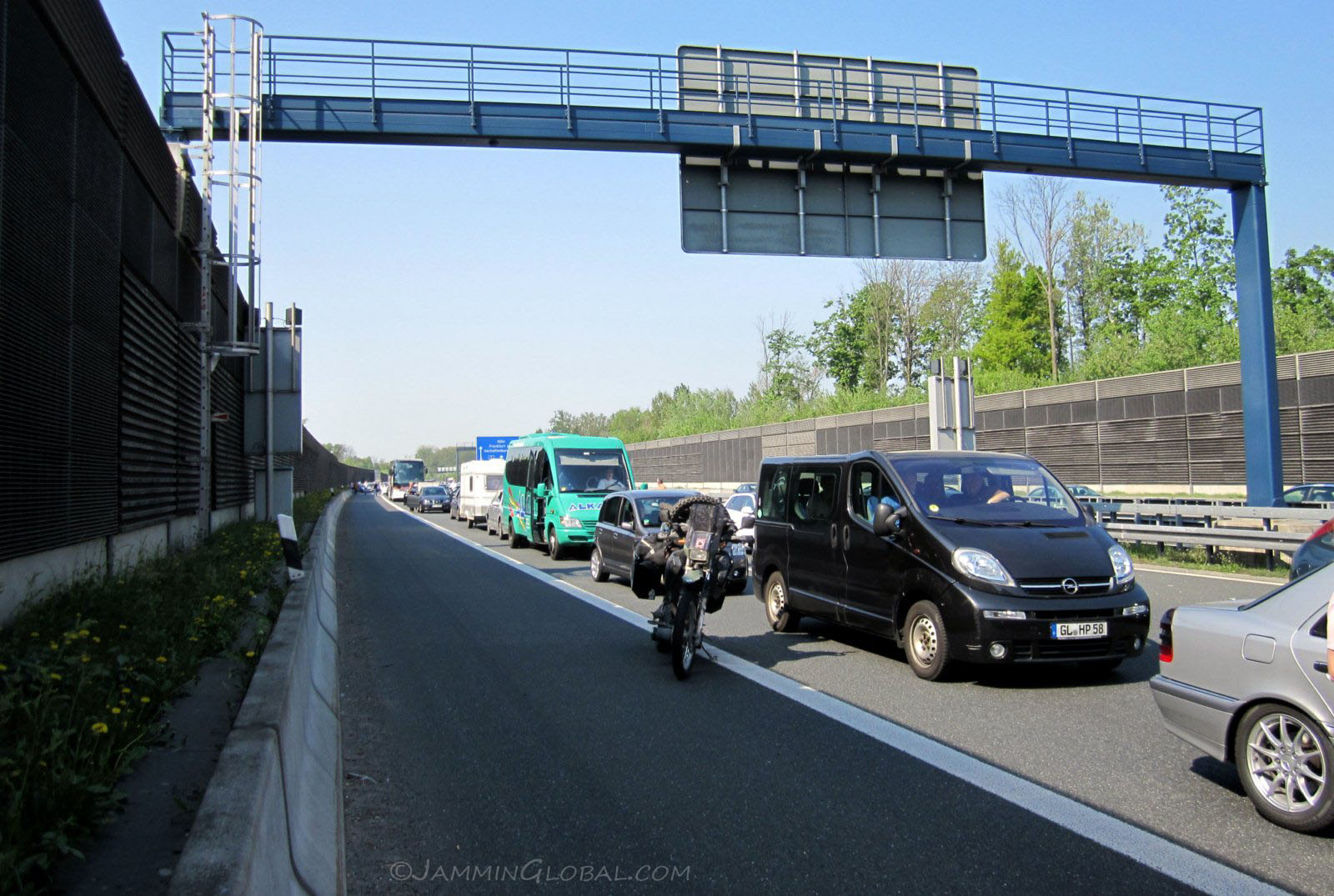
After a few minutes of waiting, the picnics on the bonnet started popping up. Everyone was stocked up on food and snacks and the spreads came out on the hood and from the trunk. I saw an advertisement on TV once where the drivers on a jammed highway fired up the barbeque grill. I didn't think it was true, that too in Germany. It was amusing to see picnics taking place from the trunk of Mercedes cars on the AutoBahn.
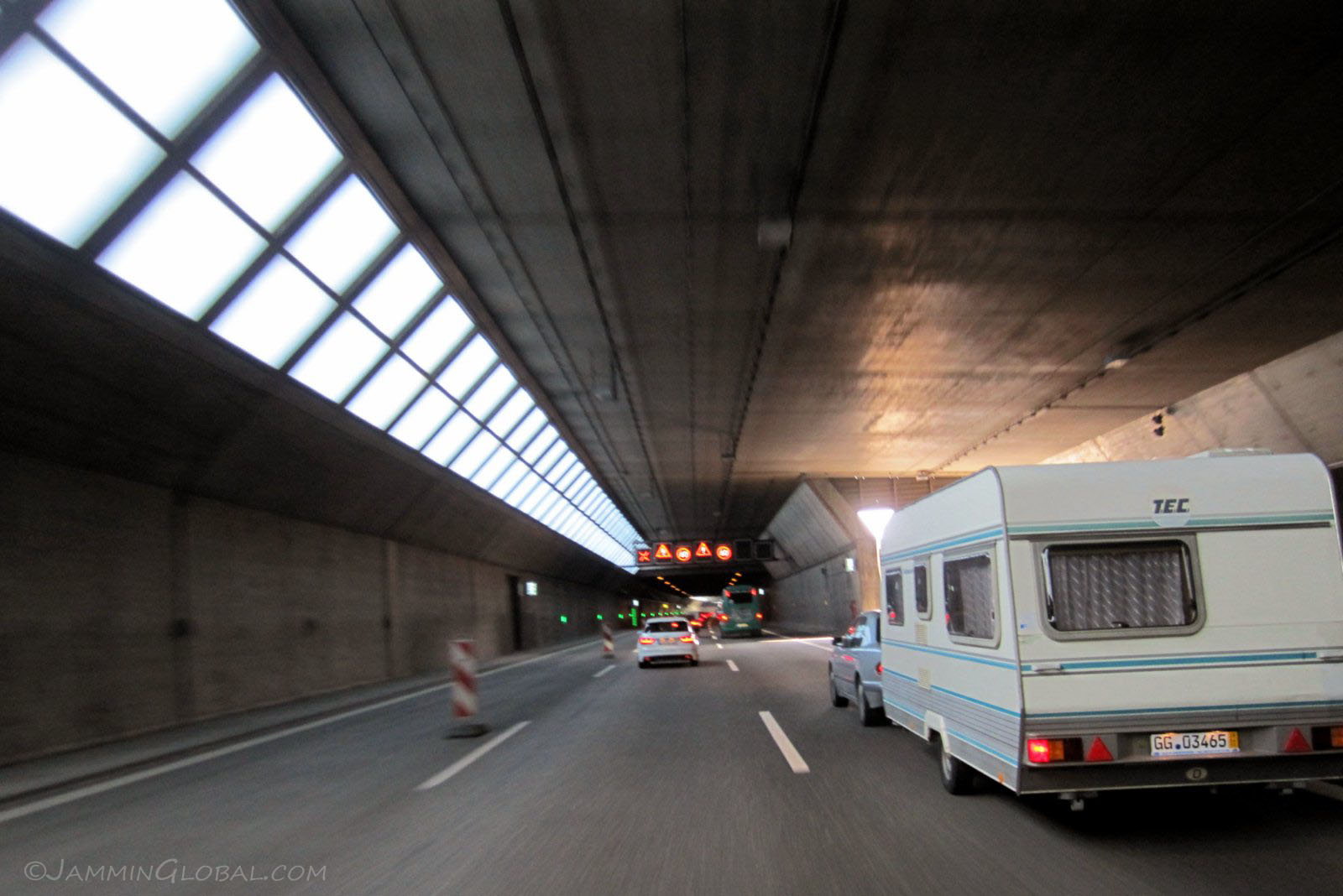
We got moving again and I hoped there wouldn't be too many camper vans to overtake once I got on the secondary roads.
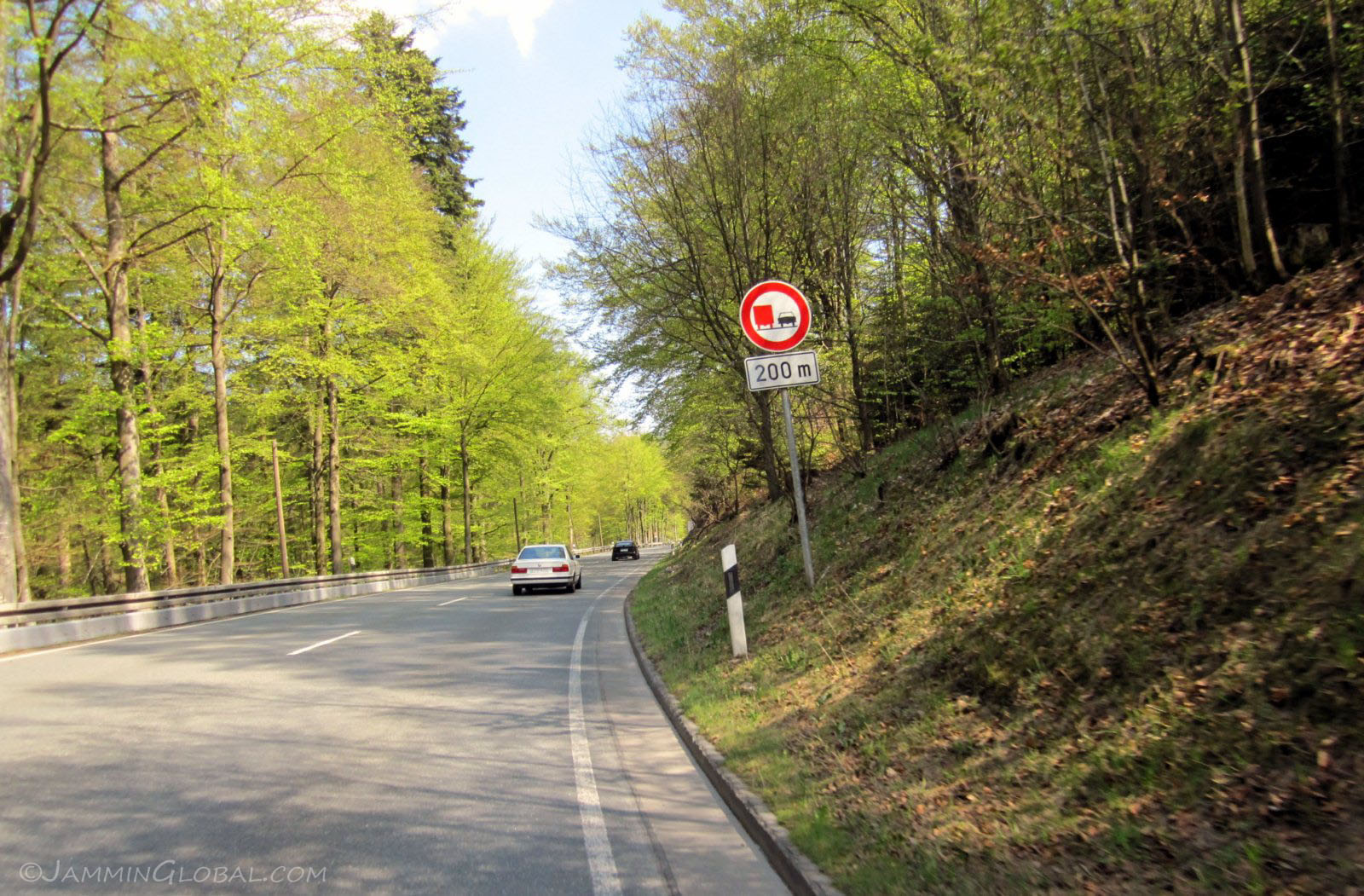
Getting off the AutoBahn and cutting across eastern Germany. The riding was sublime as the route climbed up and down hills.
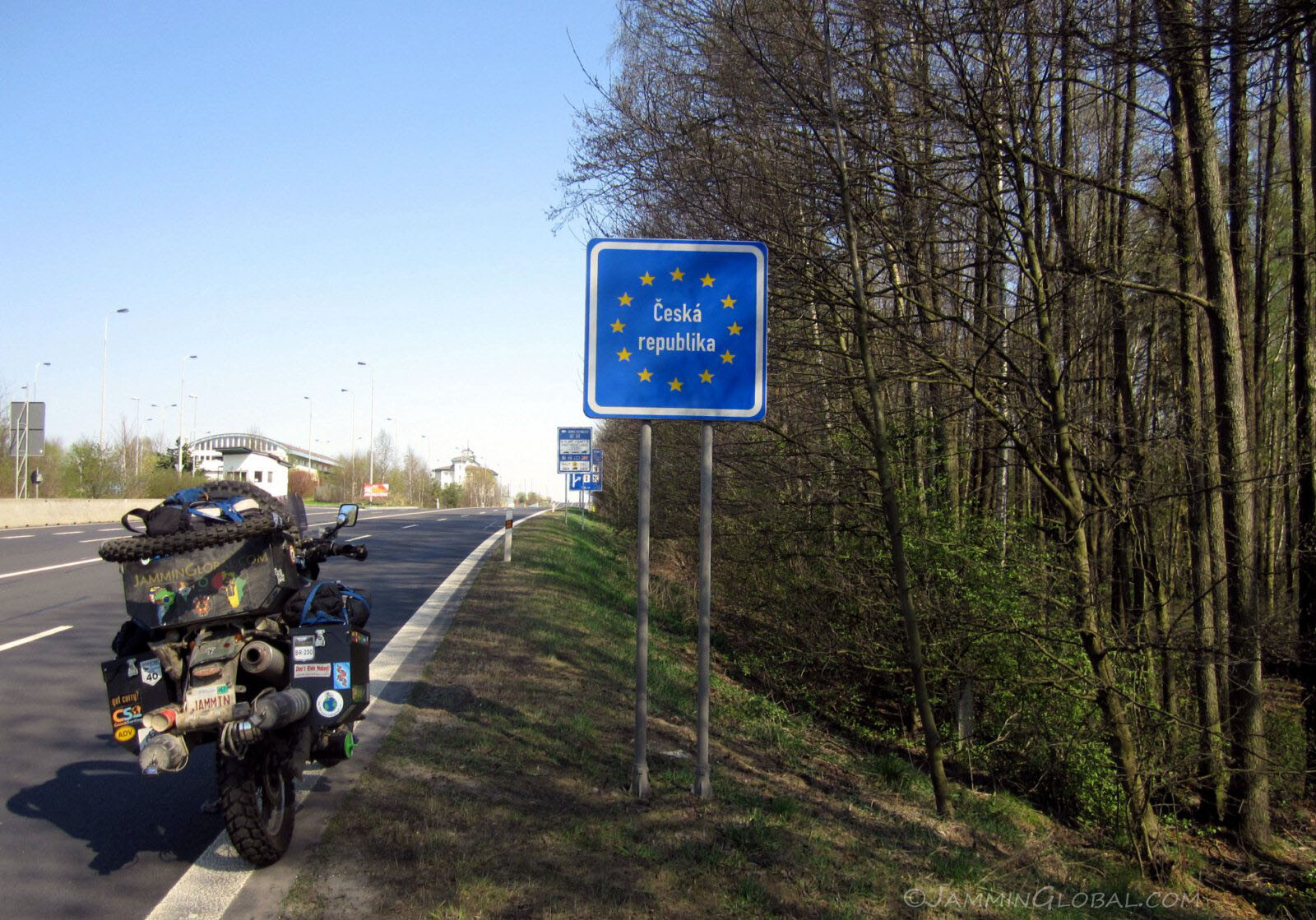
Entering the Czech Republic and going behind the old Iron Curtain, which fell in 1989 along with communism in Eastern Europe. Now a part of the European Union and the Schengen area with its open borders, one hardly realizes entering a new sovereign state. I had to turn around as I missed this little sign board hidden in the shade.
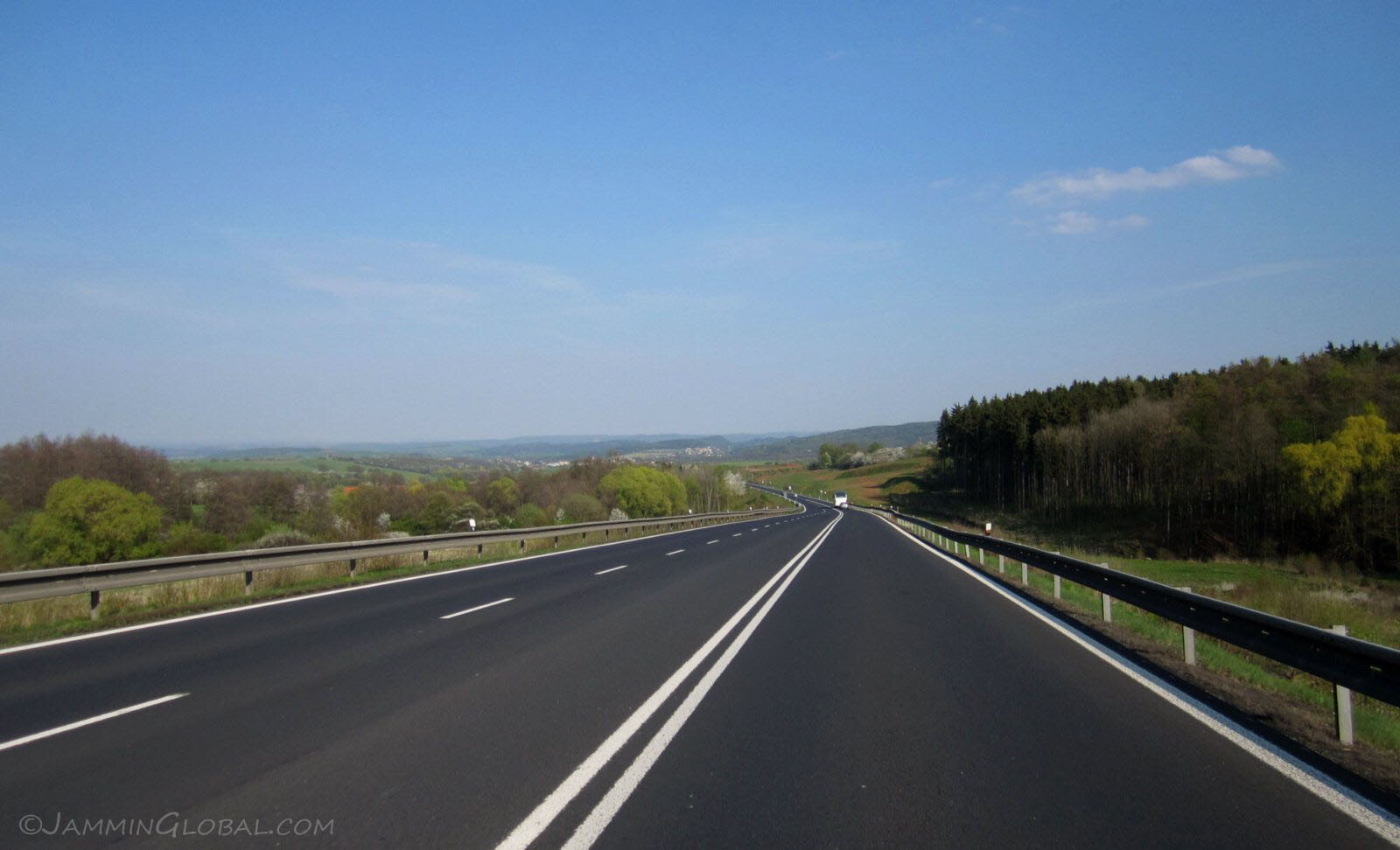
The roads were excellent and the Czech Republic was the first of the former Eastern Bloc countries to gain 'developed country' status according to the World Bank. It embraced privatization after communism and is considered to be very safe and highly democratic.
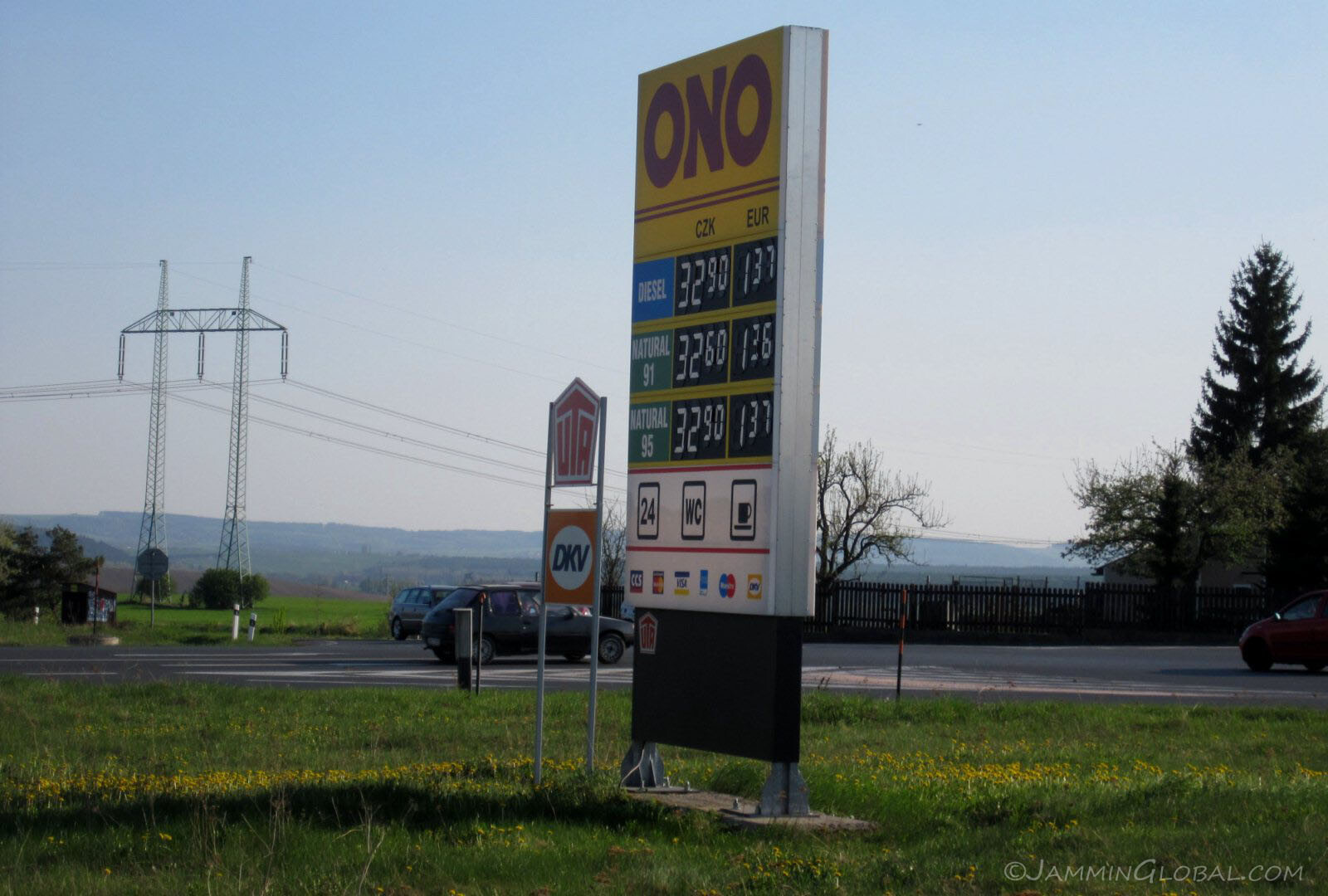
I tried to run my gas tank near empty of expensive French and German petrol so that I could fill up with cheaper Czech fuel. It's €1.26/litre here compared to around €1.50/L (US\$8/gal) in Germany.
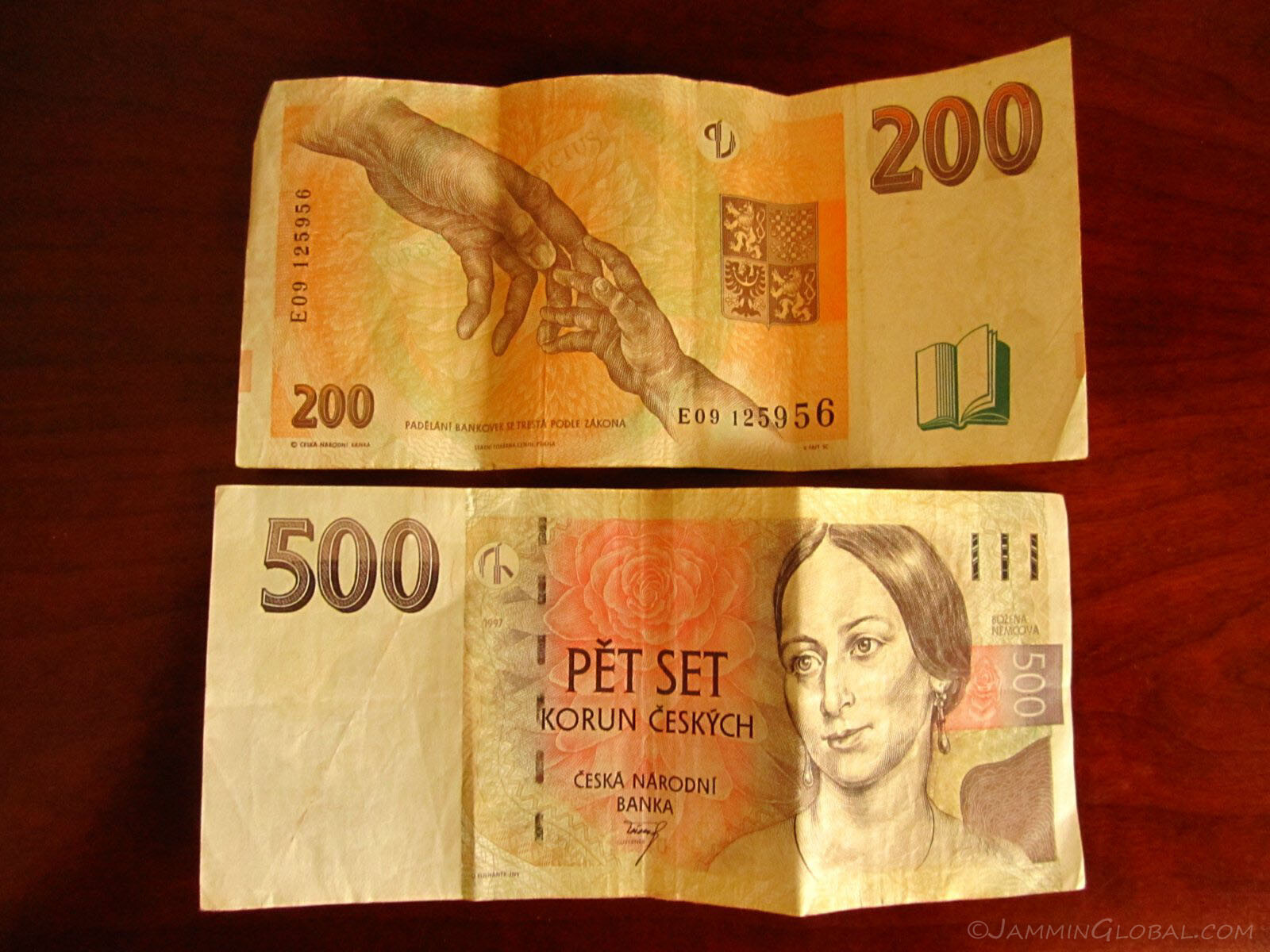
I was in the European Union, even in the Schengen Zone, and still the currency changed as not all members of the EU use the Euro as their national currency. The Czech Koruna (crown) has been the currency of the Czech Republic since it split in 1993 from Czechoslovakia. It's obliged under EU membership to adopt the Euro but it's not popular with the locals, so that's been deferred. Notably, Sweden and the UK are holding out on joining the Euro. $1 = Kc17 and that Kc500 note = $29.
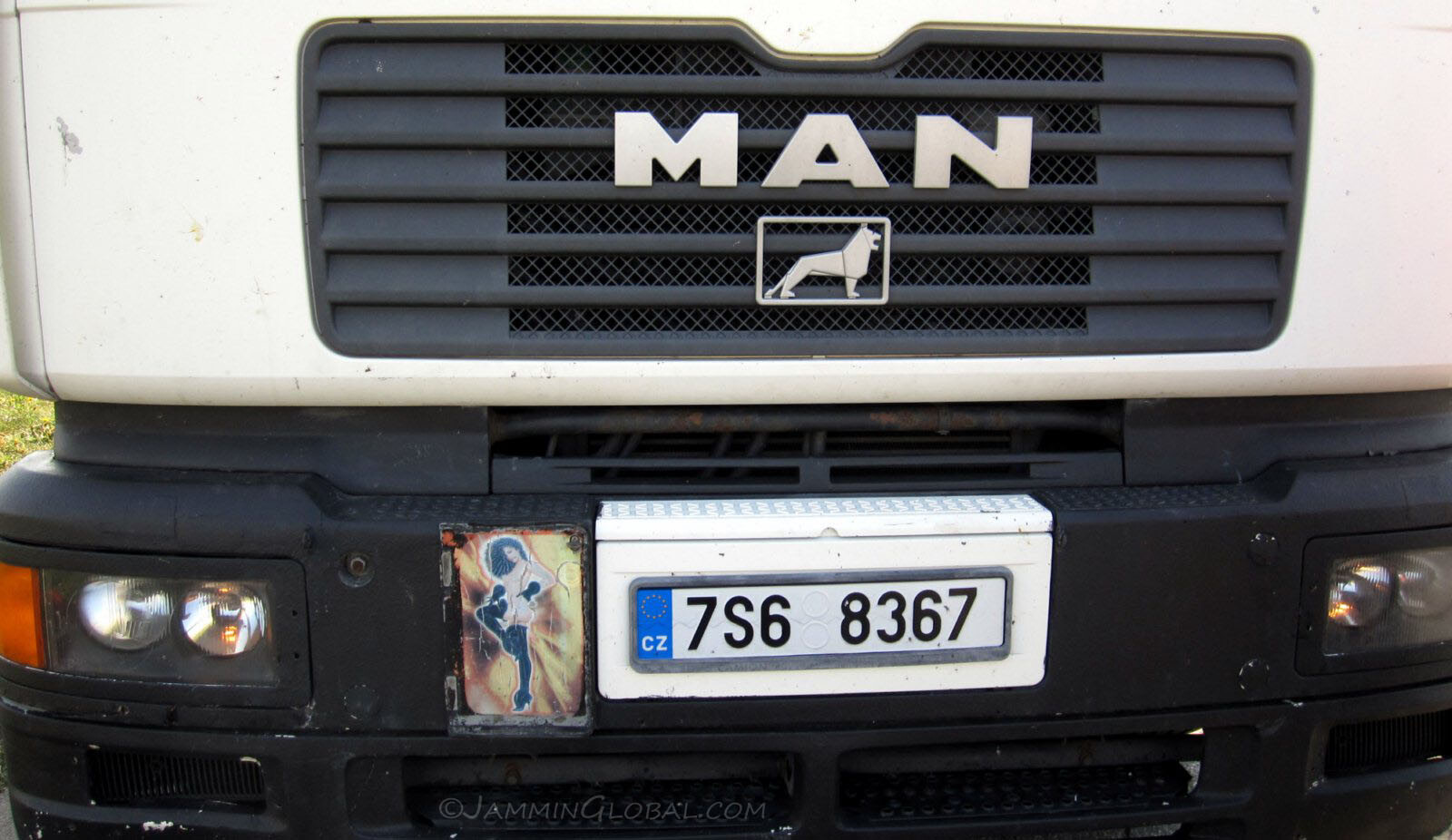
A 'manly' truck at the petrol station with his favorite lady next to his European license plate.
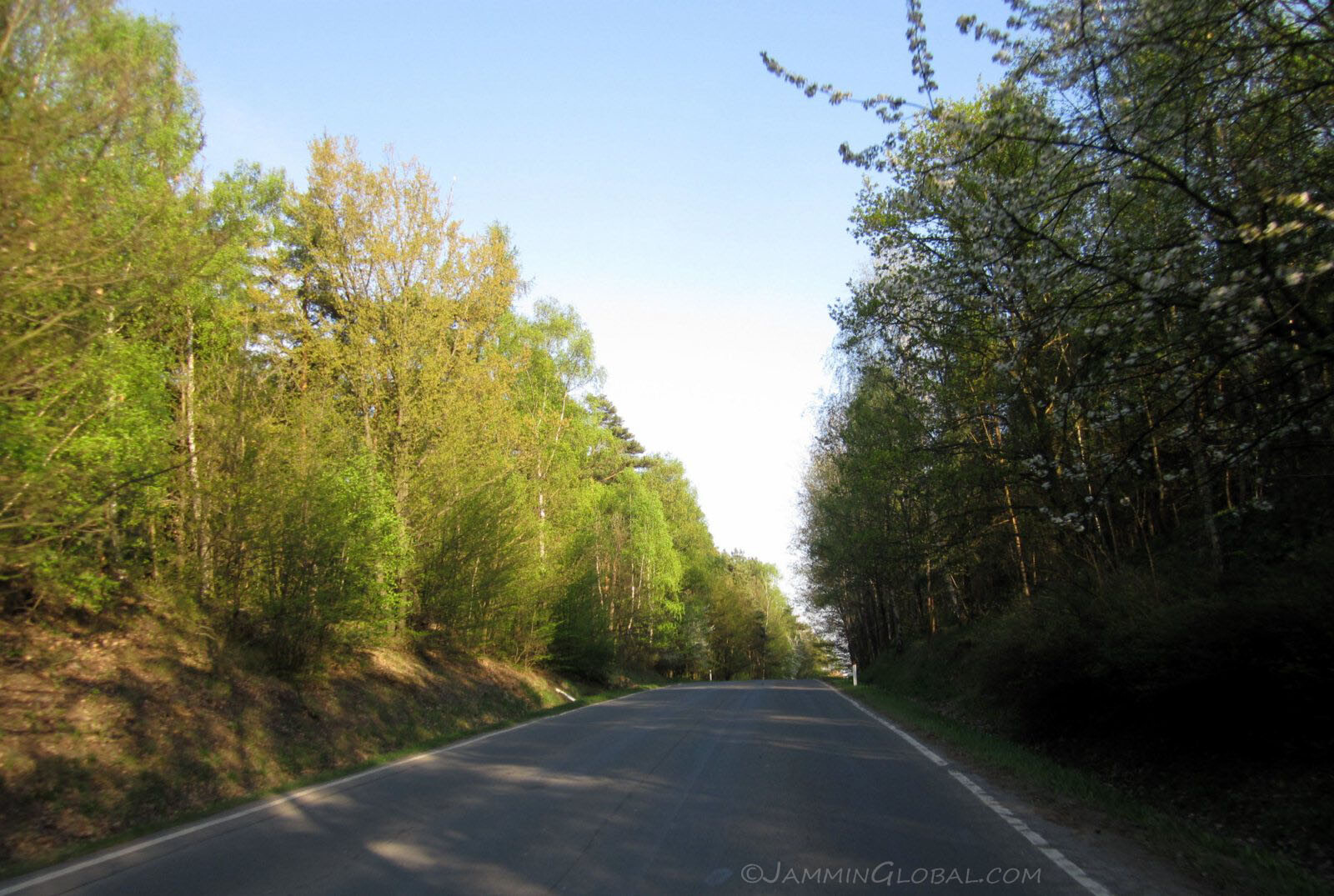
Taking some secondary roads towards the capital of Prague. It flowed over the hills and through small villages.
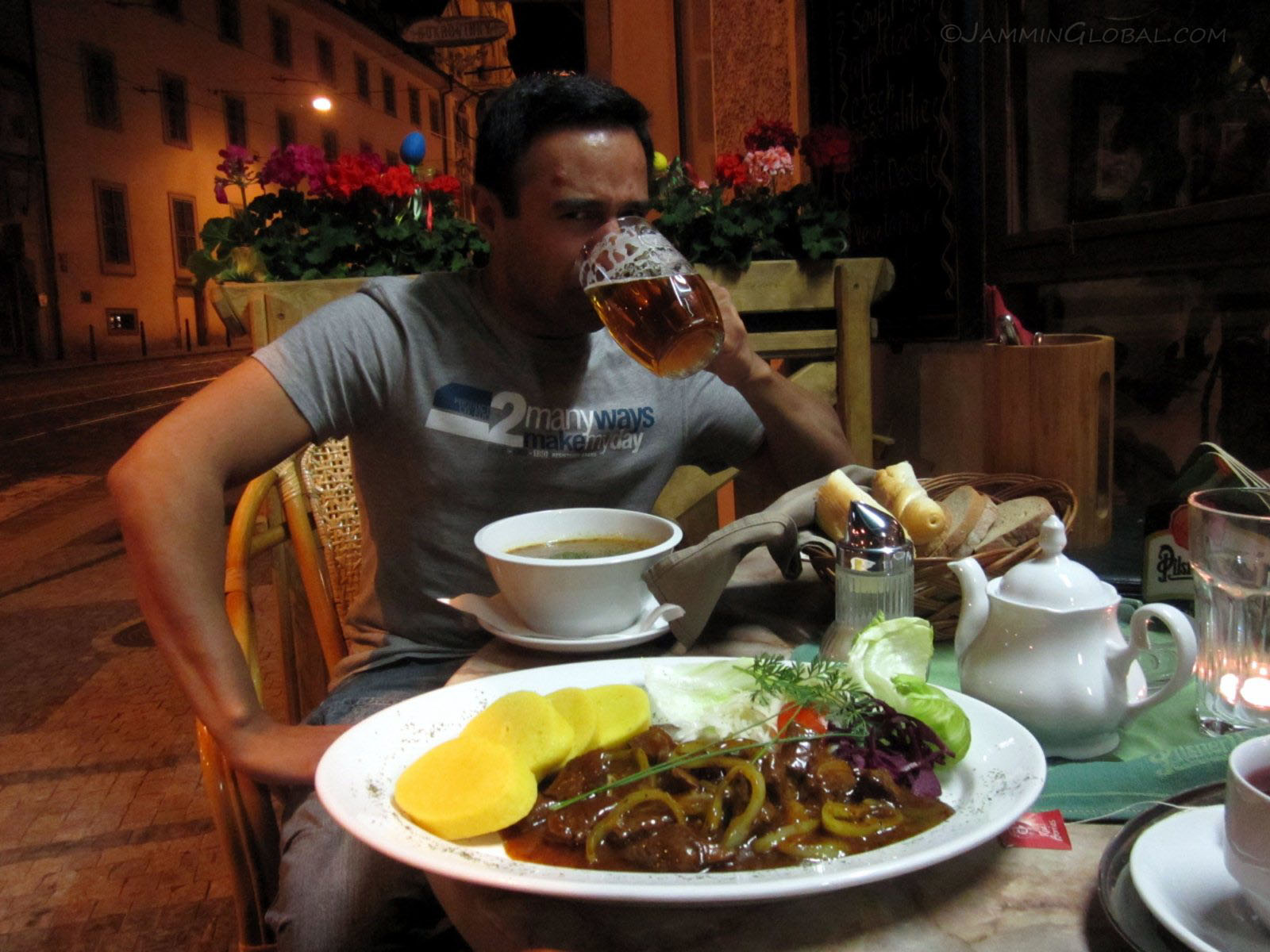
Meeting my good childhood friend, Harjoth, for the weekend in Prague. First thing was some hearty goulash for dinner, a stew of meat and vegetables. Harjoth and I went to school together and have known each other since the 5th grade (10 years old) and were roommates for four years through high school. After studying in the US for a while, he got a graduate finance degree from Belgium and is currently working in the banking sector in Frankfurt. I hadn't see him for four years, so there was lots to catch up on.
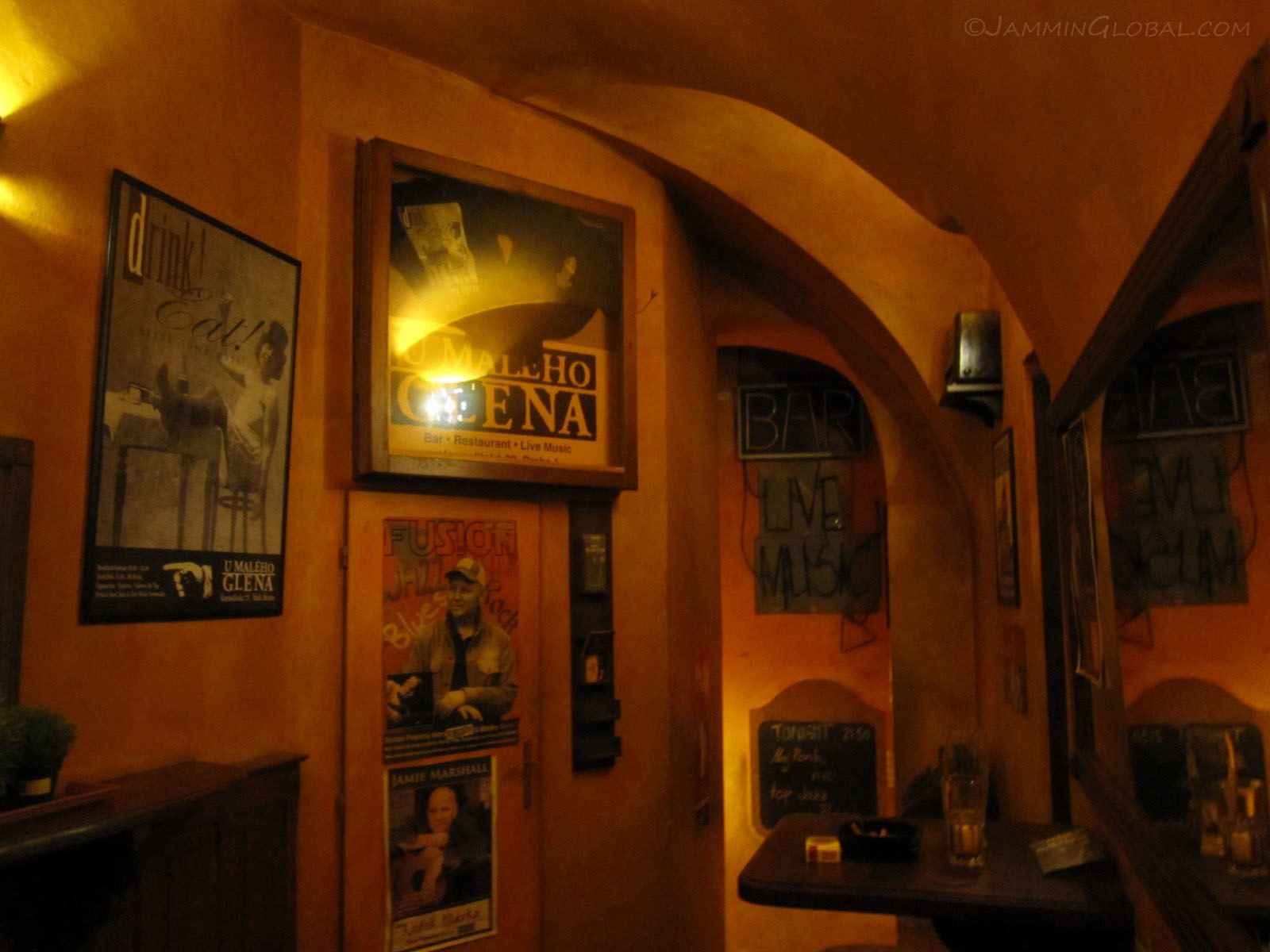
At a jazz bar near our hotel. Prague is known for its lively jazz scene and both of us appreciate it as I used to play the saxophone in school and Harjoth played the euphonium (similar to a tuba).
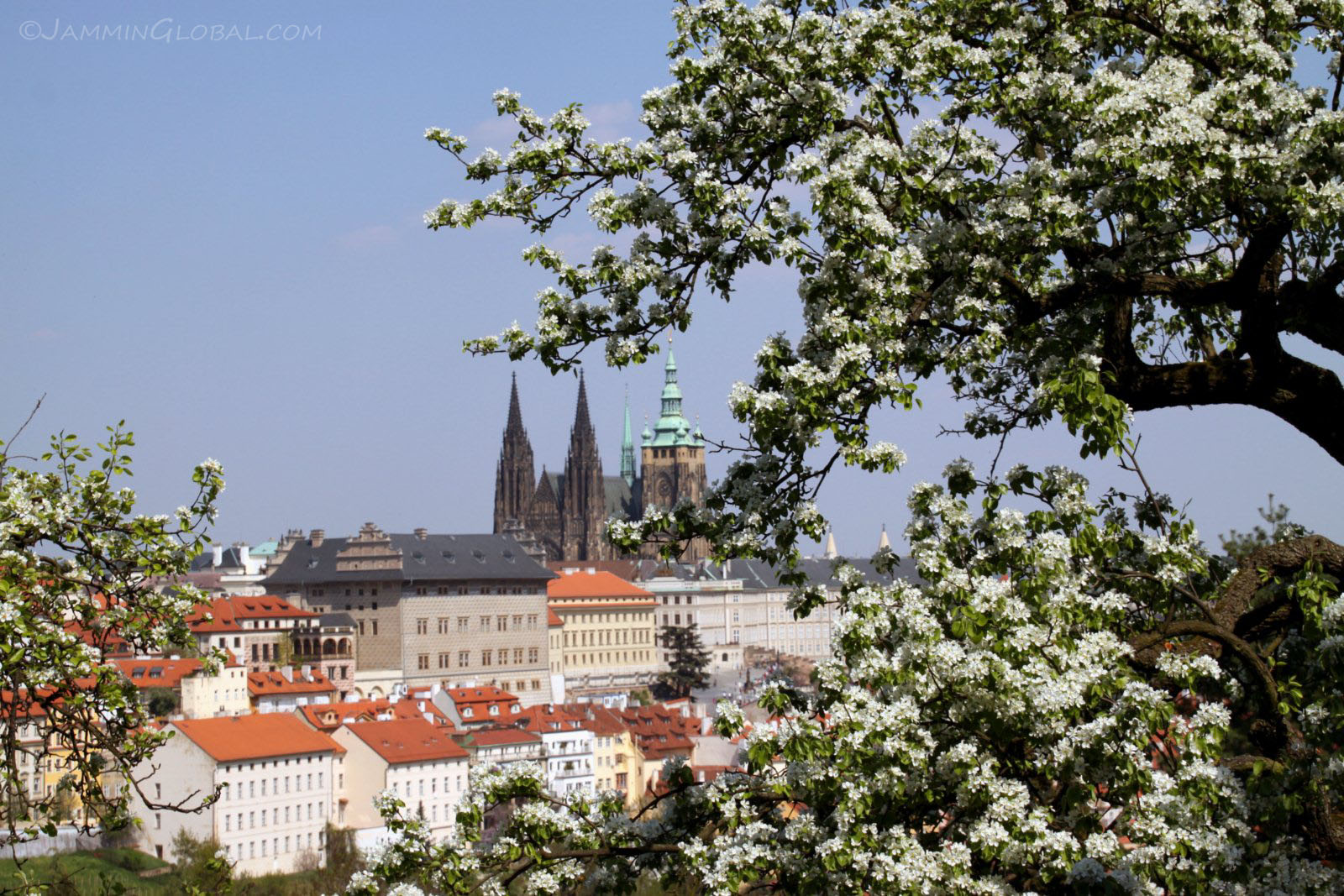
Heading to the Prague Castle the next morning.
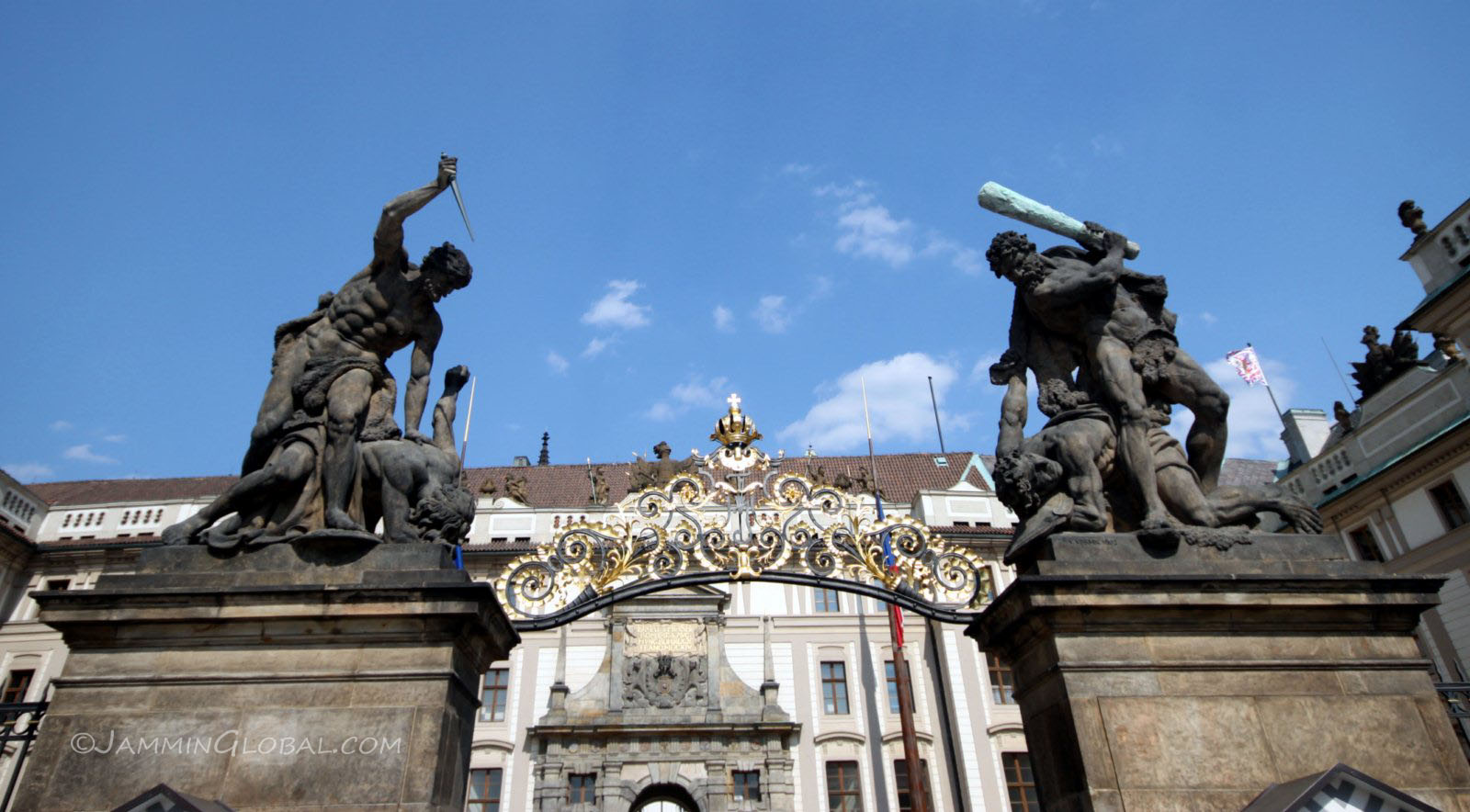
The not-so-welcoming entrance to Pražský Hrad (Prague Castle), with intruders either being stabbed or clubbed.
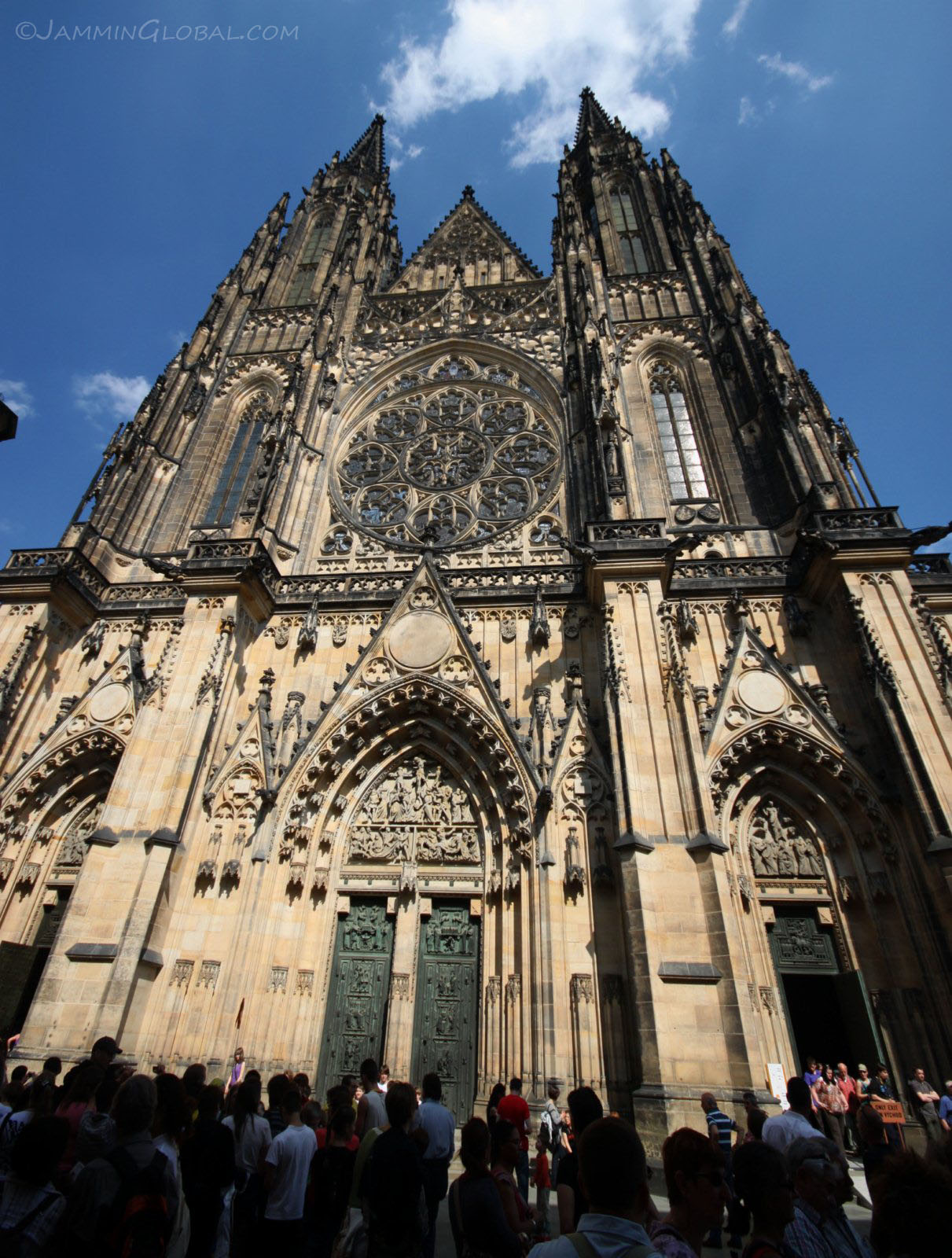
The grand facade of St. Vitus Cathedral, contained within the Prague Castle complex.
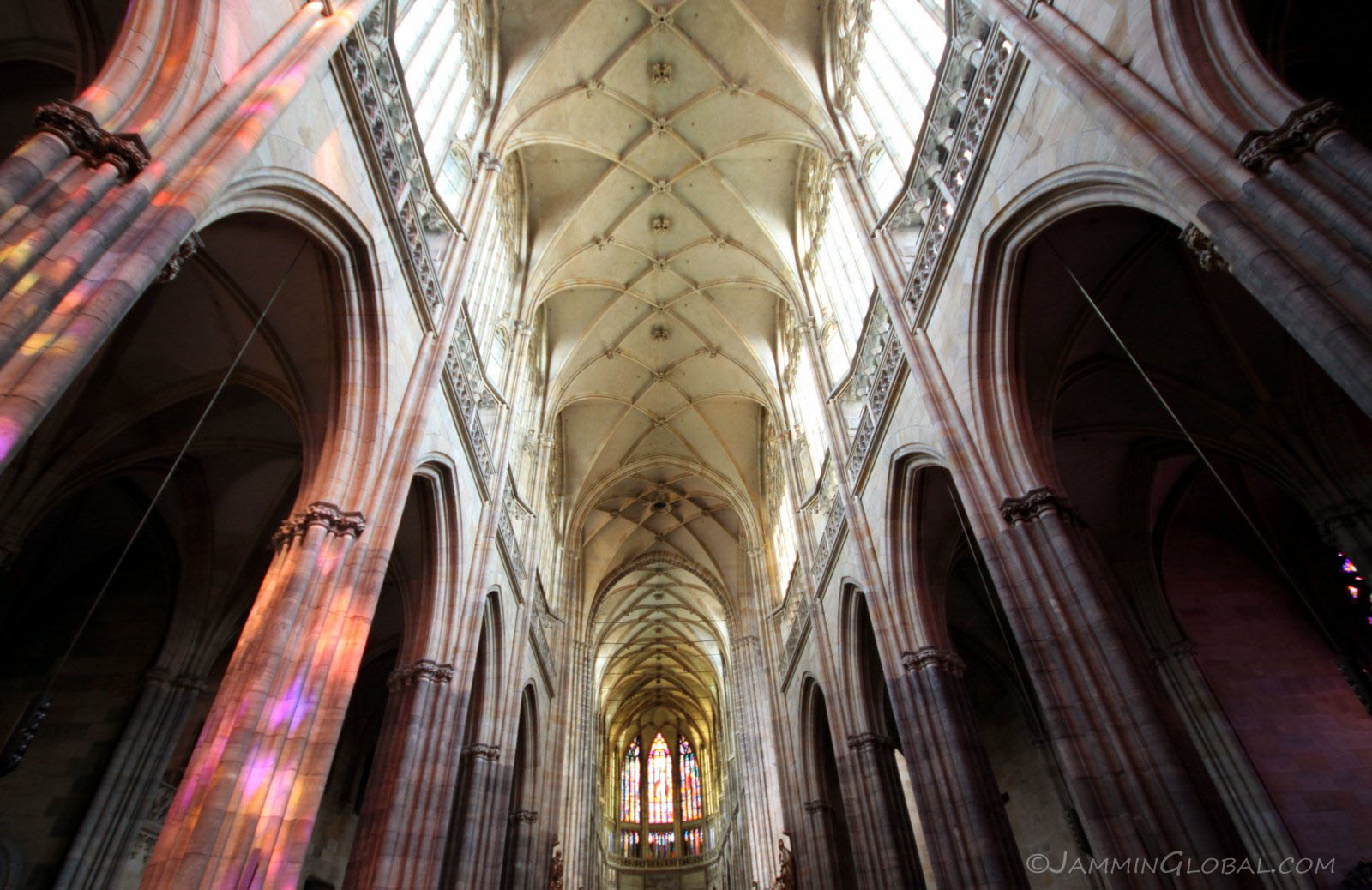
The bright sunlight shining through the stained glass windows inside the grand cathedral. It was commissioned in 1344 and took nearly six centuries before it was fully finished. The initial architect was French and he imported their extravagant Gothic style.
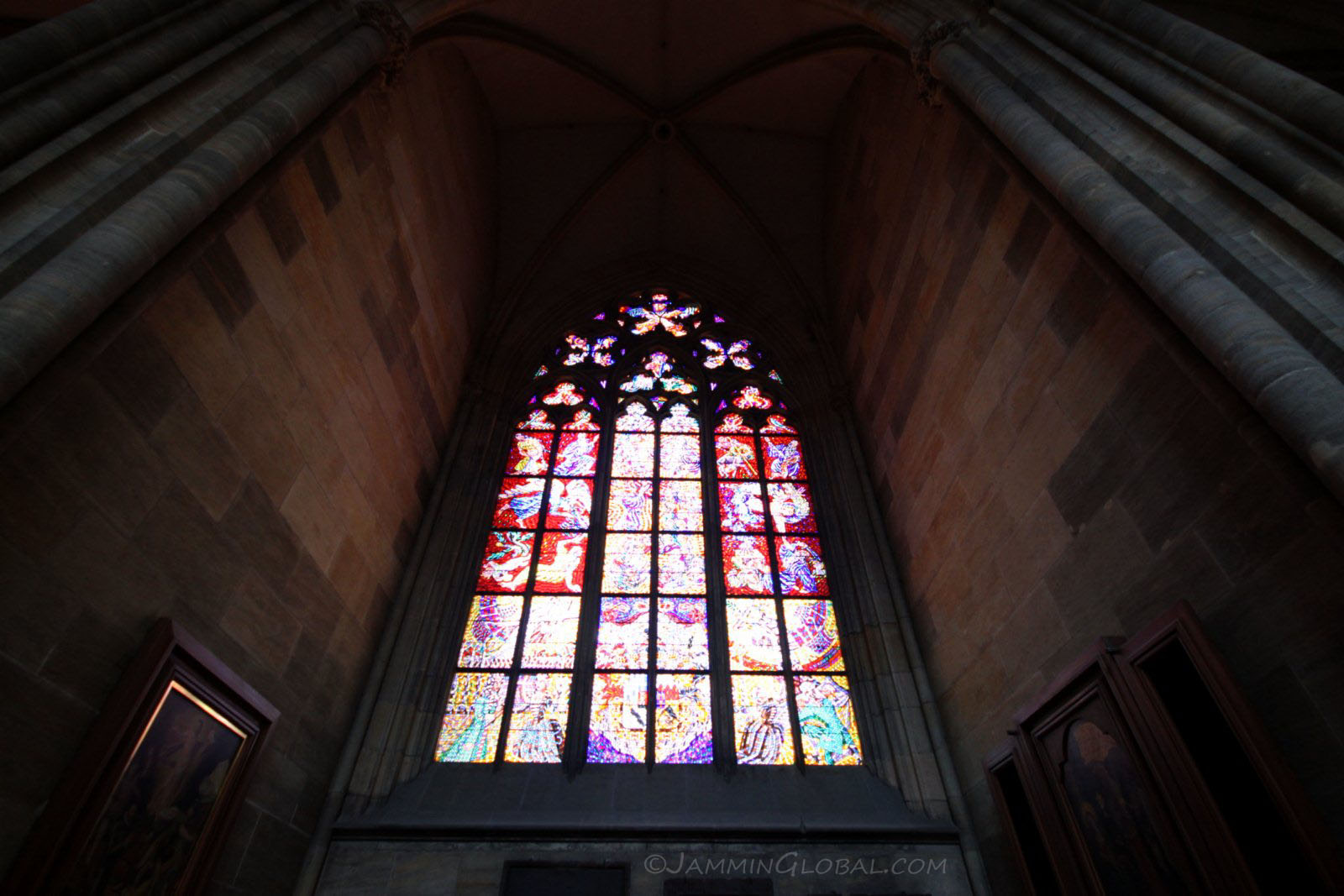
Intricate stained glass windows depicting various Christian stories.
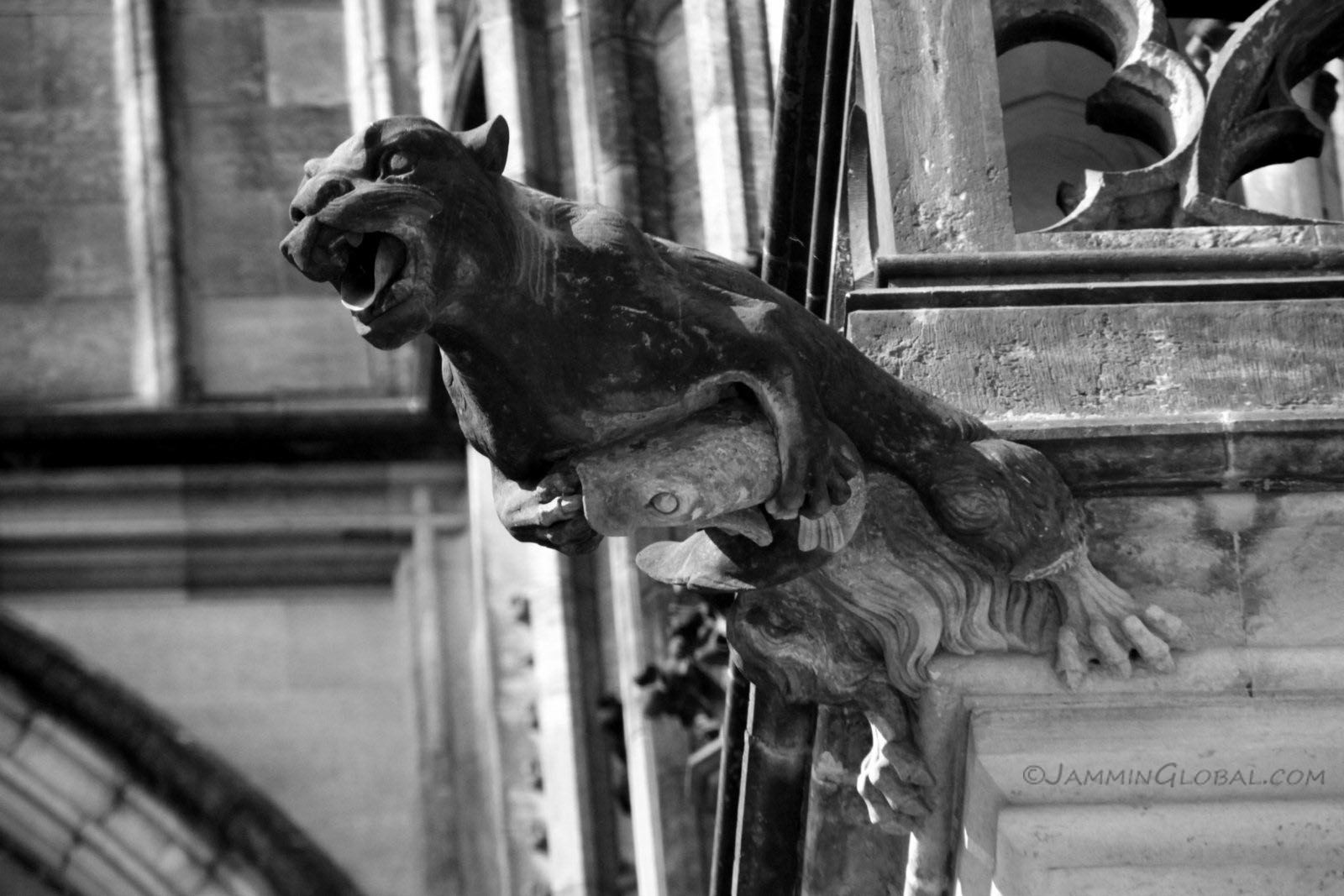
What would a Gothic cathedral be without its gargoyles? A wild cat with a fish in its grasp. While they look quite exciting, they actually have a very prosaic function, which is to divert rain water away from running down the building and eroding the mortar.
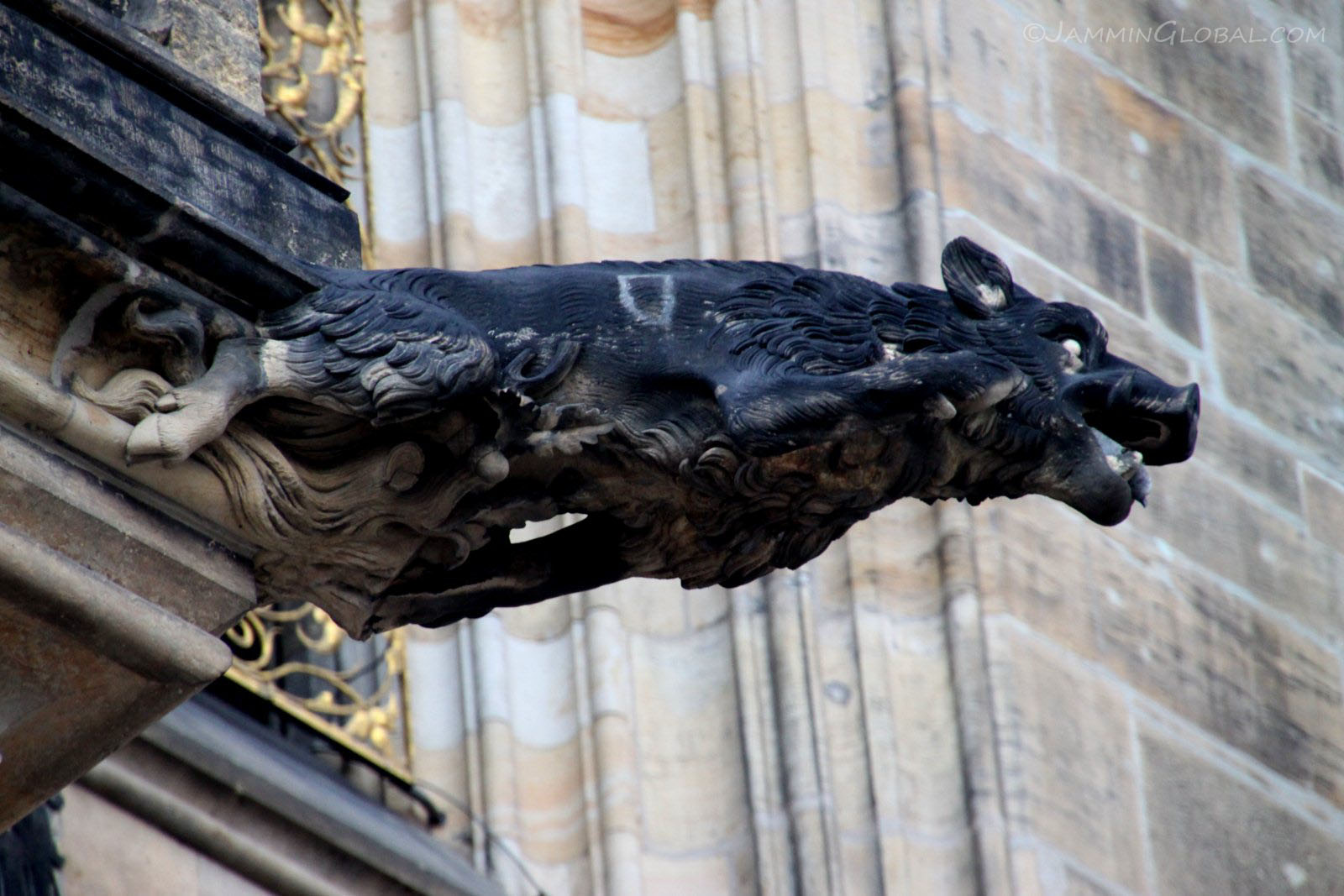
A werewolf leaping from a balcony. The gargoyles have a water channel cut in their back with the exits being their mouths and thus animals were usually chosen for these grotesque figures.
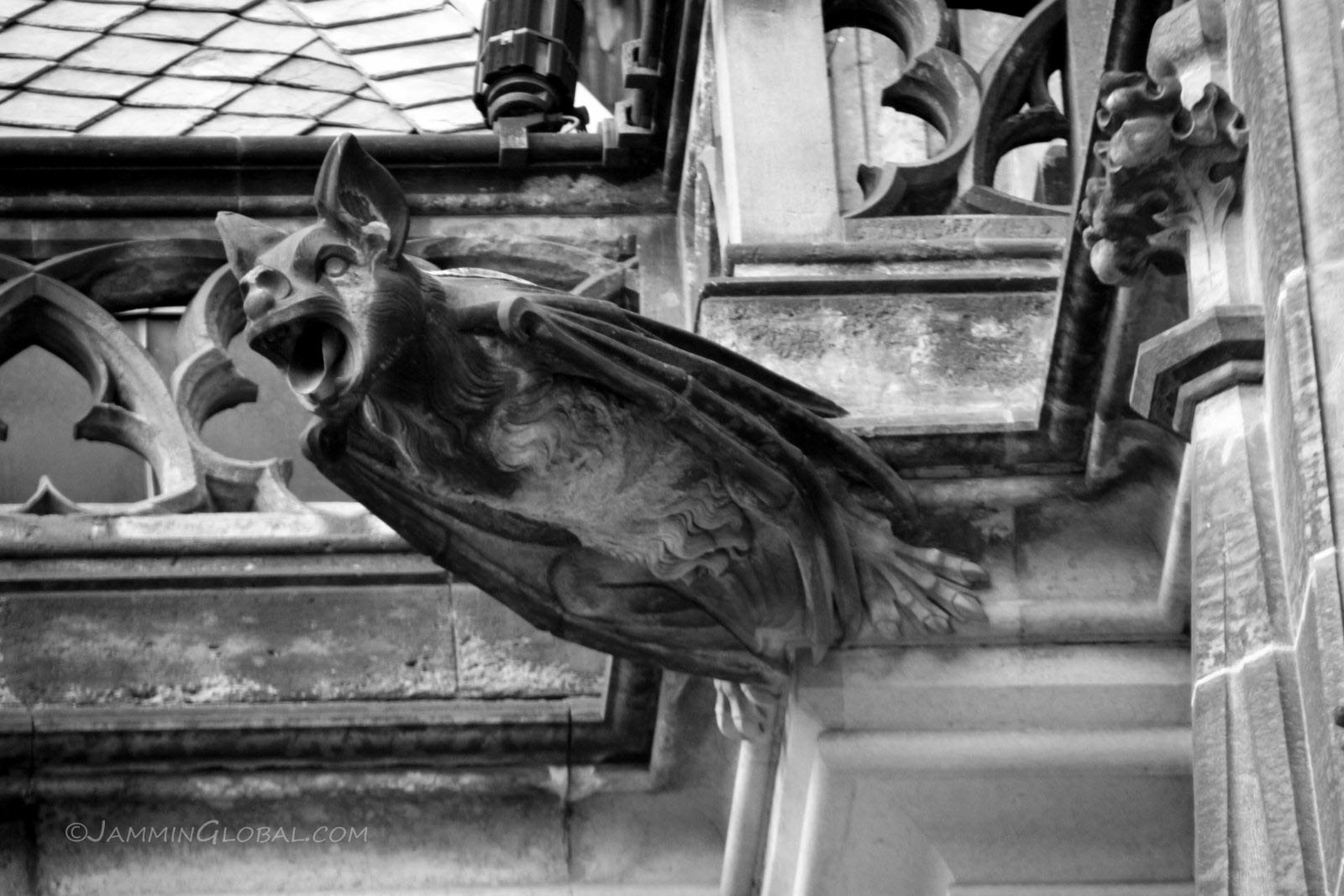
A bat with a wide open mouth for rain water.
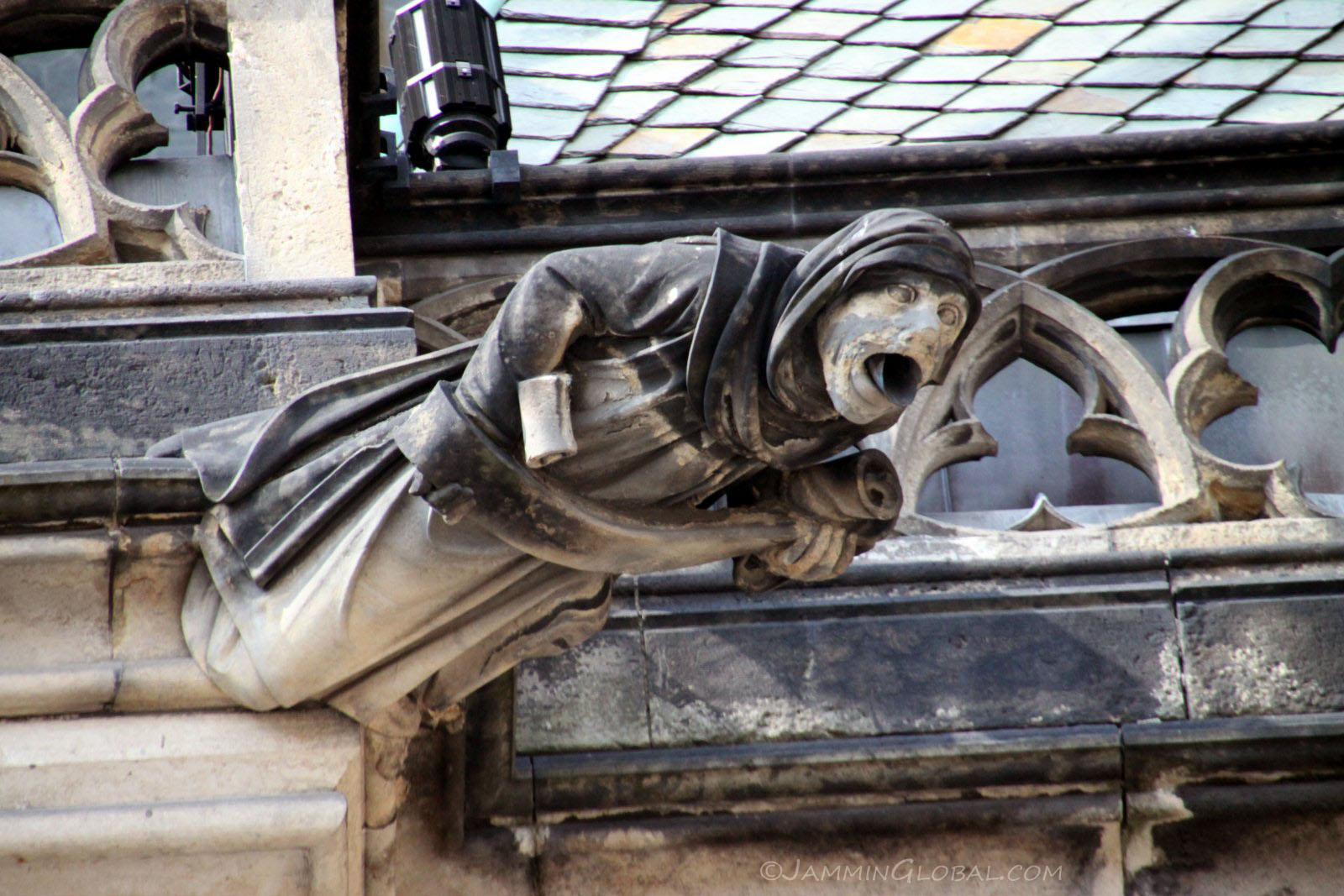
I guess ugly monks also qualify for gargoyles. Nowadays we just have boring old rain gutters.
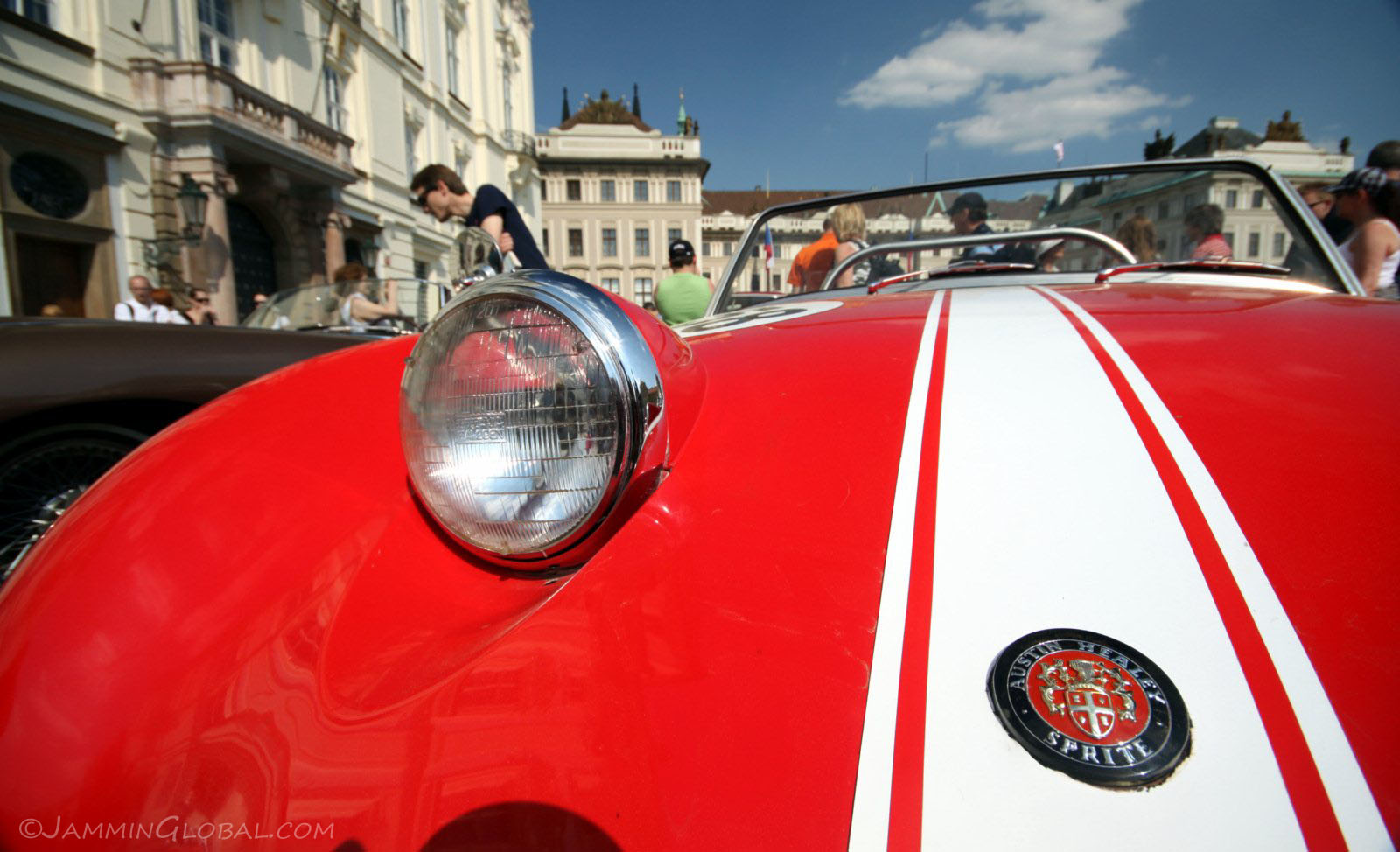
In the castle complex, there happened to be some classic cars on display. This is an Austin-Healey Sprite, first introduced in 1958.
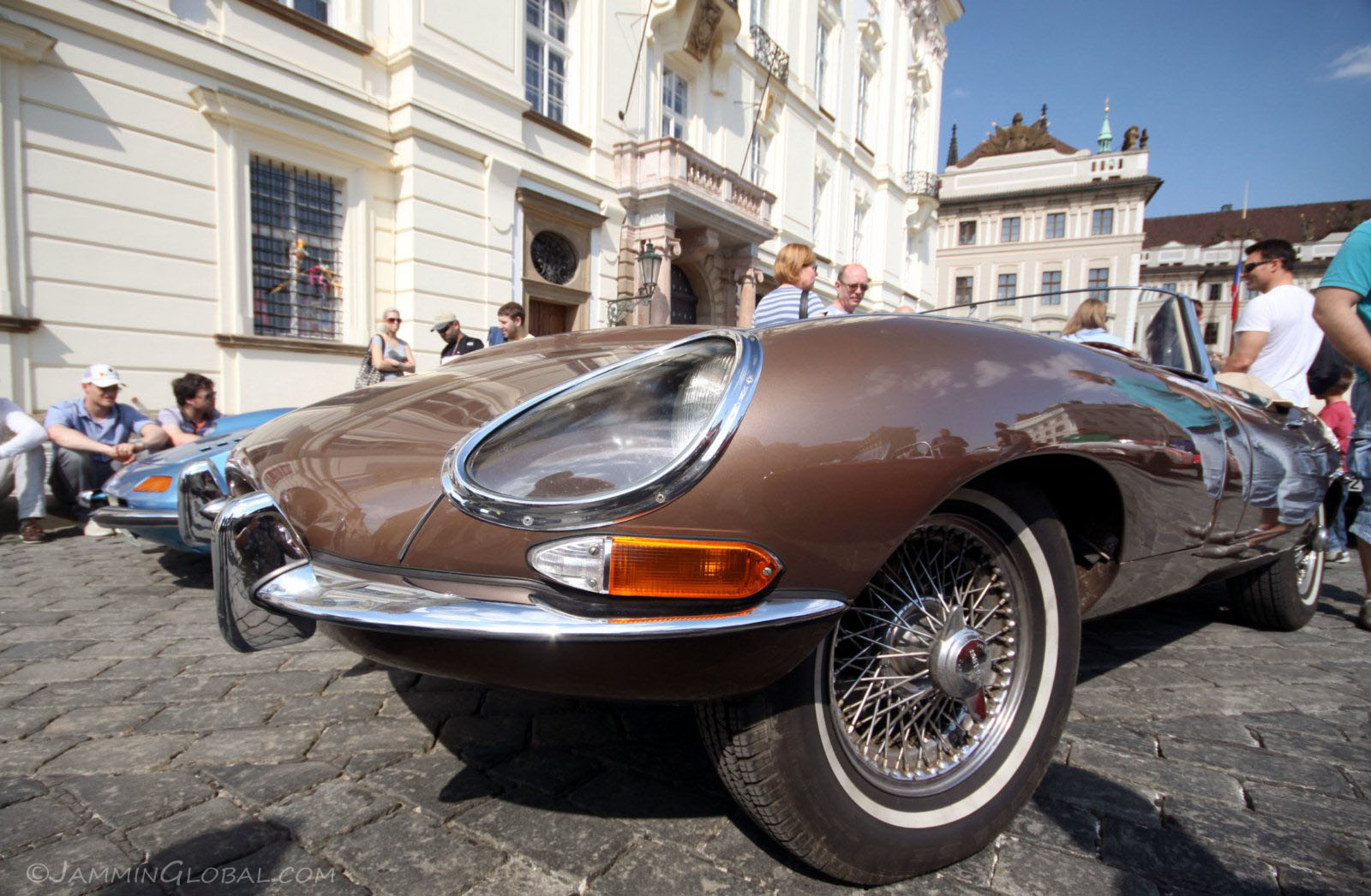
A beautiful example of a Jaguar E-Type, a British motoring icon of the 1960's, being used for Austin Powers' Shaguar.
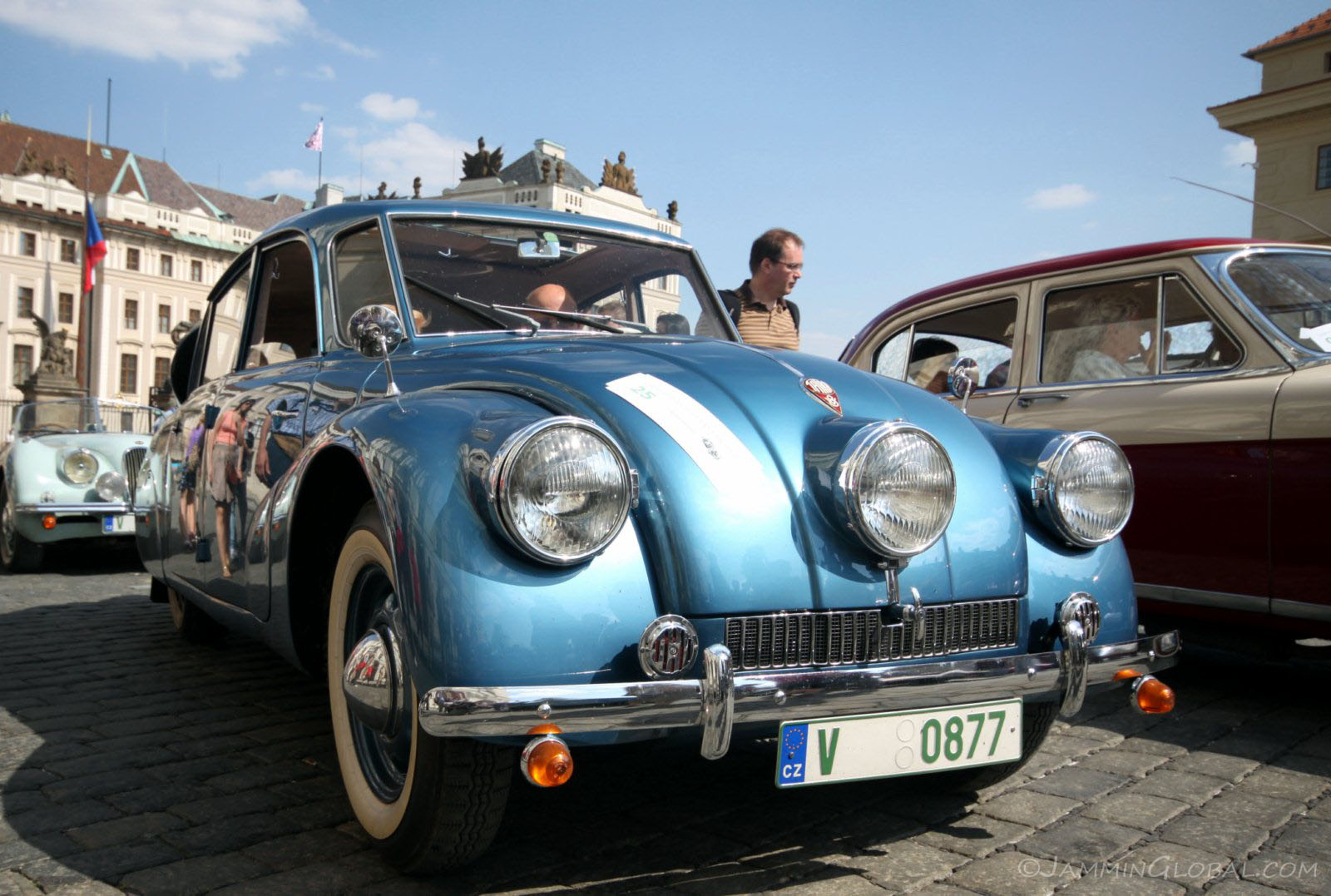
A classic Škoda with a three headlight front. Škoda is a car company from the Czech Republic with its roots going back to 1905. Along with Lada (from Russia), it was considered a laughing stock of the automobile industry during the Cold War years due to poor reliability and unexciting drivability. However, partnering with Volkswagen during the privatization phase of state companies after the collapse of communism had been a much needed lifeline for the brand. And since 2000, when it was completely bought out by VW, it underwent a transformation and is again considered a reliable brand with a growing international presence.
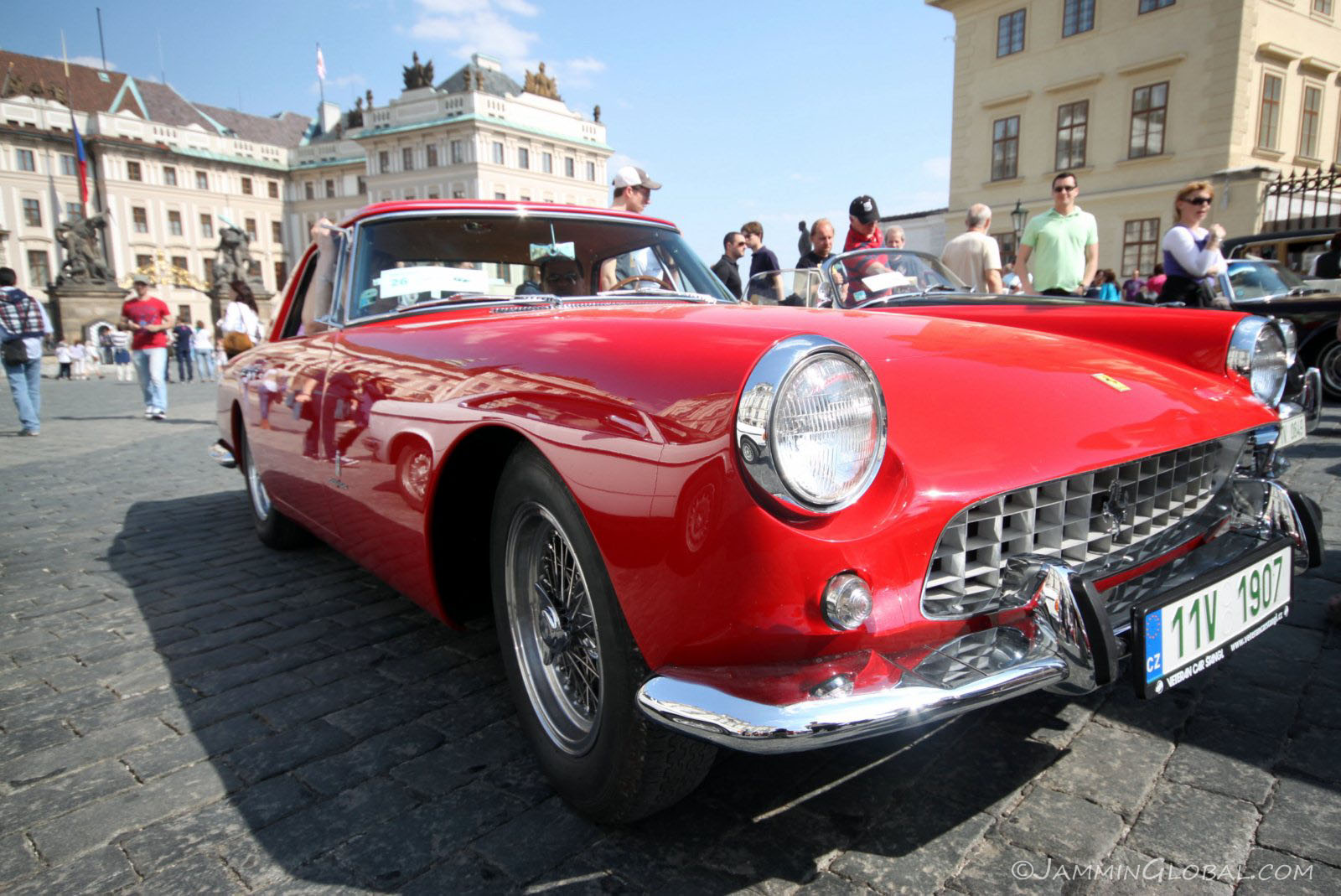
This looks like a Ferrari 250 variant, but can't be sure.
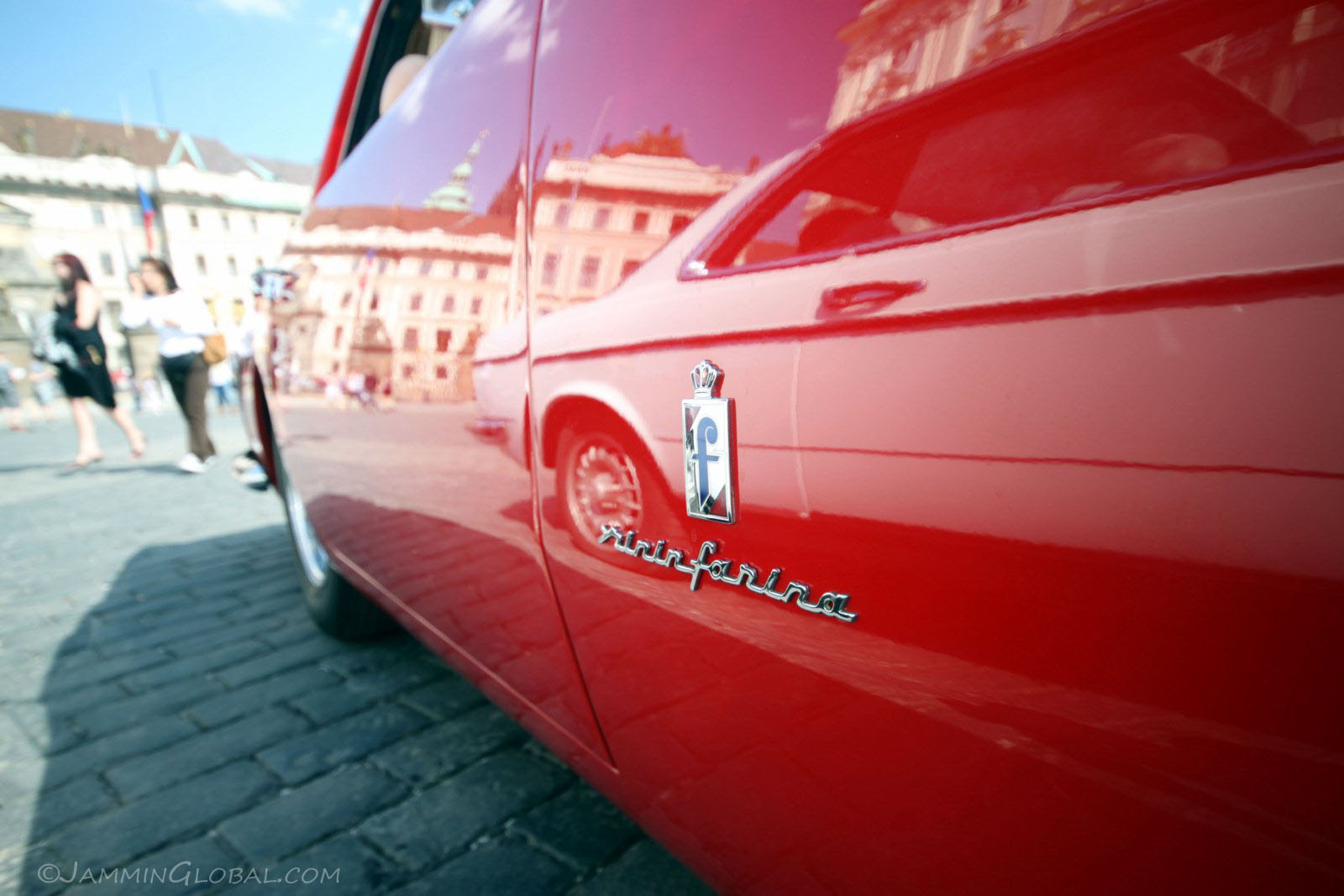
Penned by the specialist car design firm of Pininfarina who have had a long collaboration with Ferrari. A 1980's Škoda and the Prague Castle reflected in its shiny door.
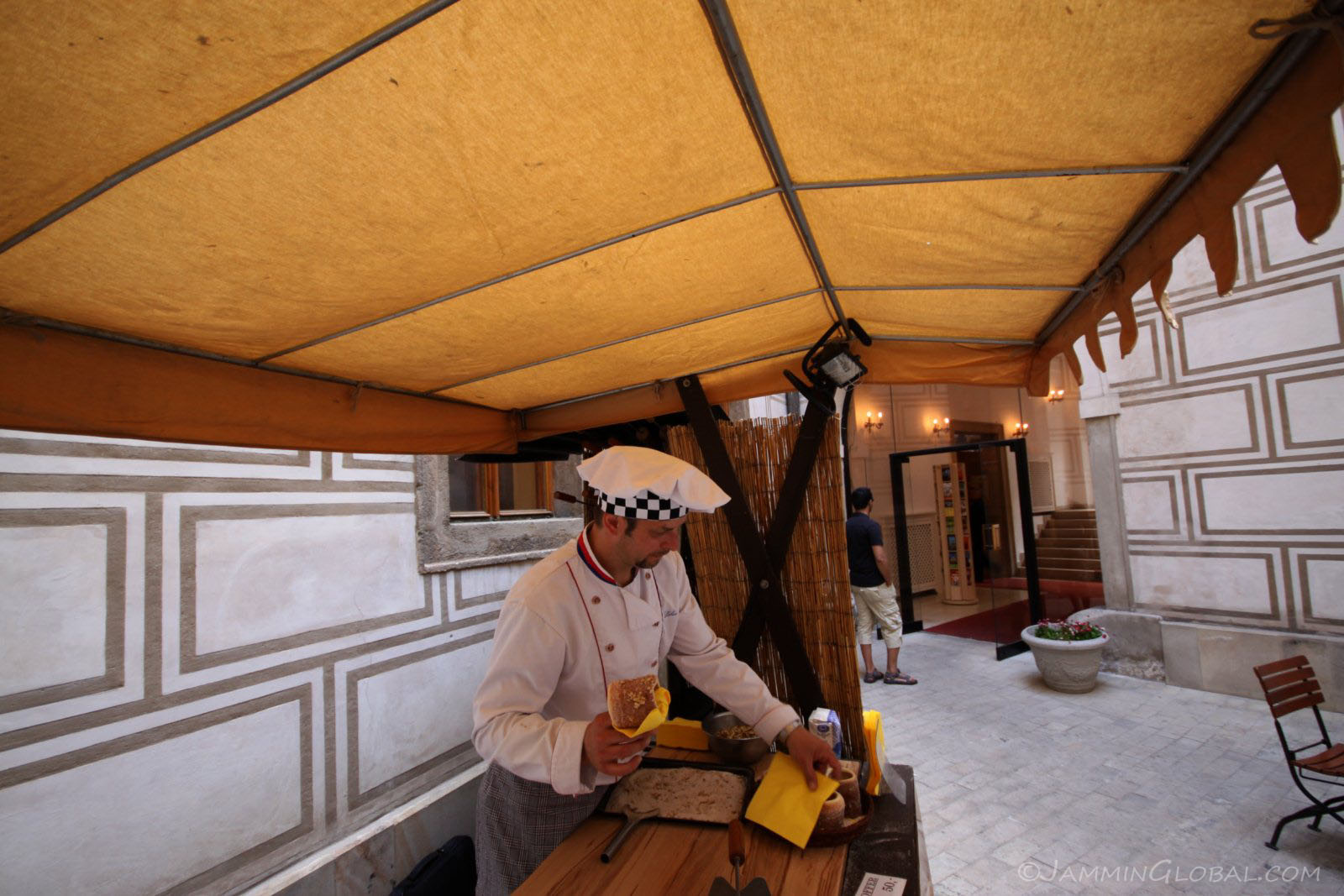
Walking around the castle complex, we were drawn in by the smells of freshly baking trdelník.
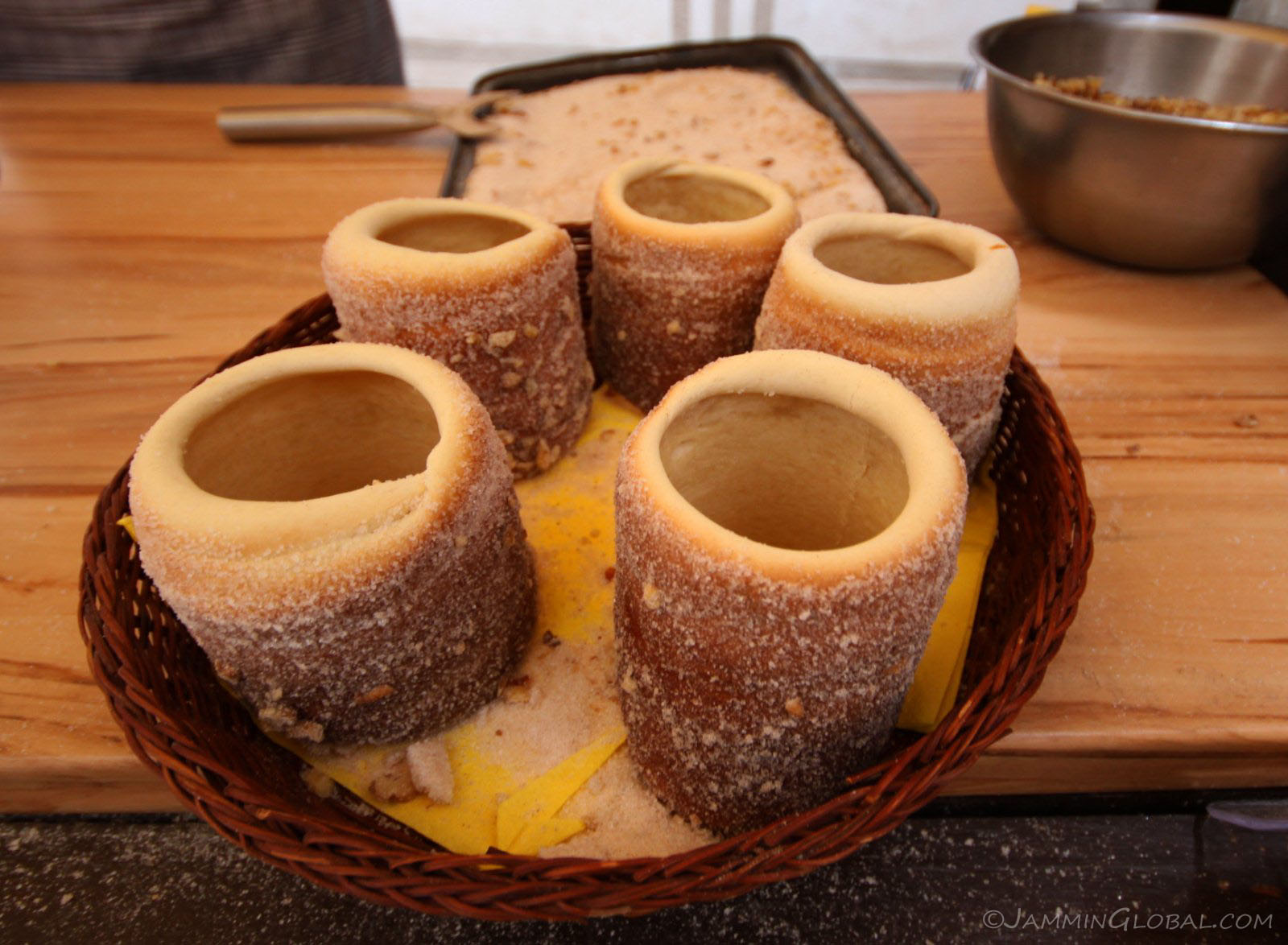
It's a hollow pastry baked around a wooden stick, referred to as a trdlo. It comes from the Slovak town of Skalica. The freshly baked dough is rolled in sugar and chopped walnuts and tasted heavenly.
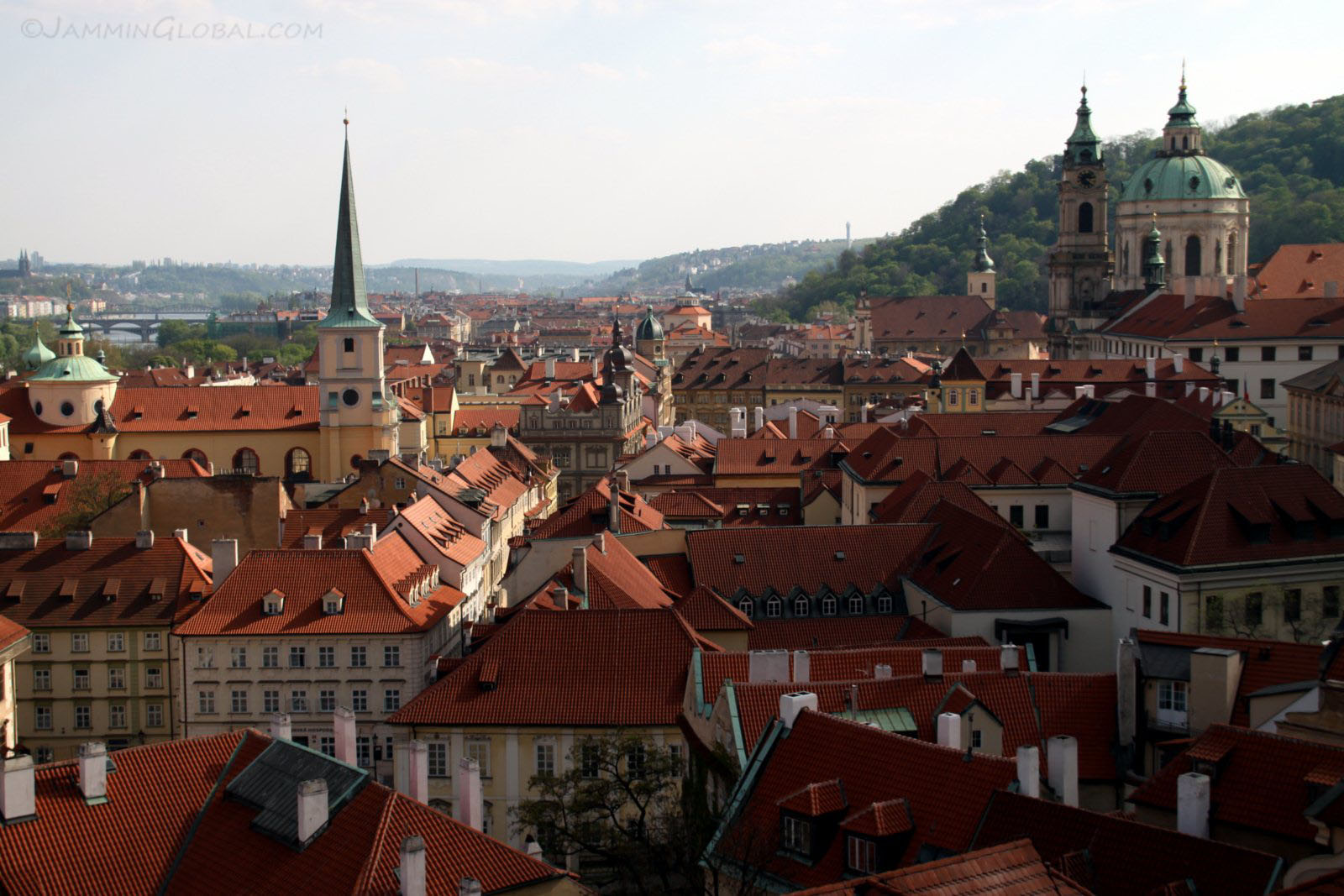
Looking out across the red roofs of Prague from the castle. The city has been in existence over 1,100 years and the area was inhabited for at least a thousand years before that. It's currently a cultural capital of Europe and is very charming to walk around and get lost in.
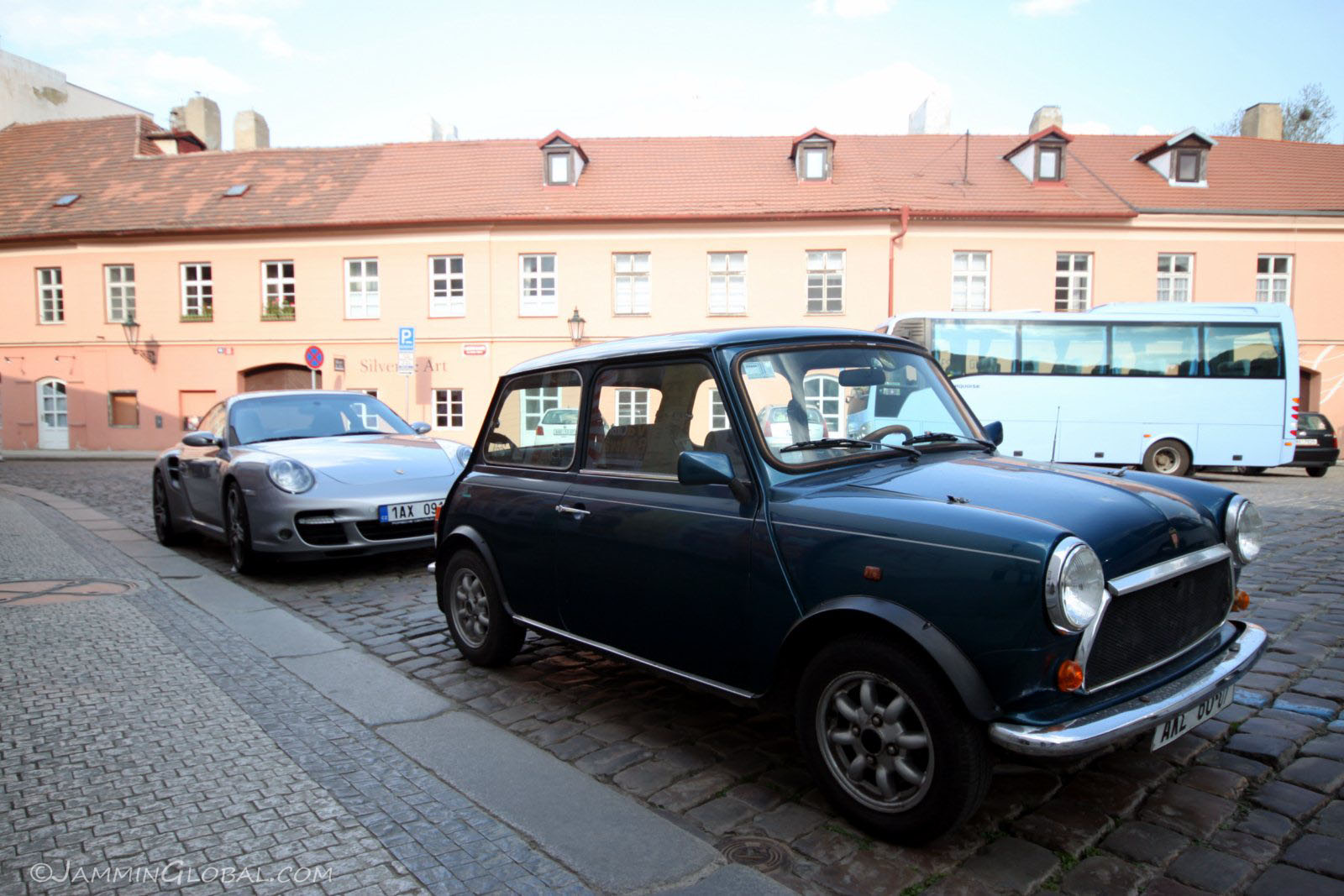
I'll just imagine this was a race on the cobble-stoned streets of Prague and the Classic Mini Cooper beat out the new, flashy Porsche 911.
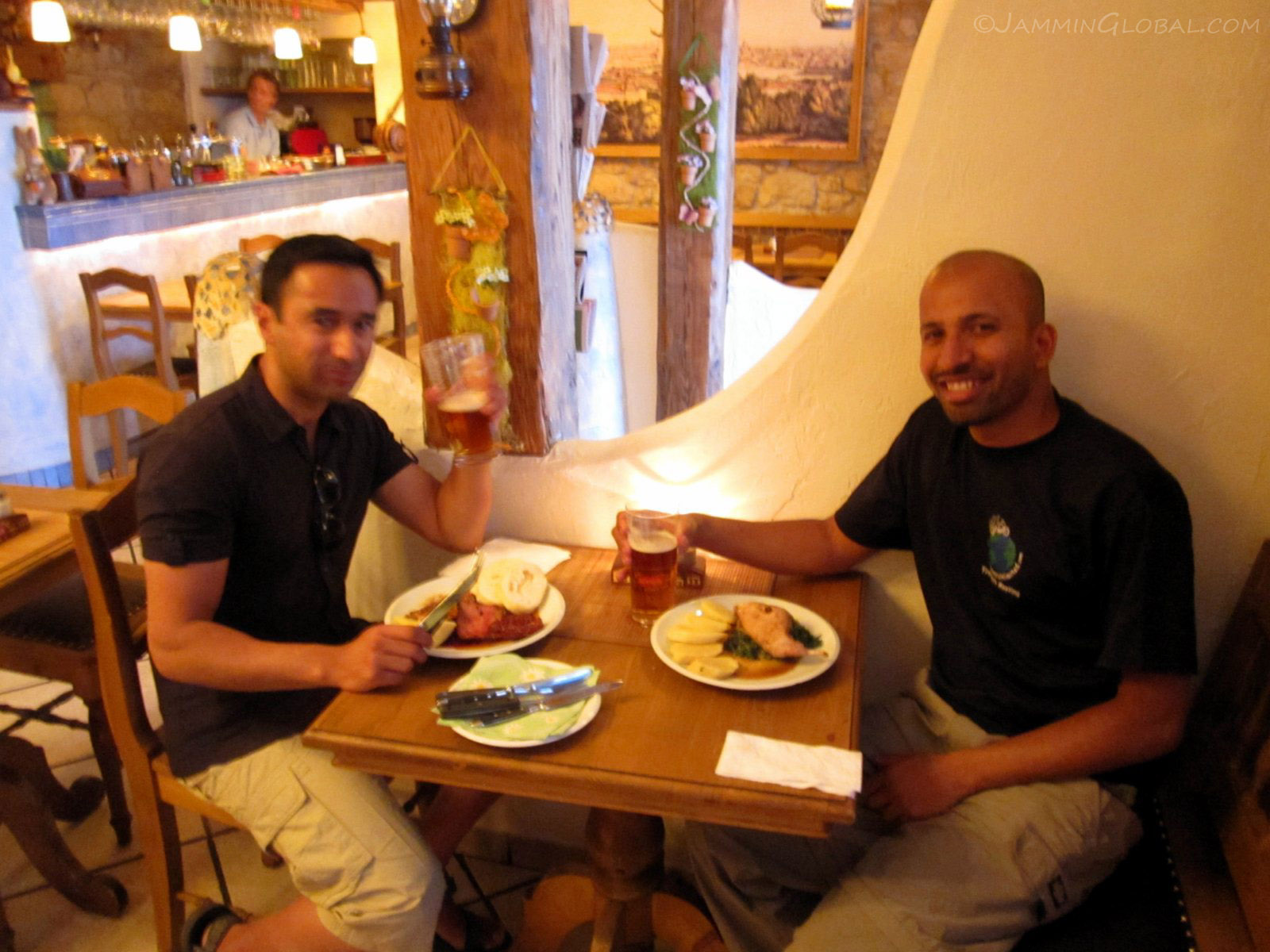
Having dinner in a tavern of some juicy rabbit being washed down by tasty Czech beer.
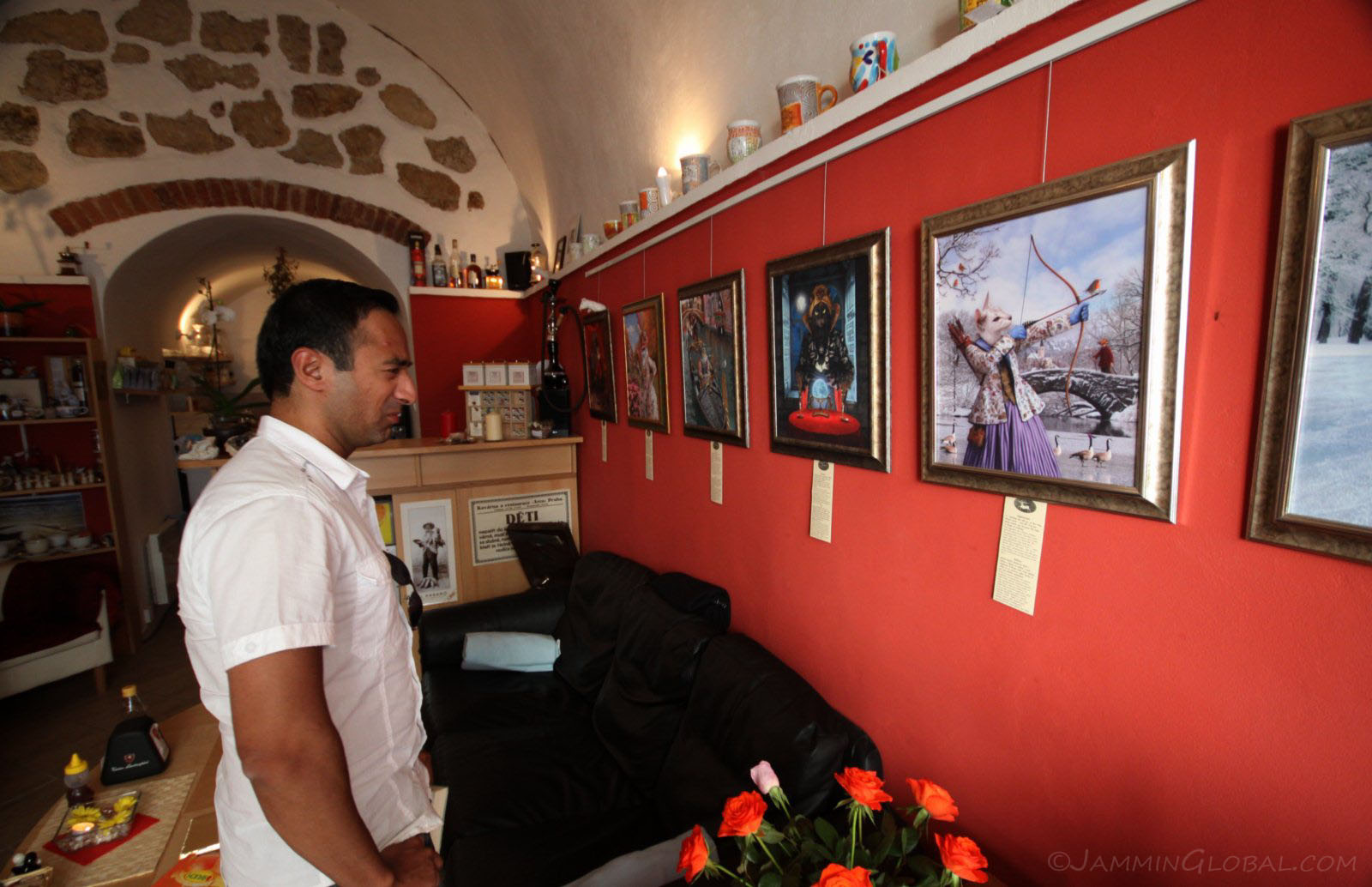
The next morning, on our walk around the city, Harjoth was intrigued by this mini art gallery/cafe that had paintings of only cats with a zodiac reference under each one.
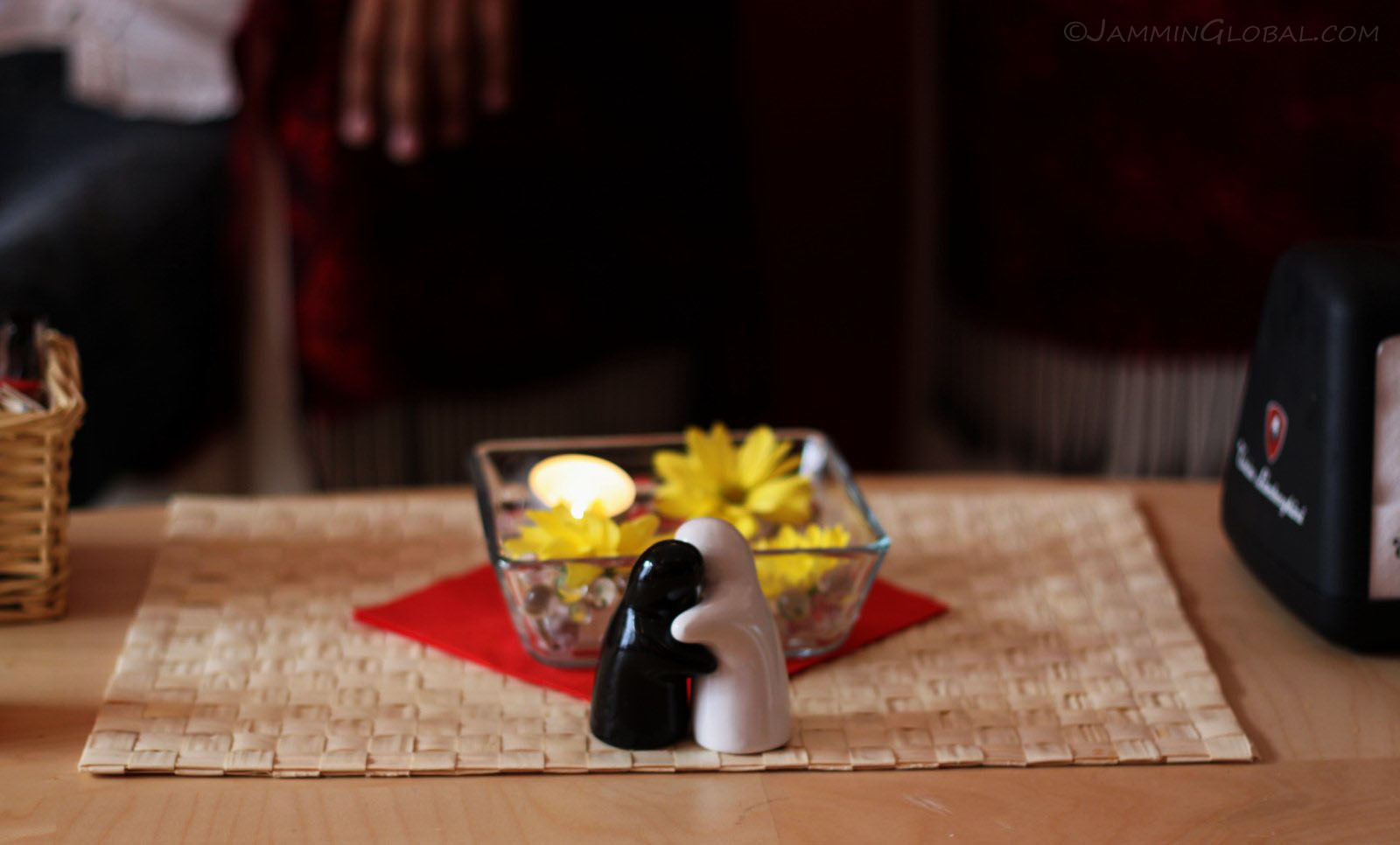
We had a tea in-between our pints of beer and the atmosphere was very relaxing. I caught the salt and pepper shaker stealing a quick one. Note the Lamborghini designed paper napkin holder.
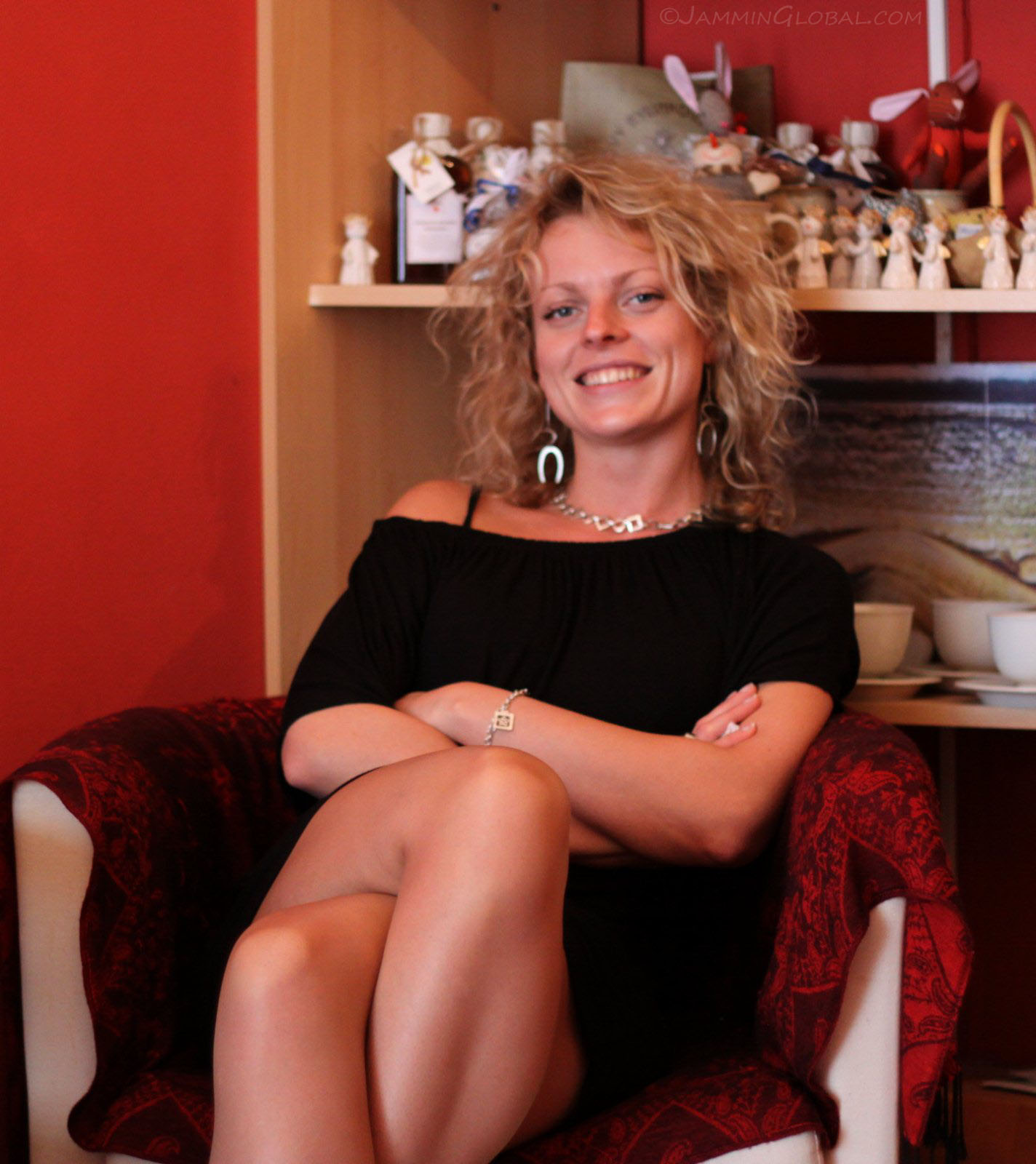
The cafe was run by beautiful Alena, who seemed to exude a sense of bohemianess about her.
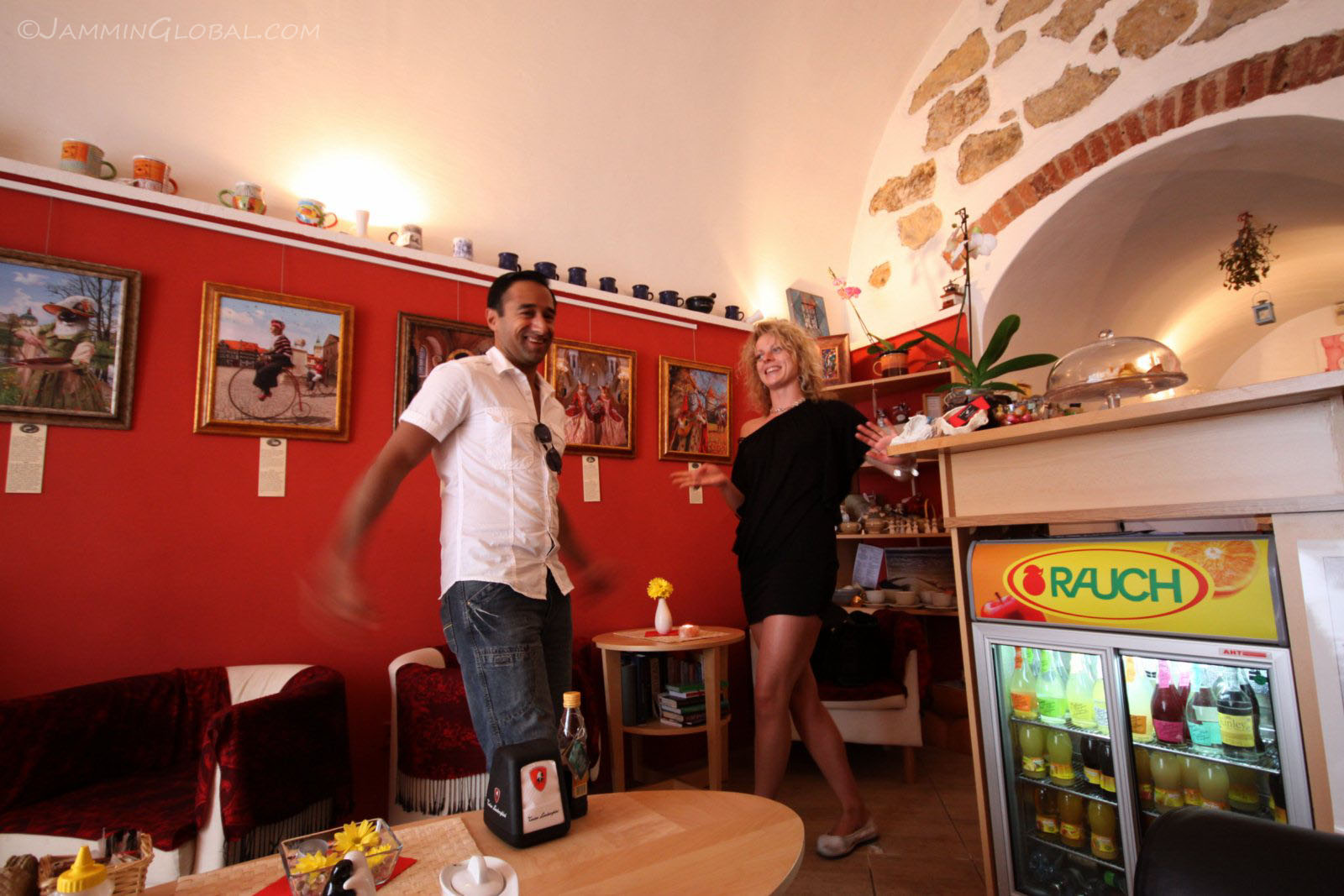
Harjoth started inquiring about the paintings and Alena revealed that she was the model in each of them and her close friend had painted them. Since walking in, Harjoth was set on buying the Scorpio one, even though that's not his zodiac sign and here they're negotiating the terms, which was a fun moment to capture. Since she hadn't sold any before, it sounded like she was unprepared for a sale of the one-offs.
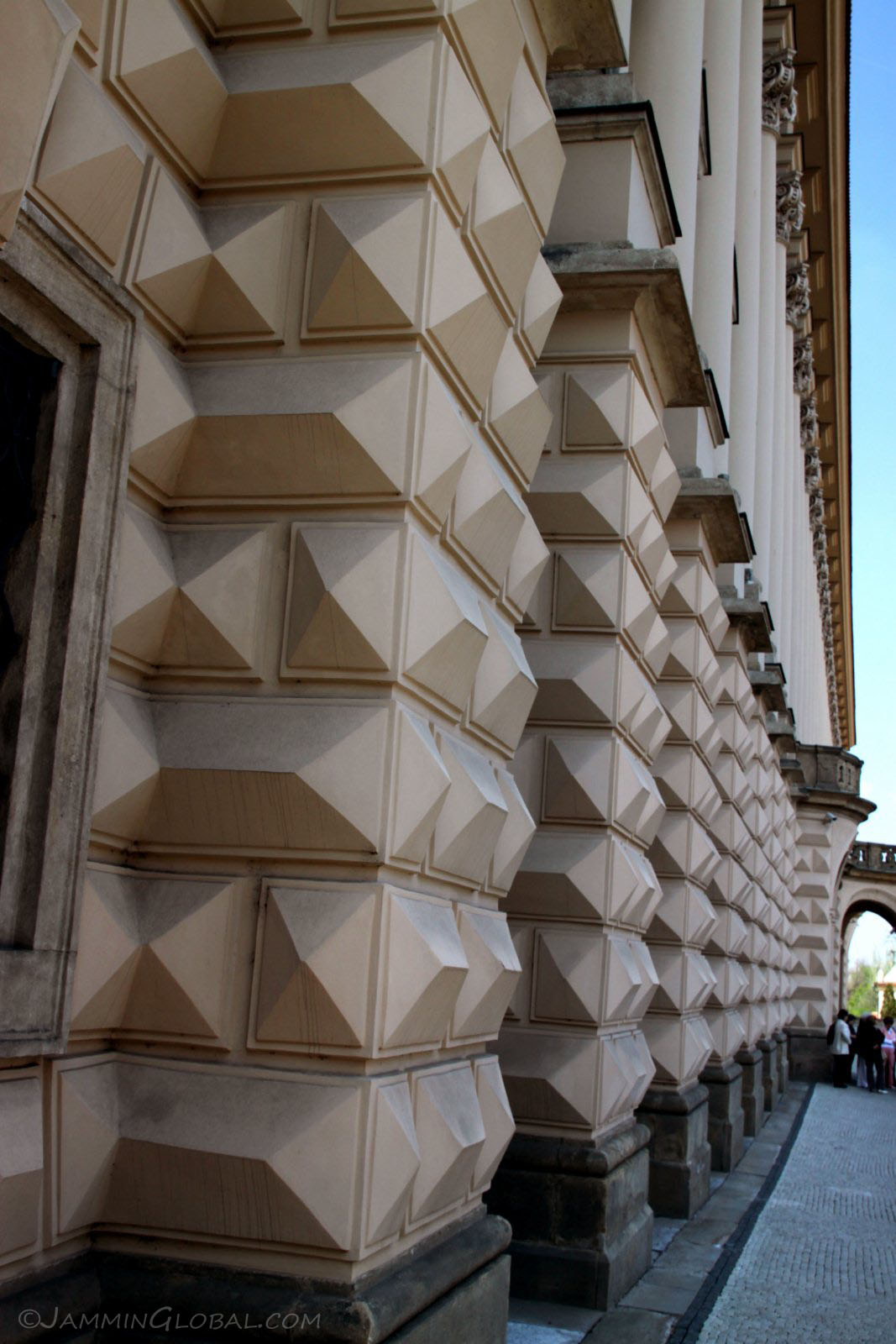
The city is filled with excellent architecture, ranging from Gothic to cubism and I can't really place this.
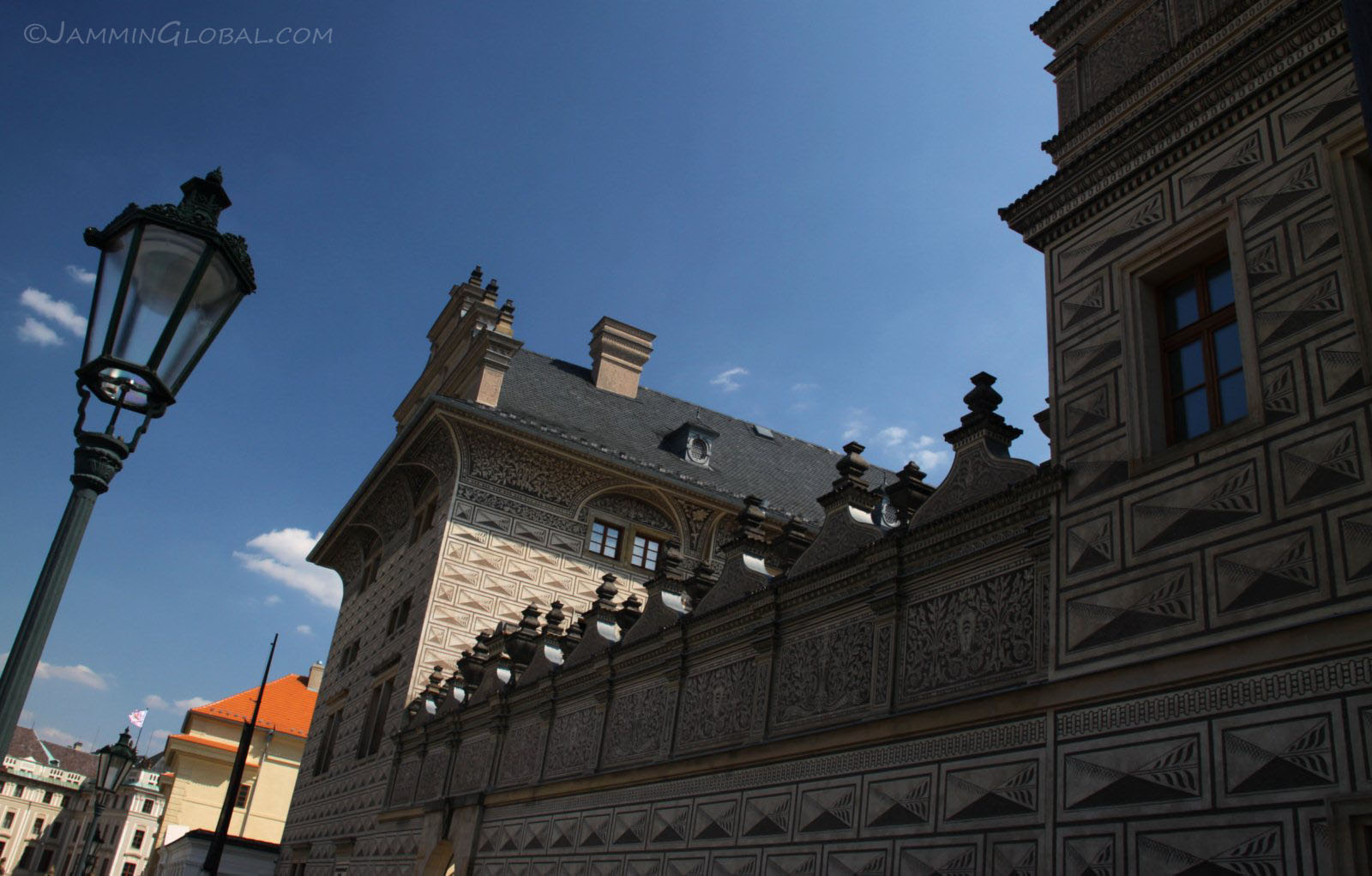
The interesting facade of the National Gallery drew us in for a closer look.
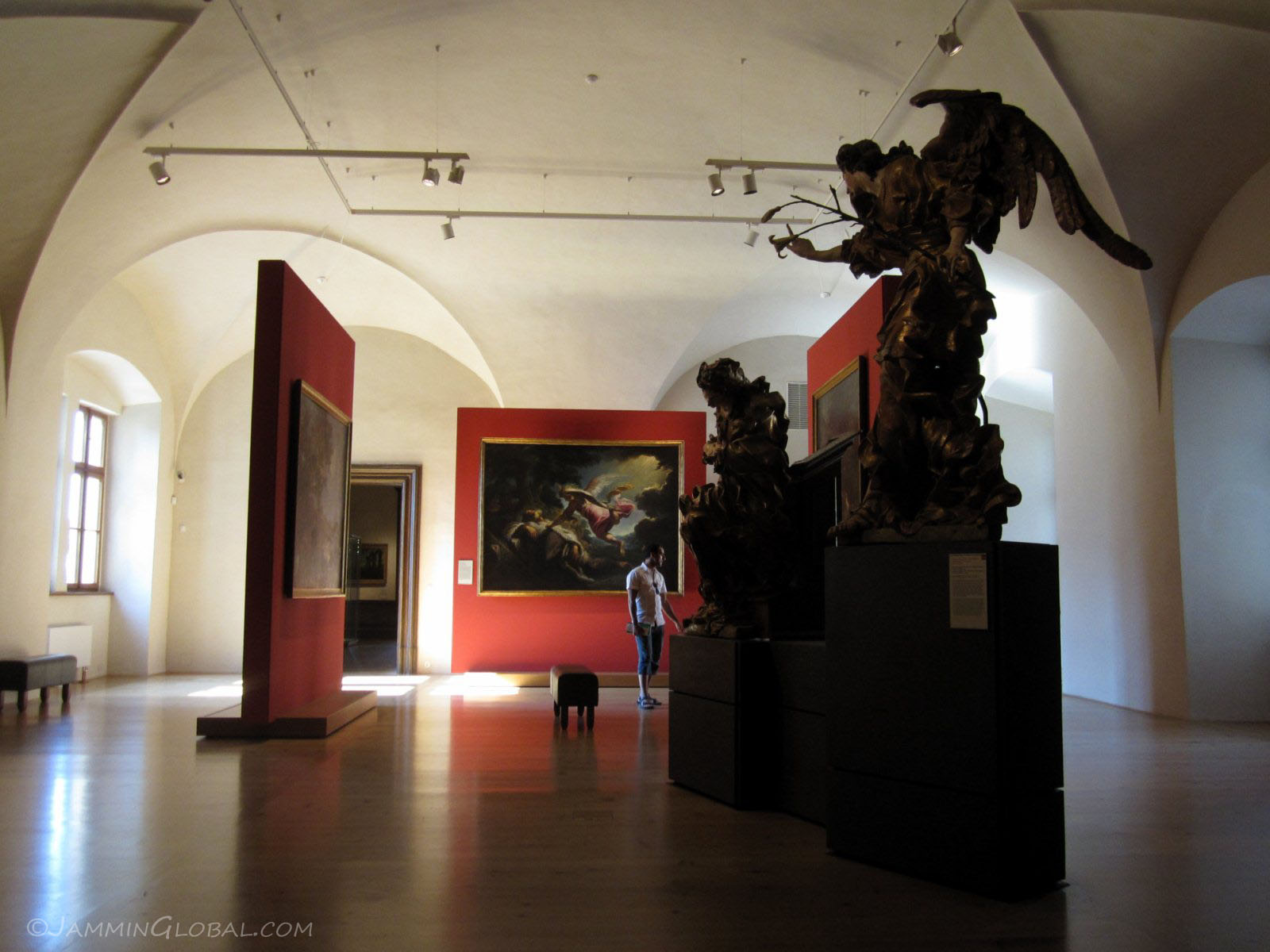
For a reasonable fee, we were treated to a variety of displays of art through the ages. A grand hall with massive paintings and sculptures.
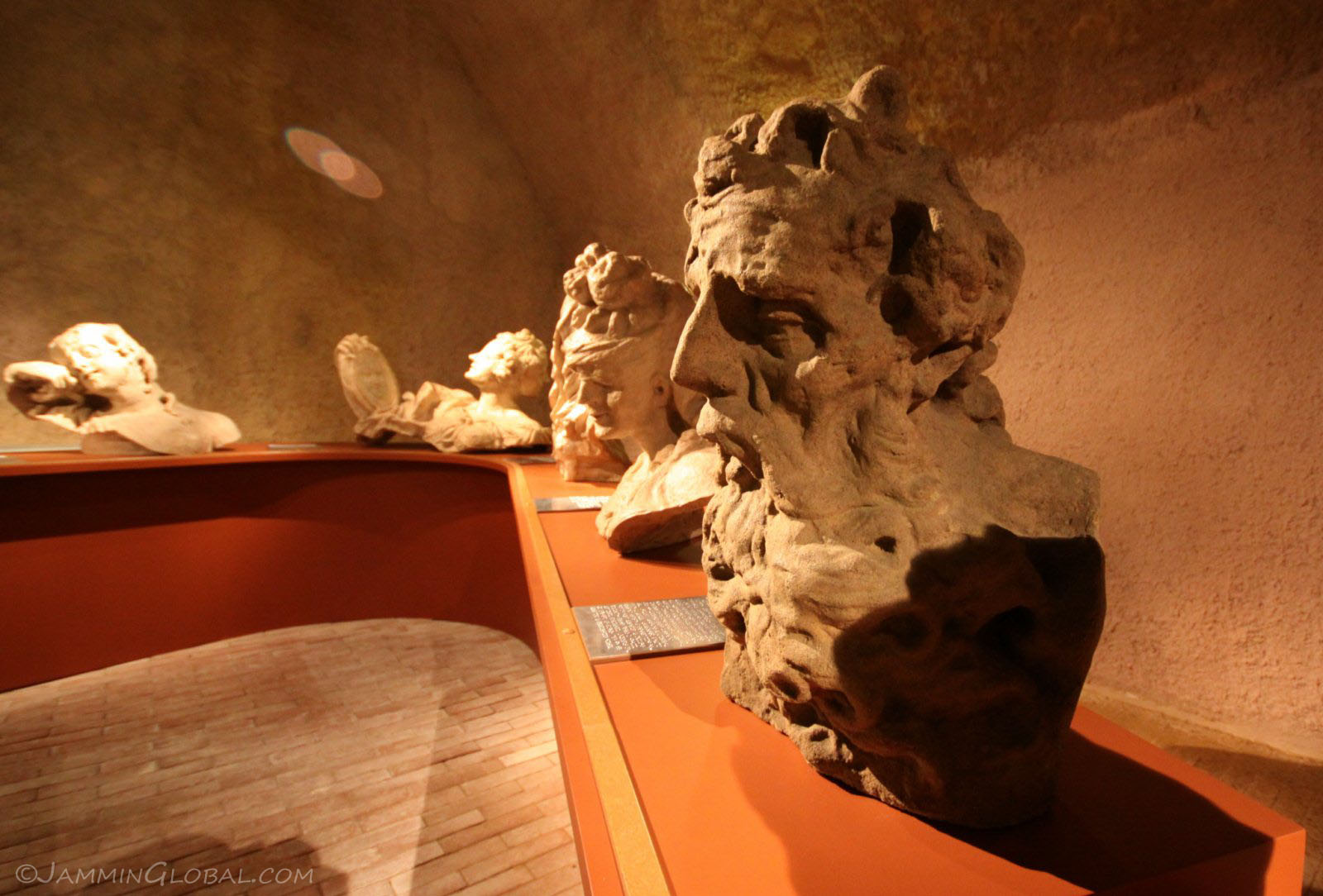
Busts by Matyas Bernard Braun from the 17th century.
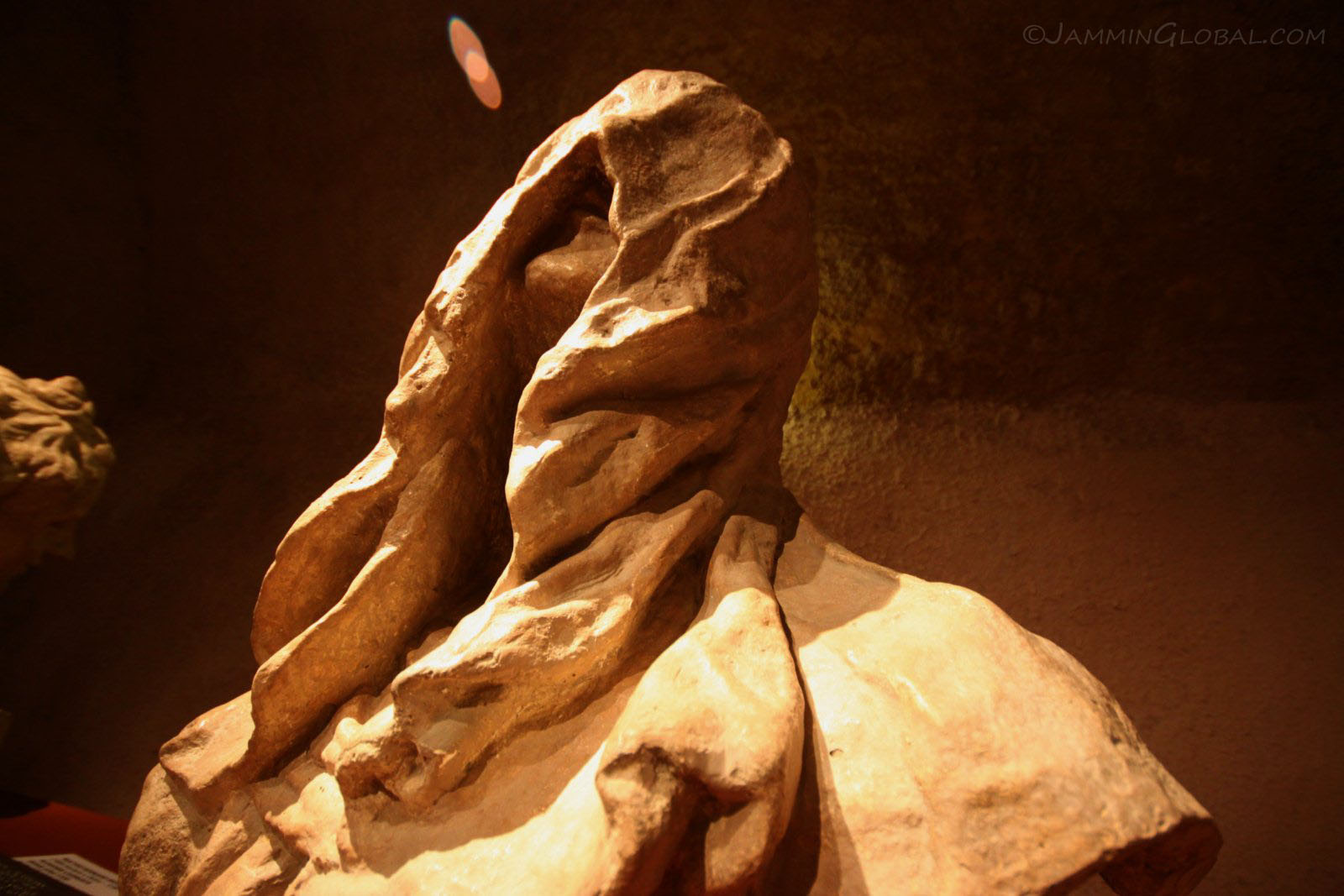
Representing a sinister monk, perhaps?
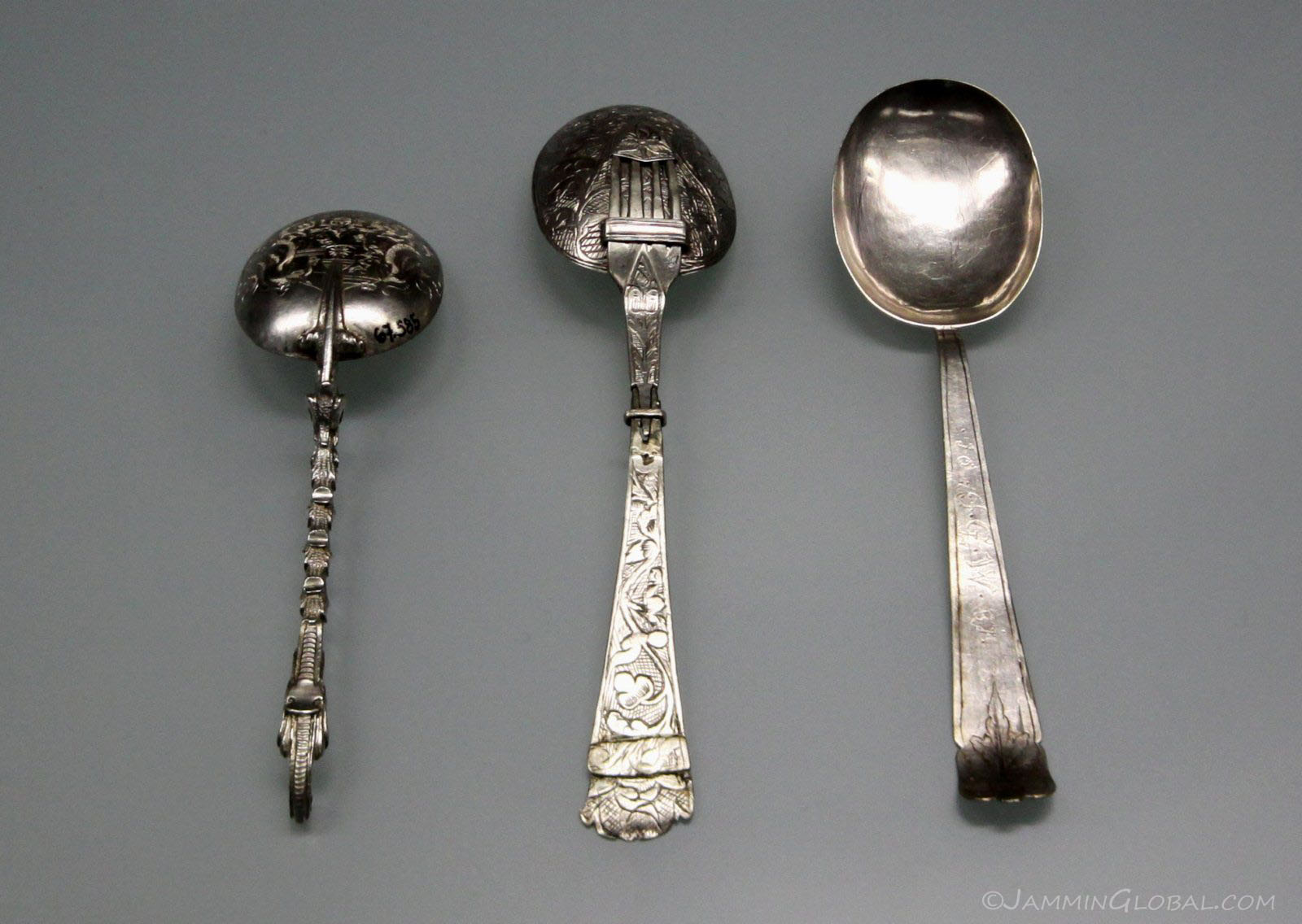
I say, that looks like the first incarnation of the 'sprok', a combination spoon and fork. Brilliant! I want one.
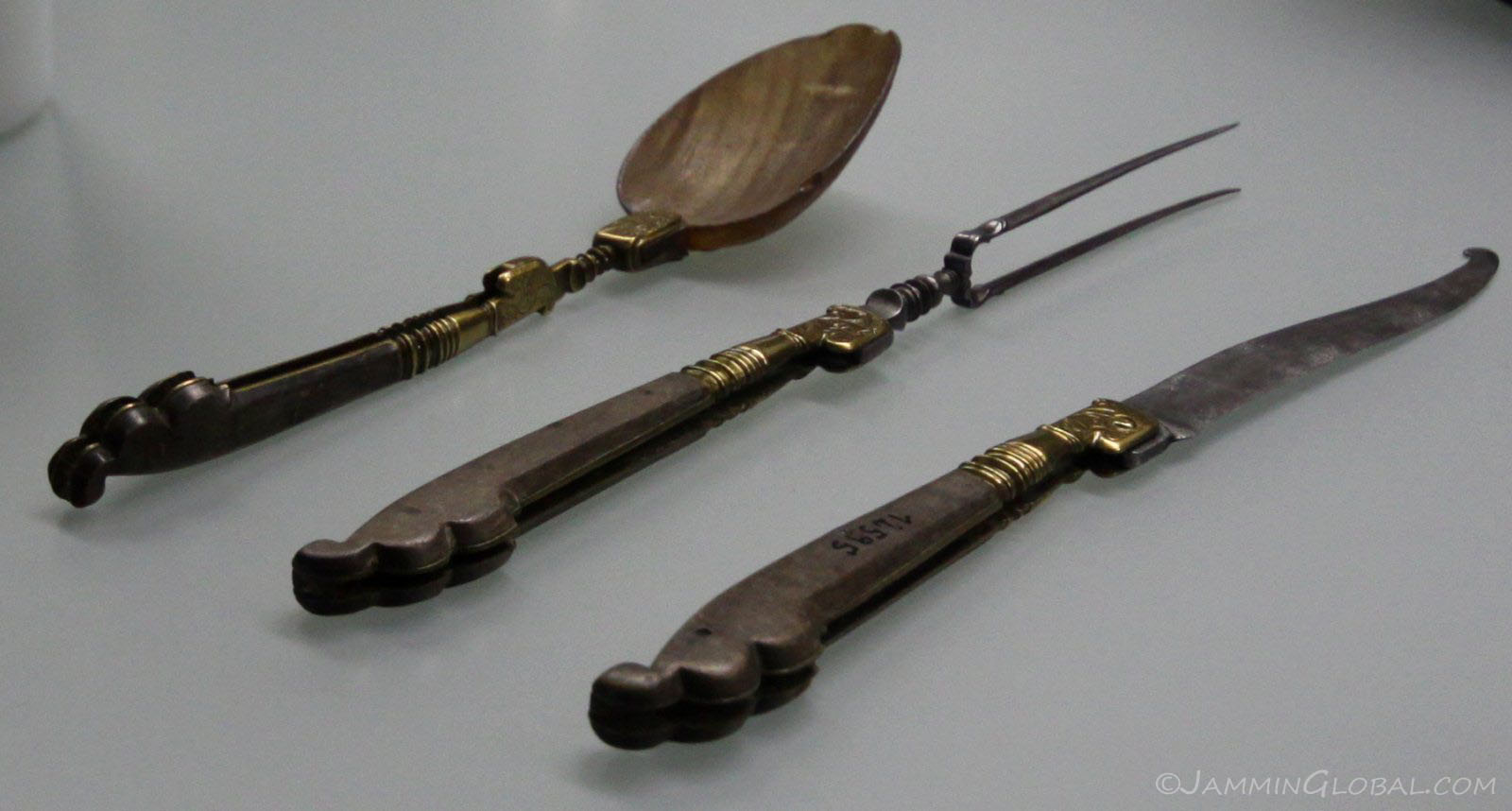
Before the Swiss Army Knife and Leatherman, there was the folding set of cutlery (from the 18th century).

Having a hearty pint of dark Czech beer in one of the many cafes lining the narrow streets around the castle.

Prague is filled with tourists and shops are keen on novelty for sales. How about cannabis flavored vodka?
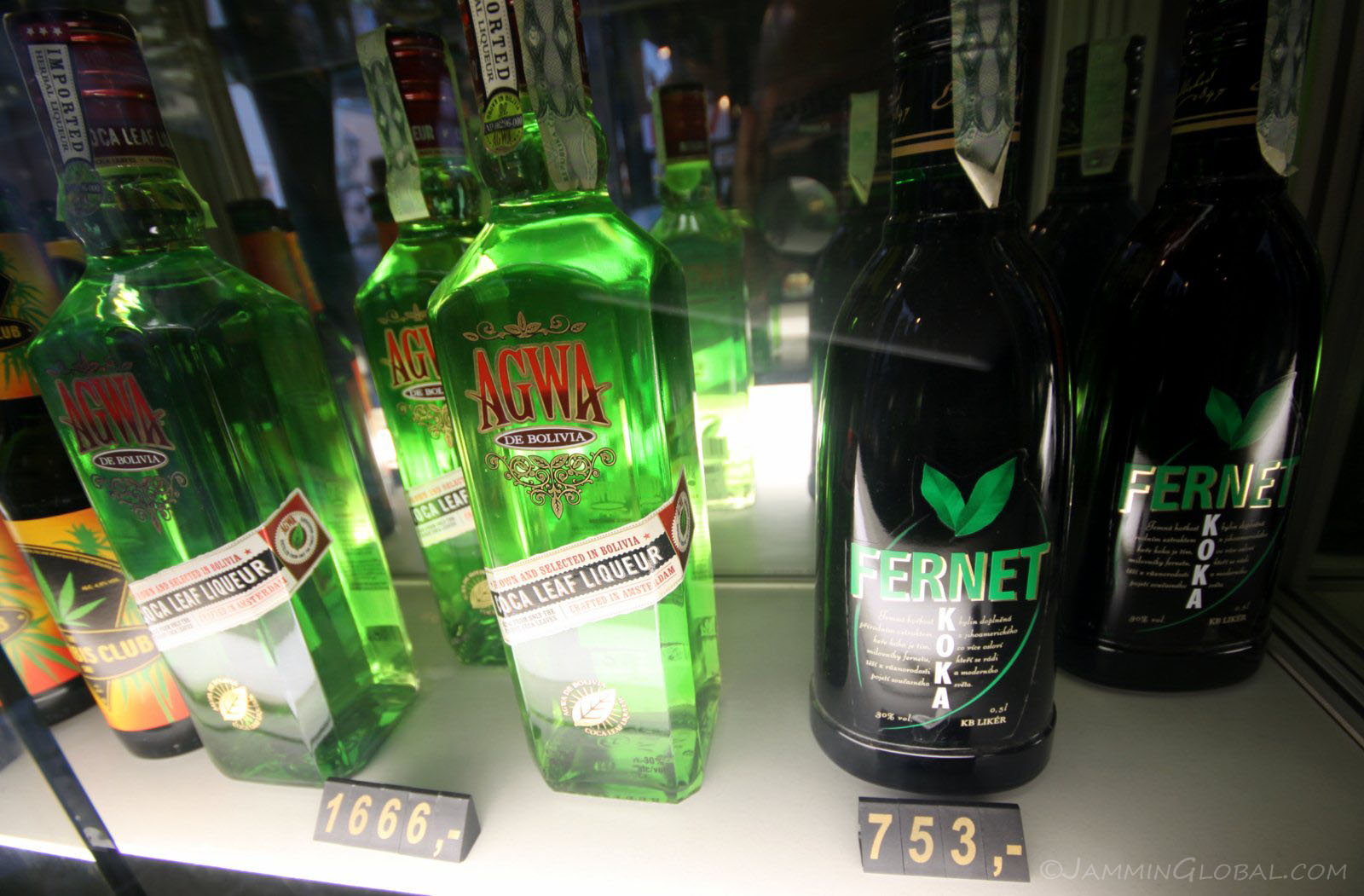
Or coca leaf liquer, straight from Bolivia. They even had coca flavored fernet, a liquor from Italy and Argentina.
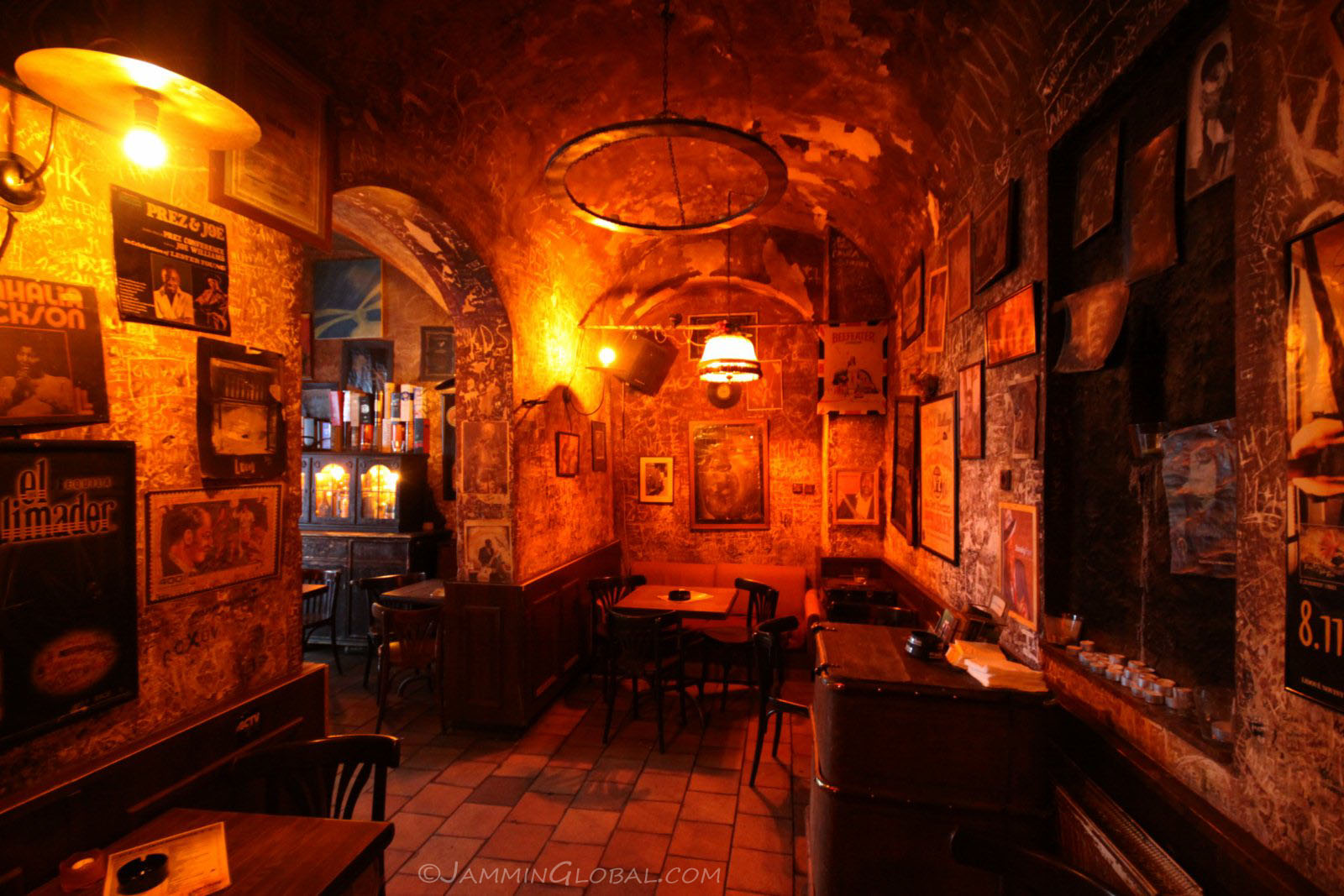
Another jazz bar with scribbles on the wall by all the famous musicians that have played there.
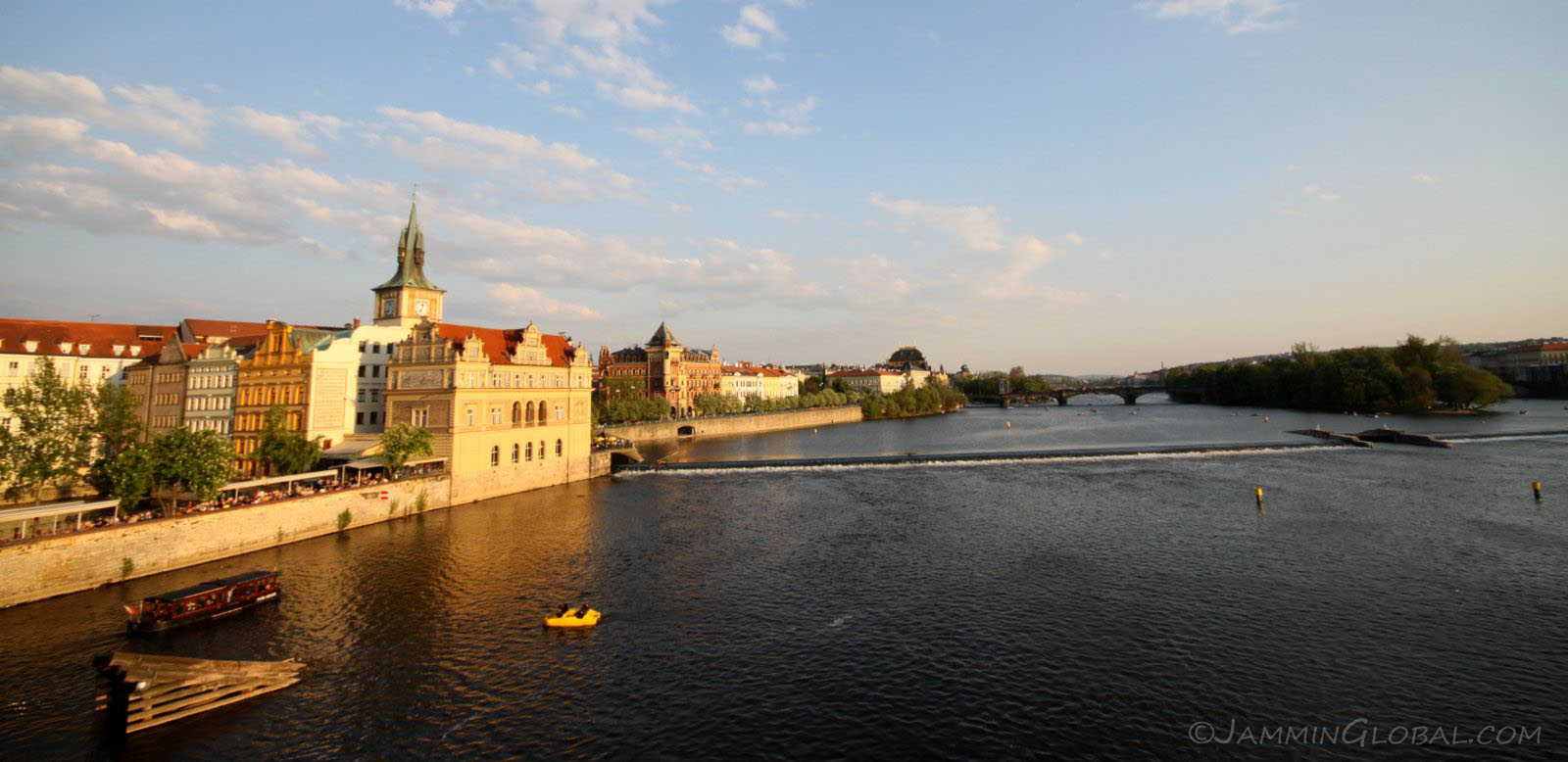
Heading over to the old city across the Vltava river.
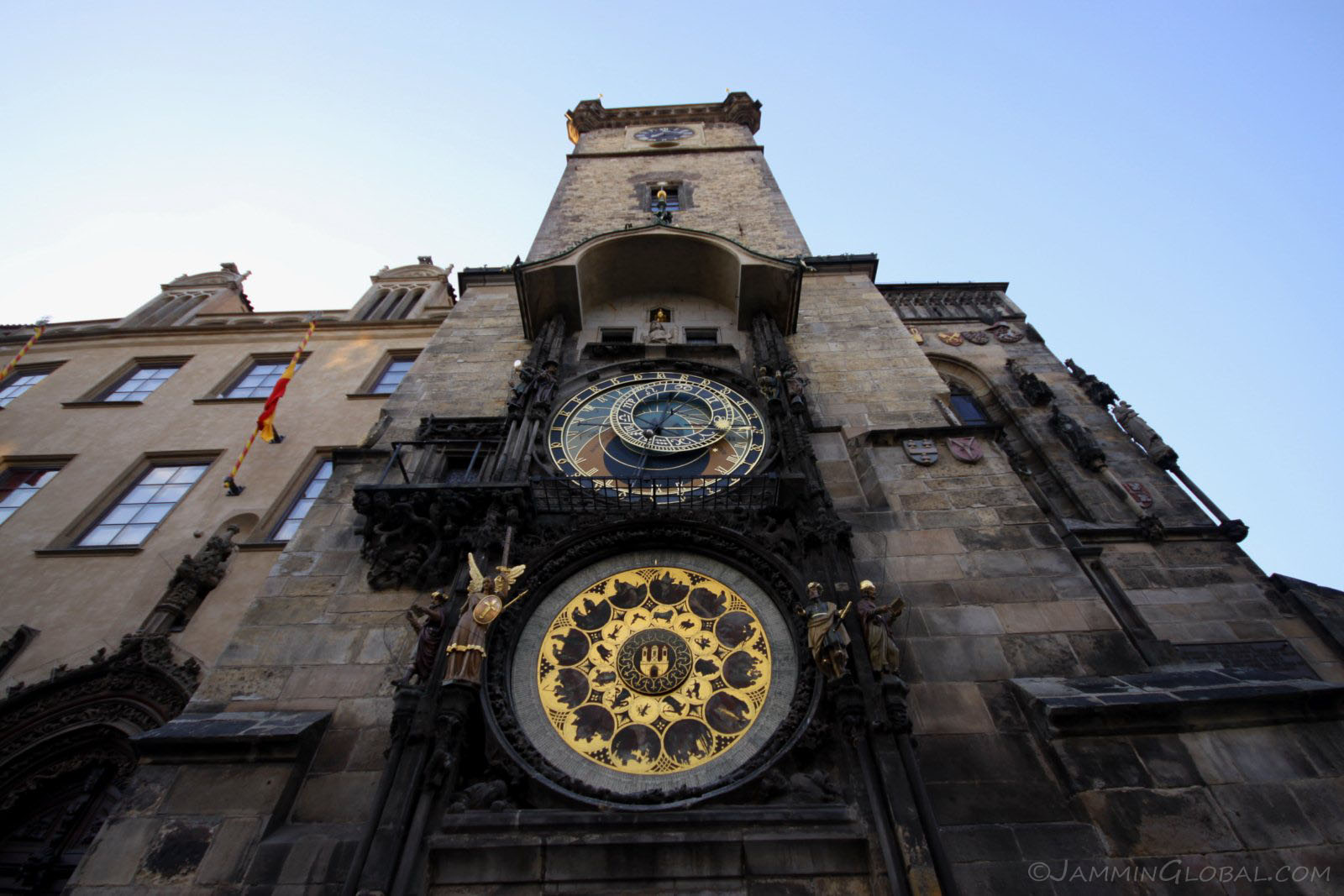
The Prague Orloj (Astronomical Clock) dating from 1410. It's a very complex clock representing the position of the Sun and Moon and other astronomical details. It's a form of a mechanical astrolabe, a device used in the Middle Ages to predict the position of celestial bodies for purposes ranging from horoscopes to triangulation and land surveying.
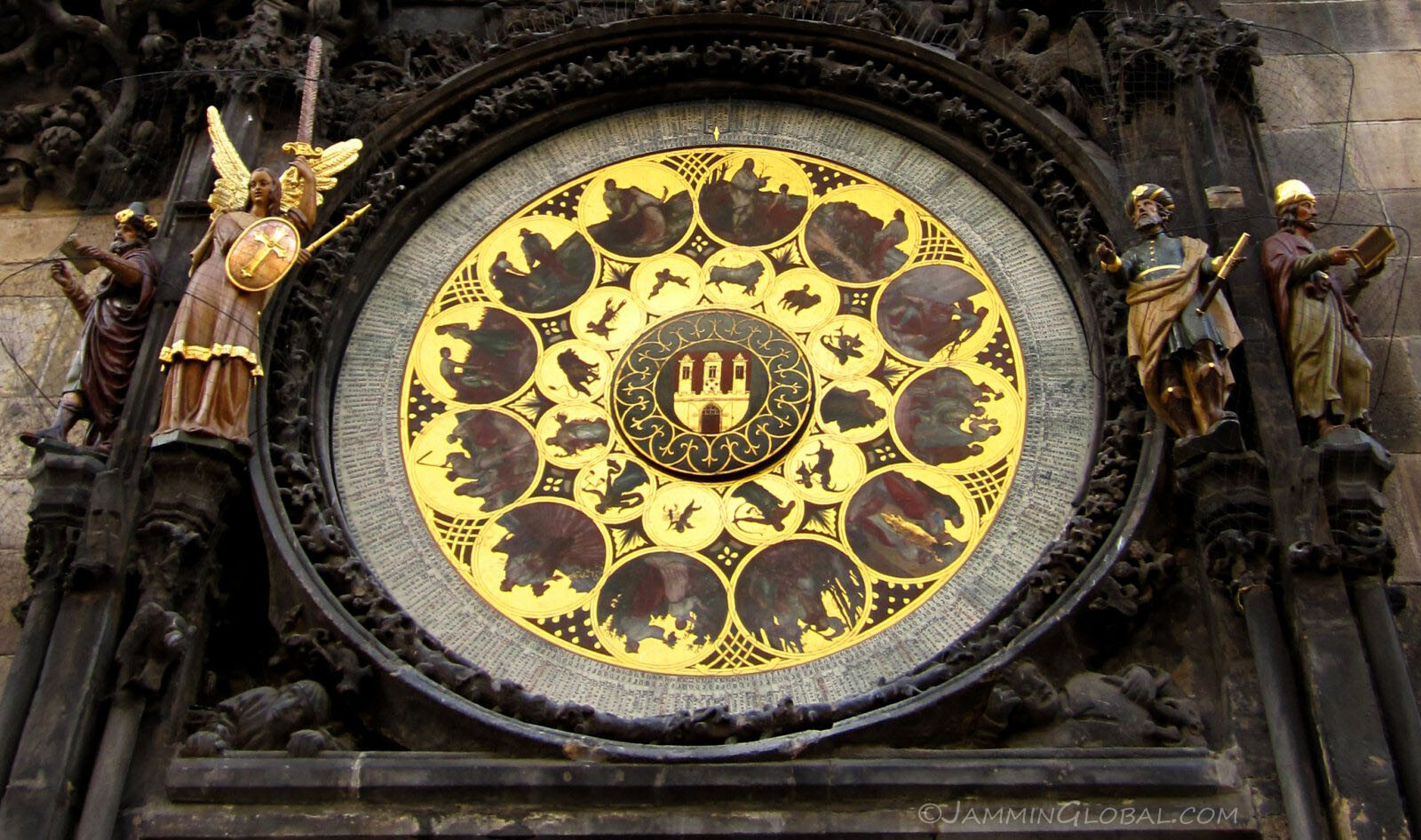
The clock recently had its 600th anniversary in 2010 and is the only still functional astronomical clock in the world.
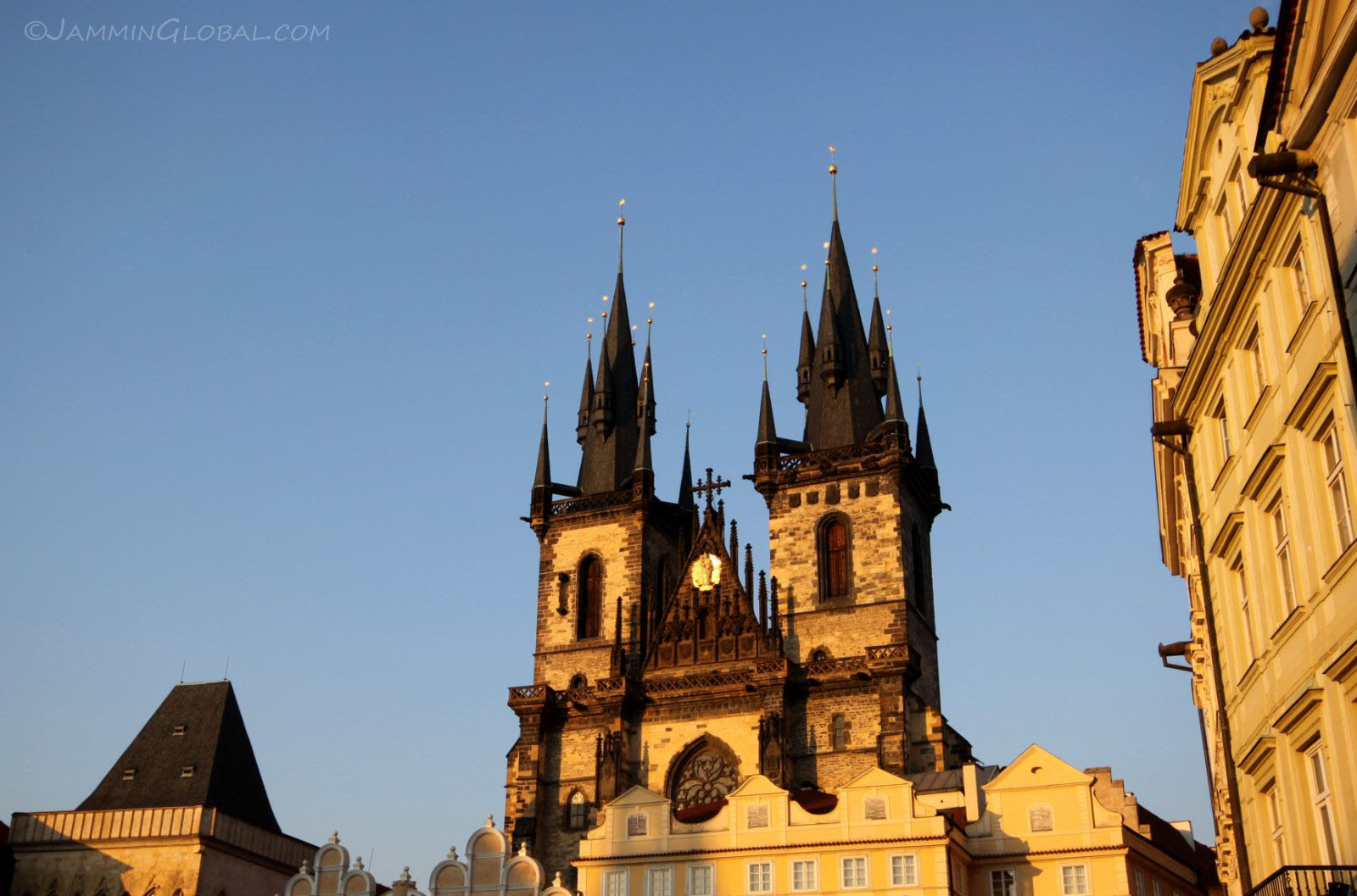
The Týn Cathedral of Old Town, dating from the 14th century with classic Gothic spires on the roof. Danish Astronomer Tycho Brahe is buried inside, after being invited by the Bohemian King Rudolph II in the 16th century to become the official imperial astronomer. Brahe is credited with challenging the previously held belief that the heavens were unchanging and is considered the last naked eye astronomer, as after him, Galileo invented the telescope, which transformed our understanding of the Universe. Brahe's assistant, Johannes Kepler used Brahe's extensive data to form his own theories and derive the laws of planetary motion, which Newton in turn used to form his famous laws of gravity.
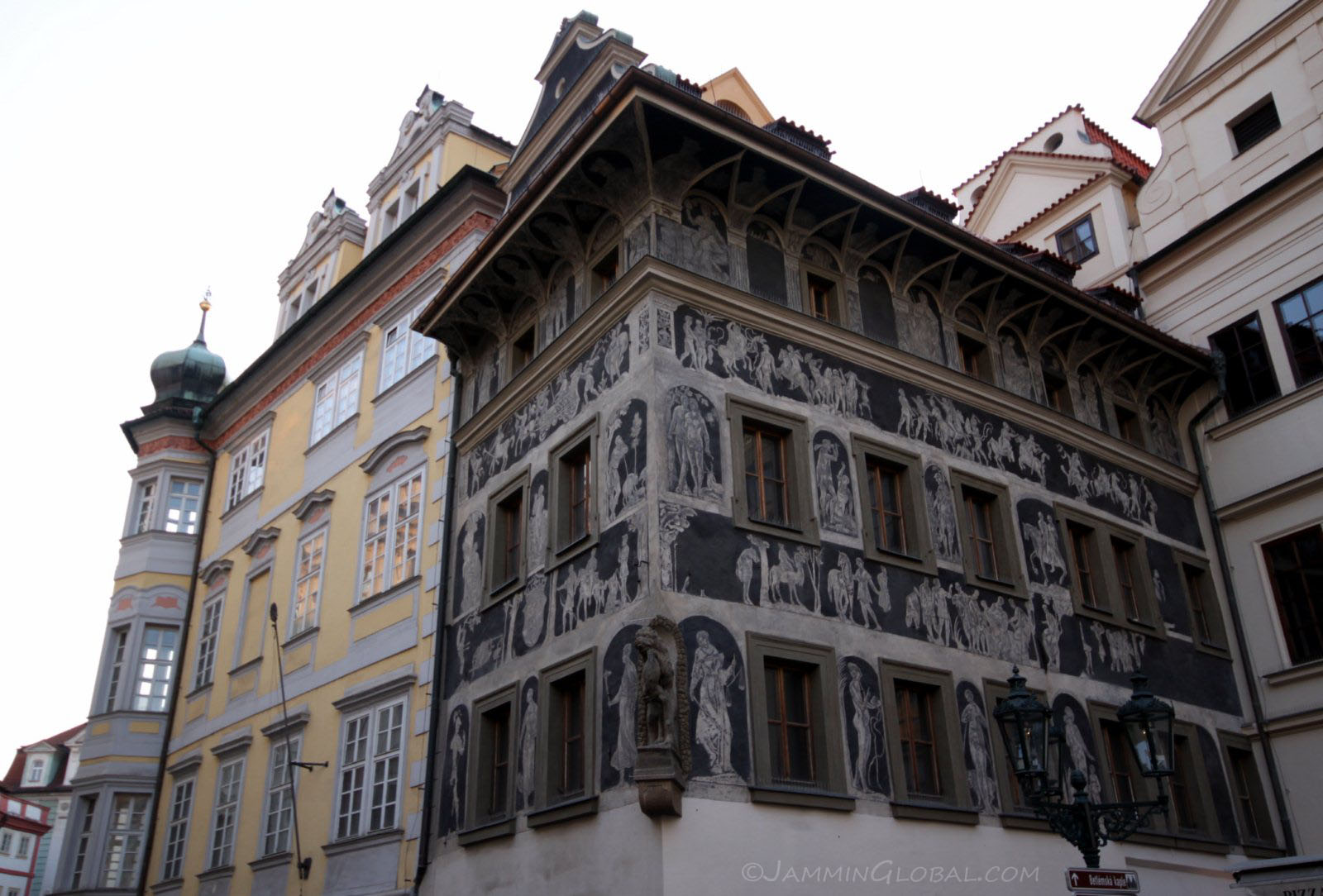
A beautifully decorated exterior in Old Town.
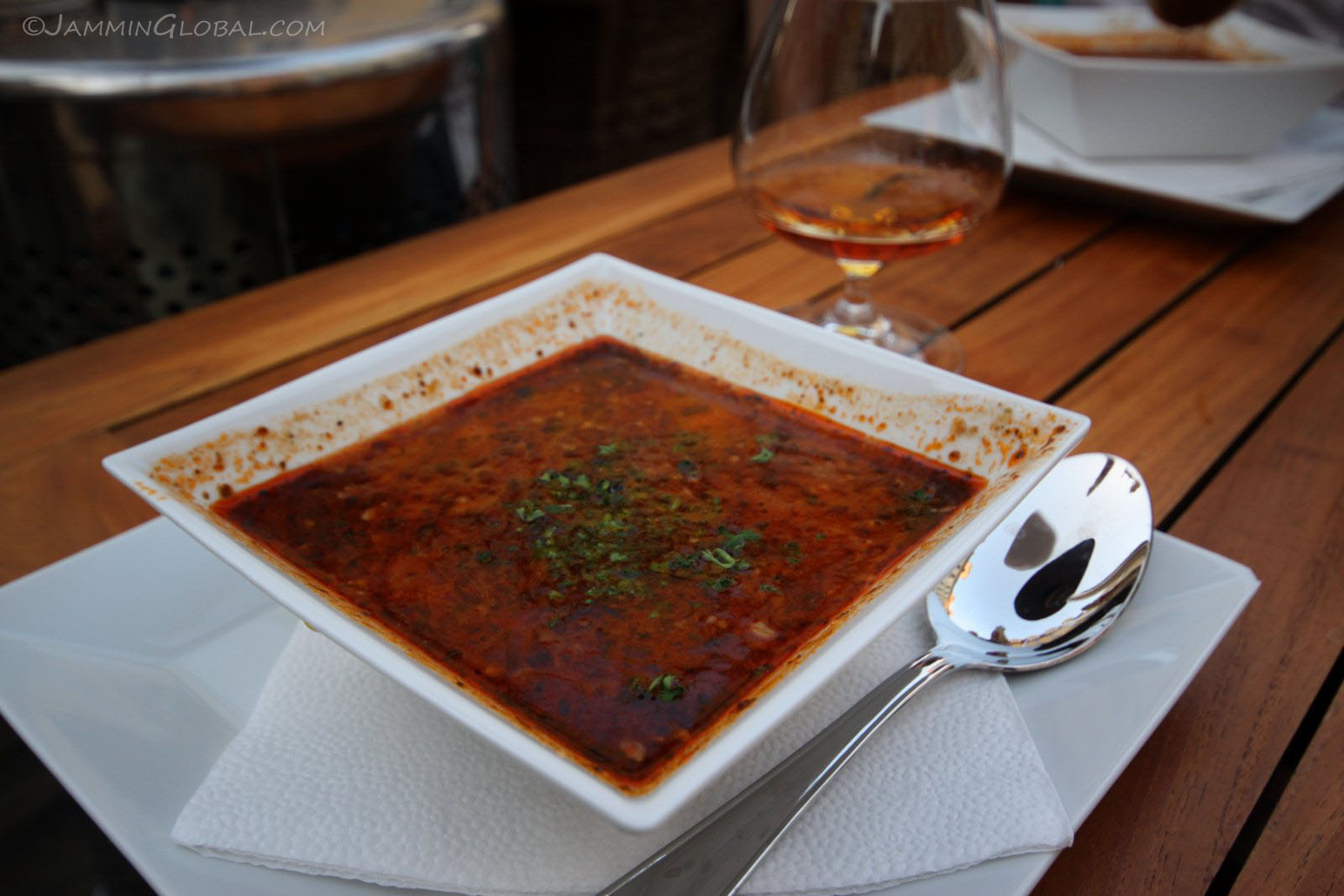
Having dinner in the Small Square. Starting with goulash soup accompanied with some cognac for the chilly evening.
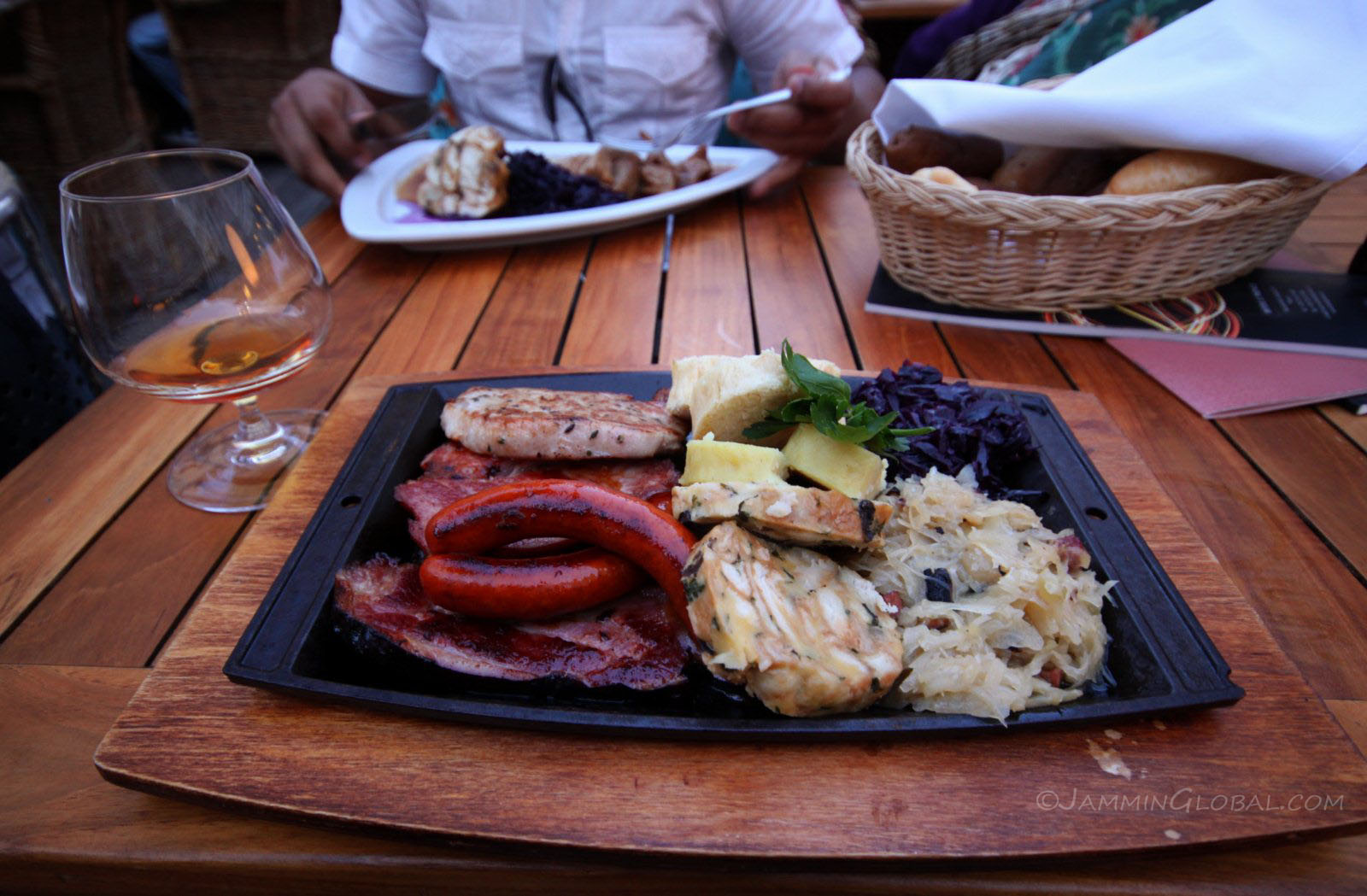
Followed by a mixed grill sizzler. Mmm.
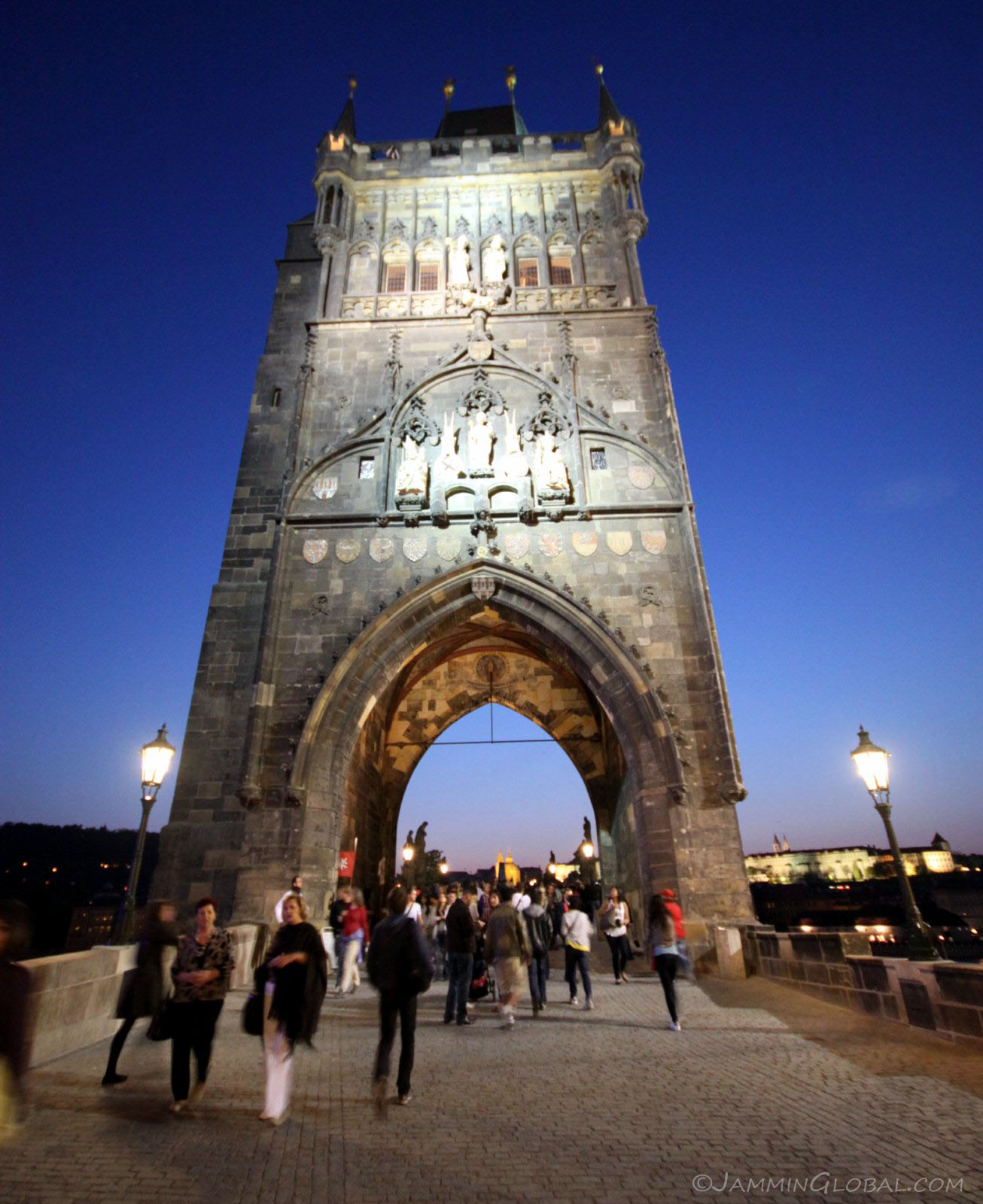
The tower at the Staro Mesto end of Charle's Bridge, connecting Old Town to Prague Castle. From the 15th century to 1841, this was the only means of crossing the Vltava river and made Prague an important trade route, connecting Eastern and Western Europe. It was commissioned by King Charles IV in 1357. Today it is a pedestrian-only bridge, adding to the flair of the city.
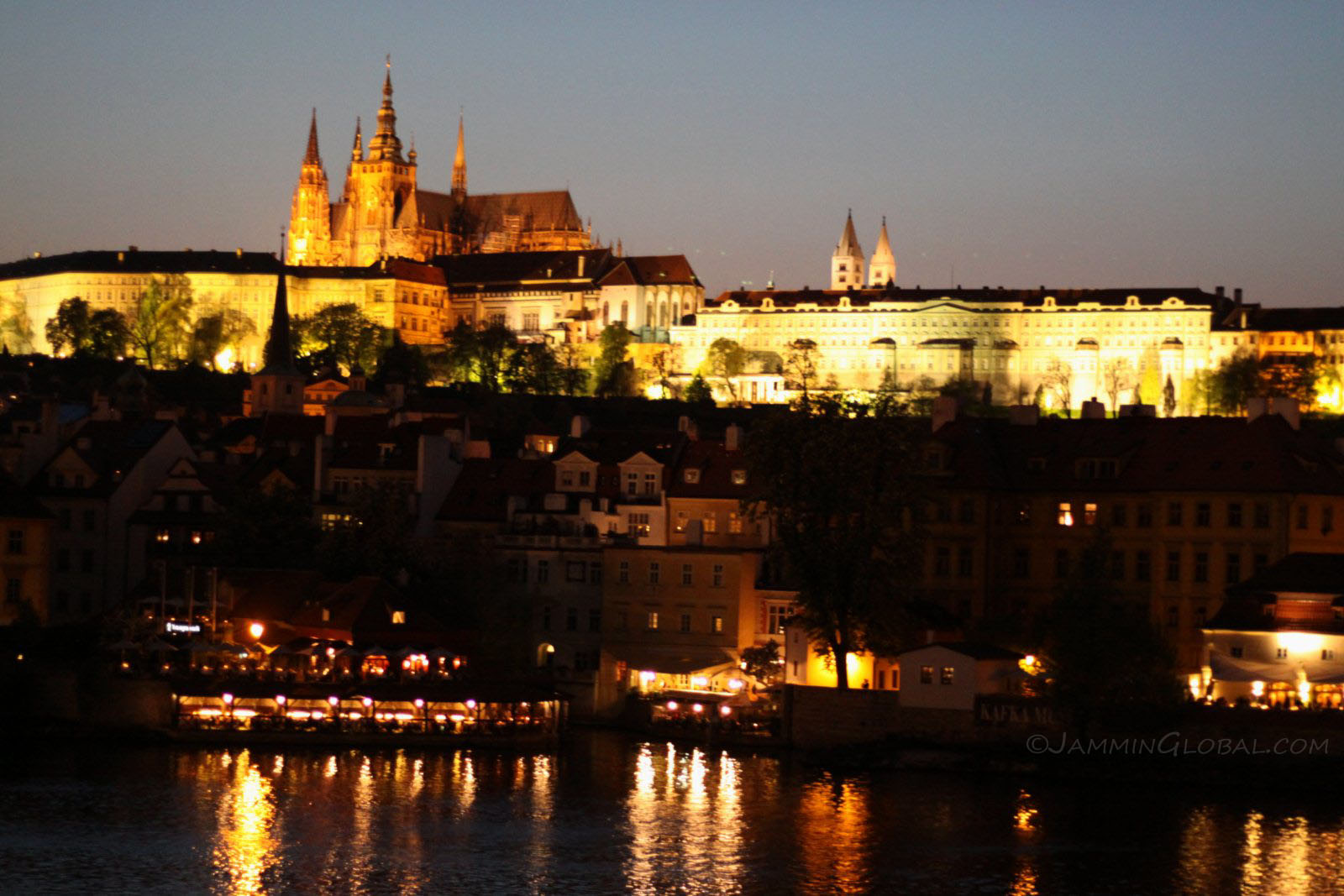
From the bridge, a grand view of Prague Castle and St Vitus Cathedral lit up in all its glory. Prague Castle is considered the largest ancient castle in the world and it's still in use today as the official seat of the president.
I enjoyed the weekend in Prague, especially the time spent with my close friend, Harjoth, who's been there through thick and thin. I'm glad that things worked out so that I could swing by and visit him on this journey, of which he is a major part of as he acted as a bouncing board for all my ideas in the years leading up to this trip.
Prague has always been one of the places on the to-do list because it seemed so captivating with its fabulous architecture and long-lived history. In the two days I spent there, I was able to marvel in some of its glory and wished to come back again to spend more time getting beneath the tourist facade.